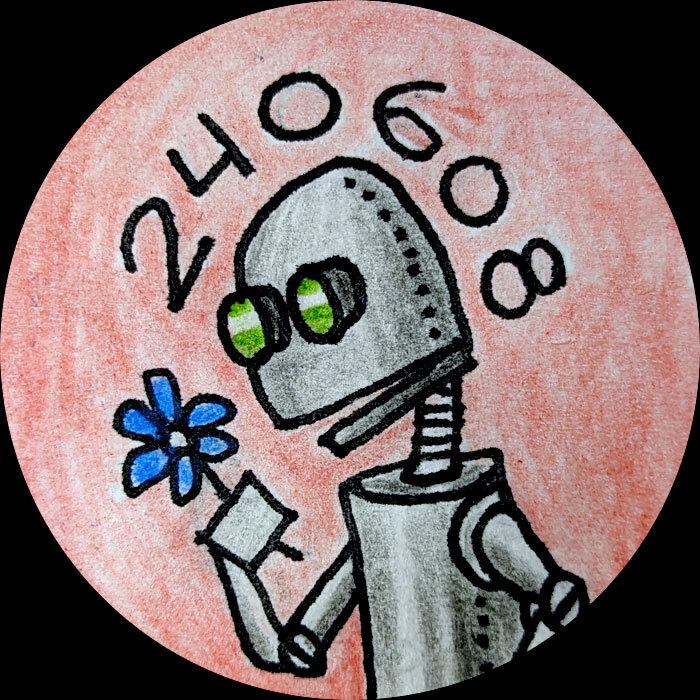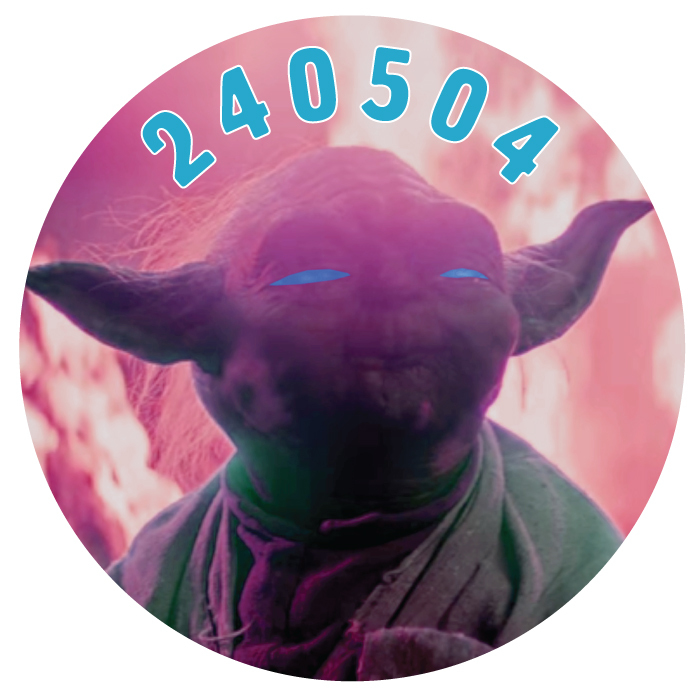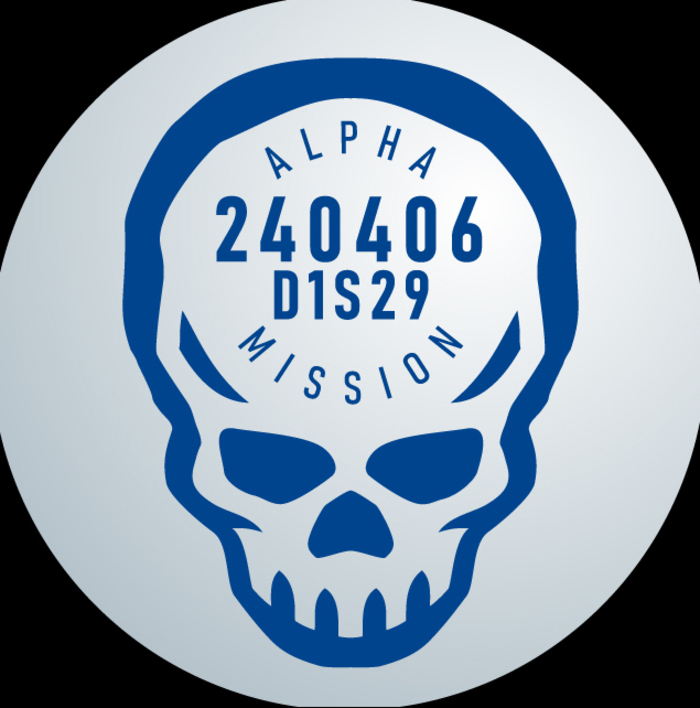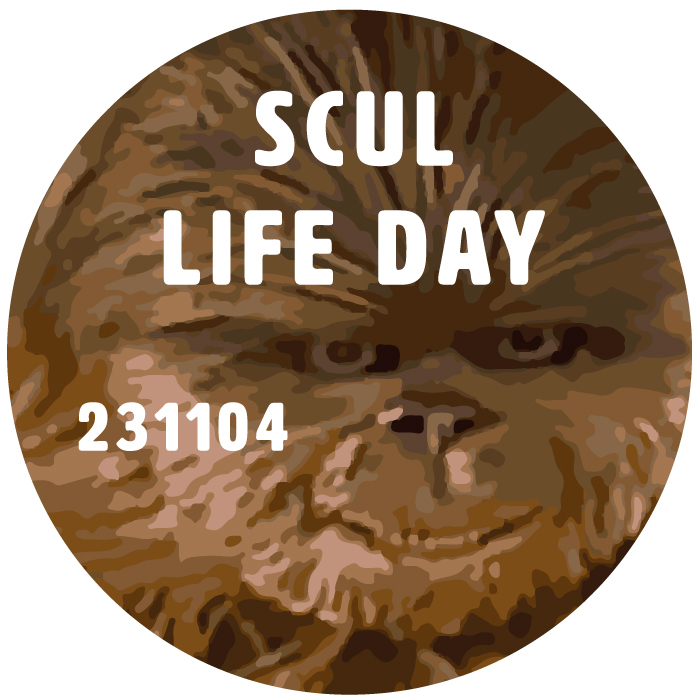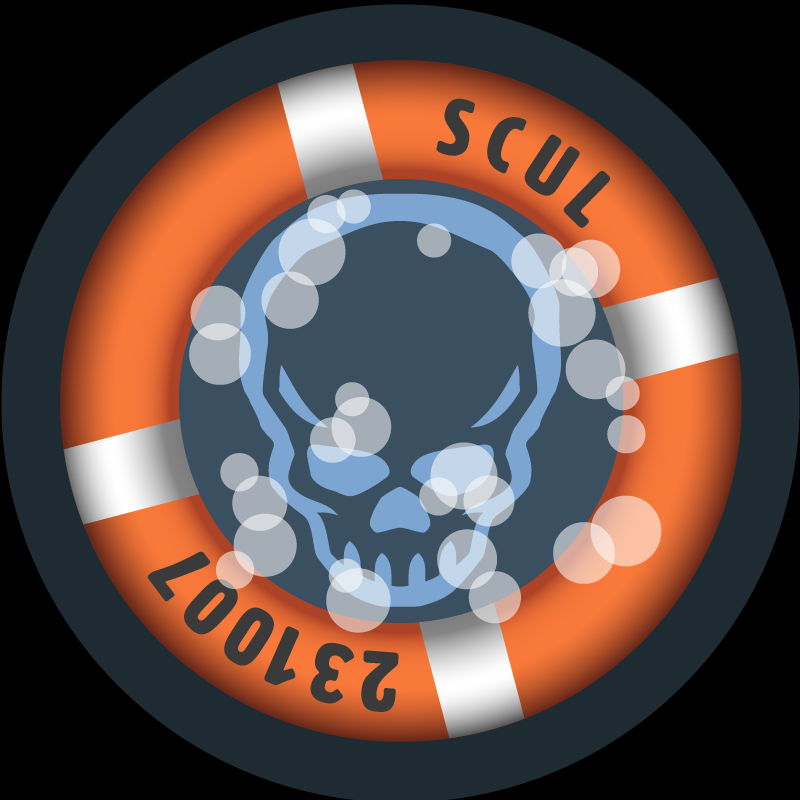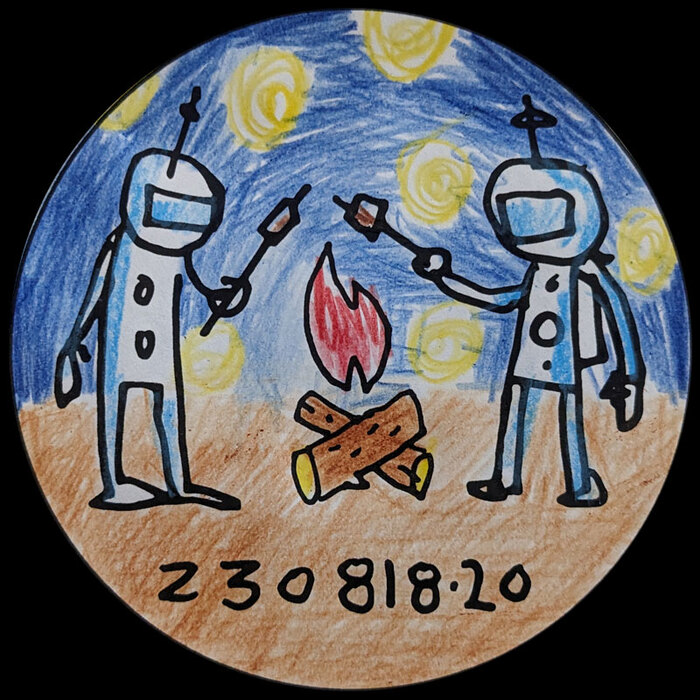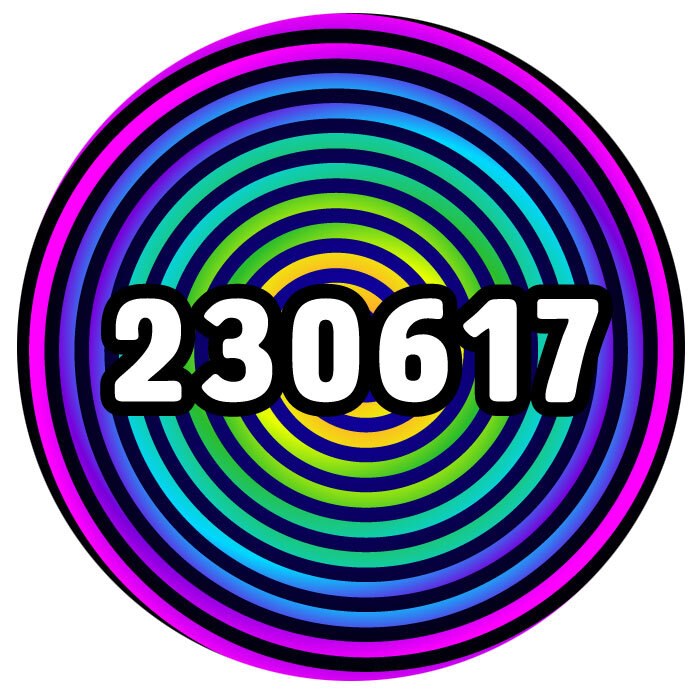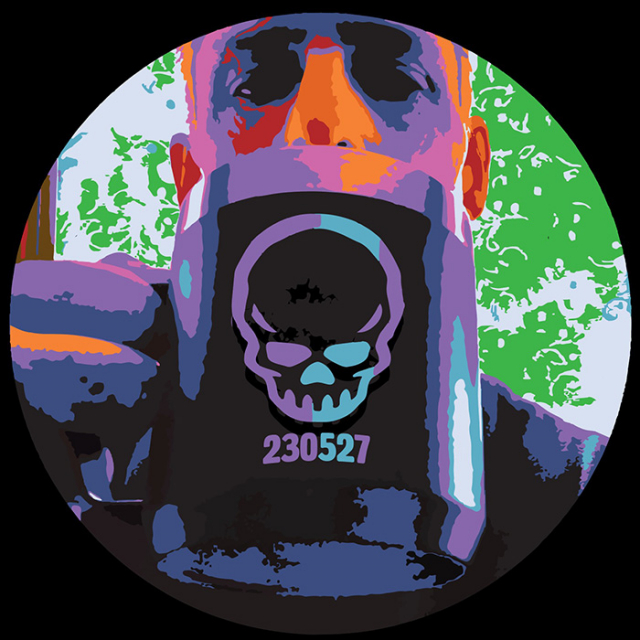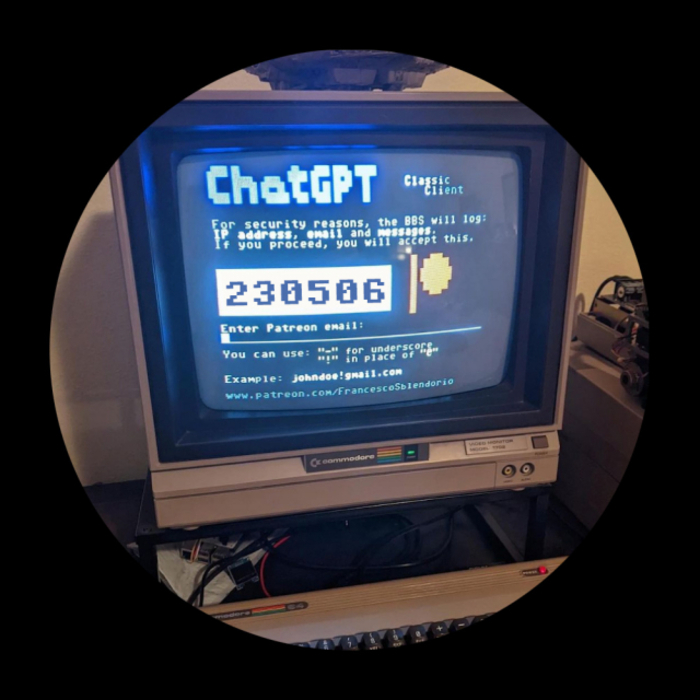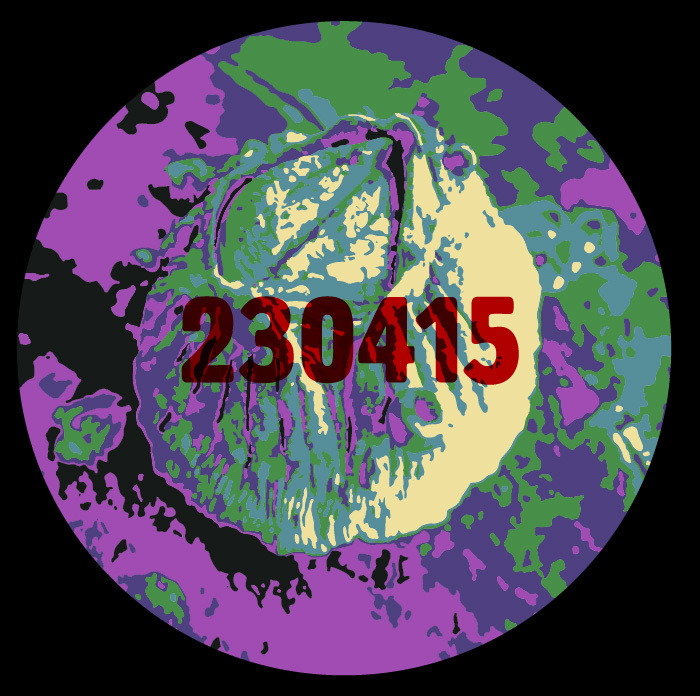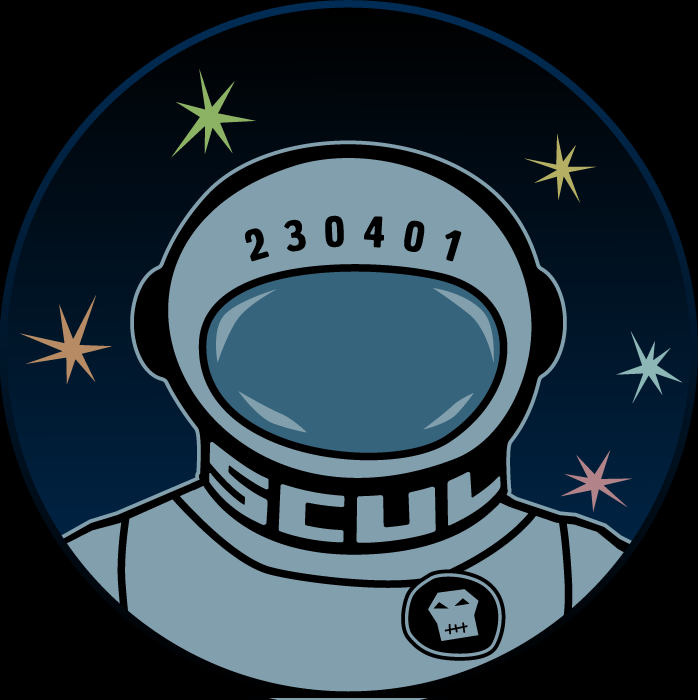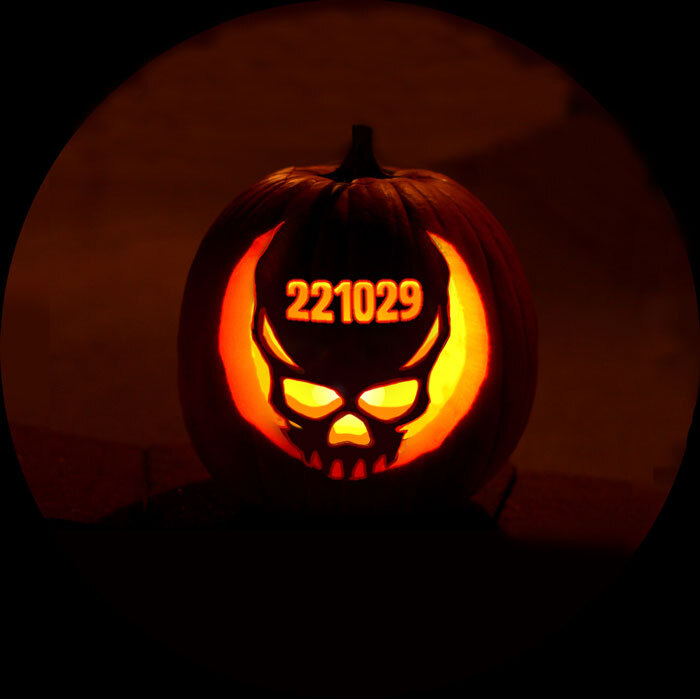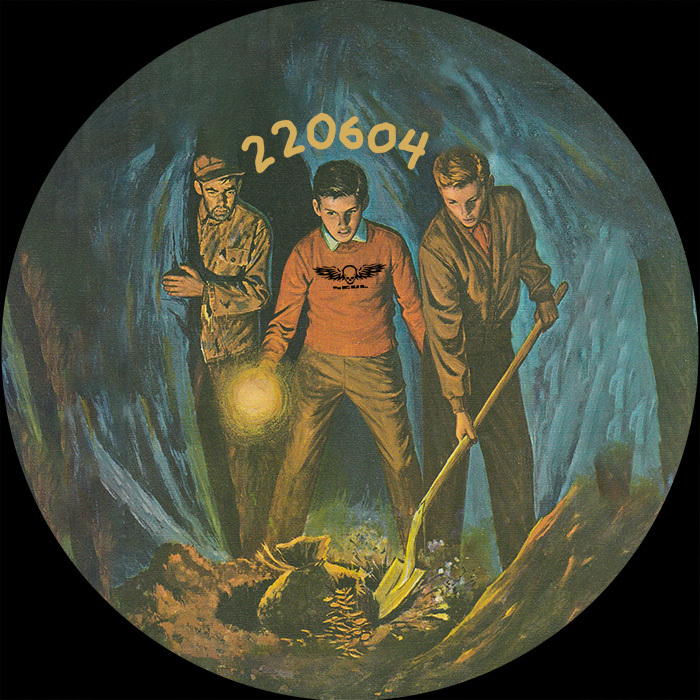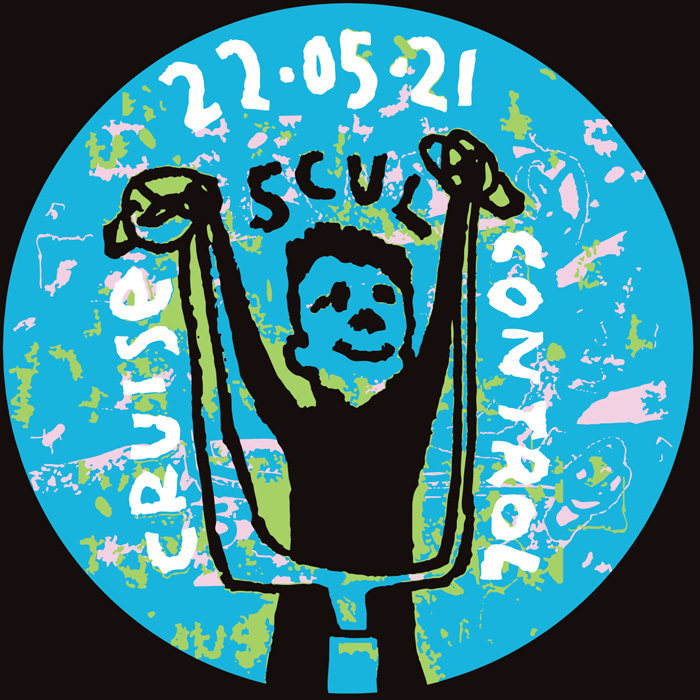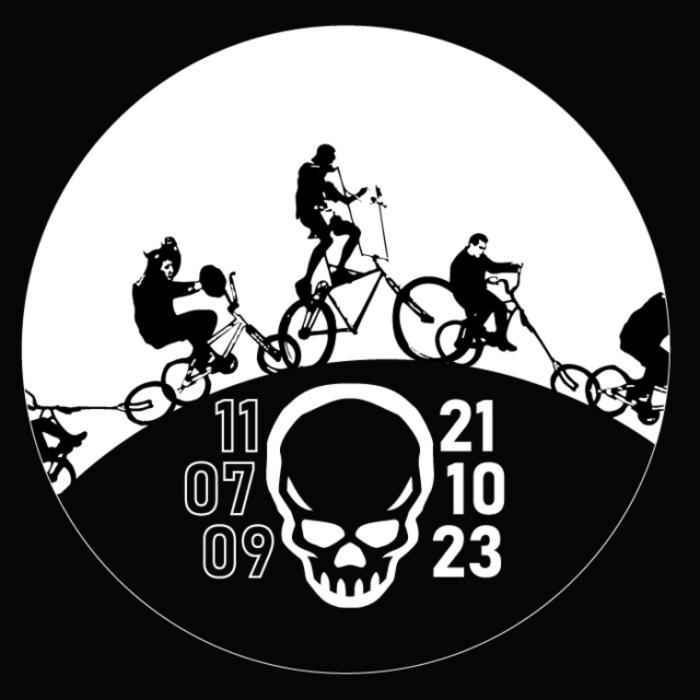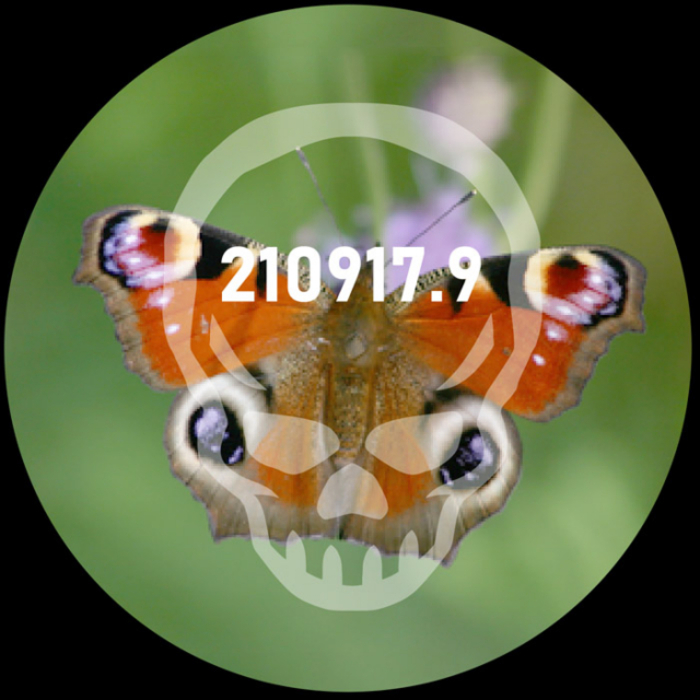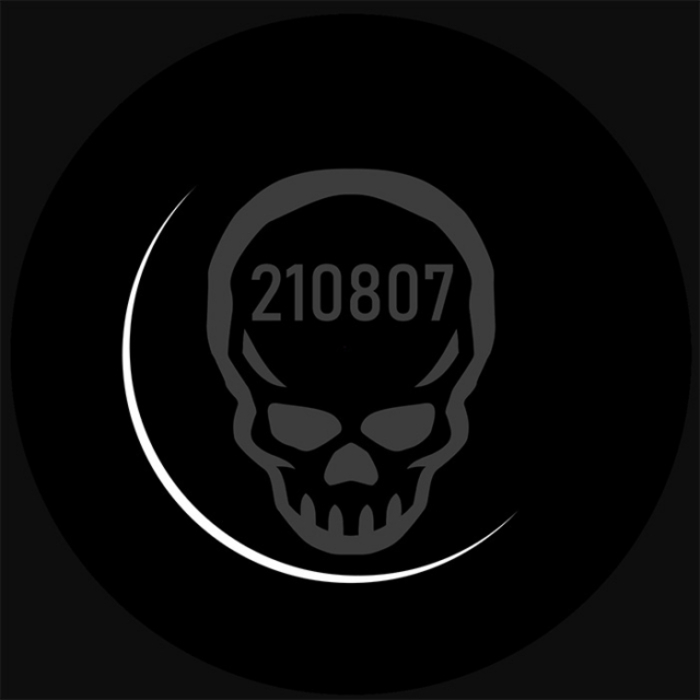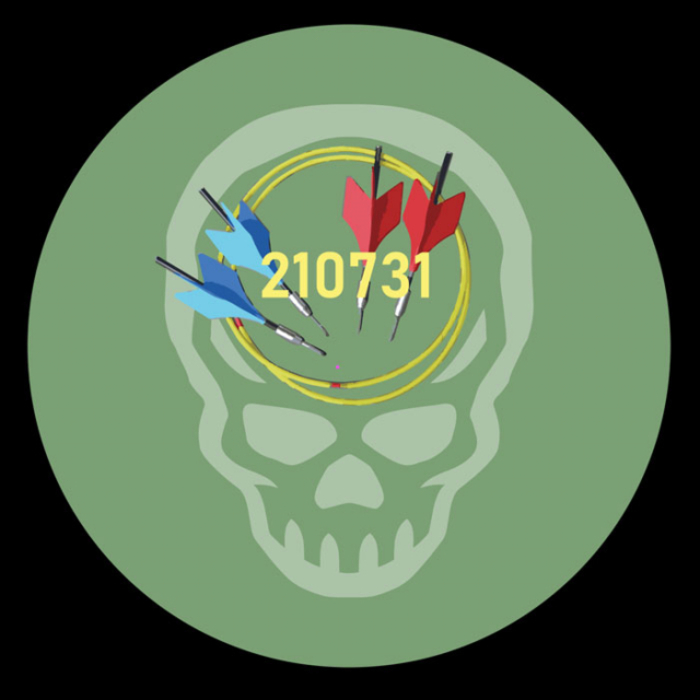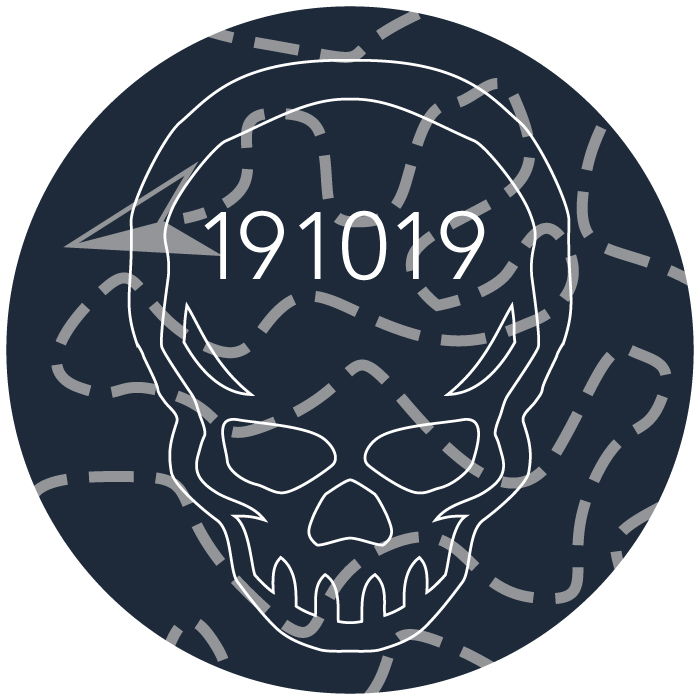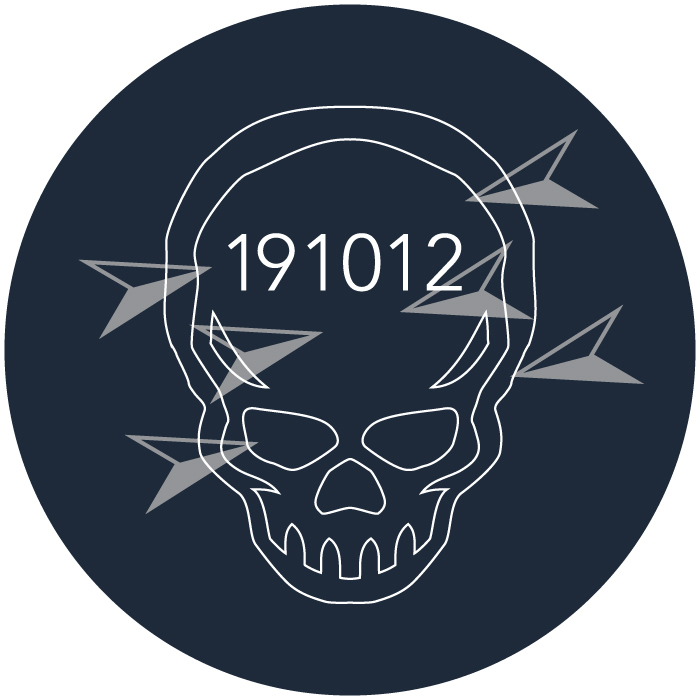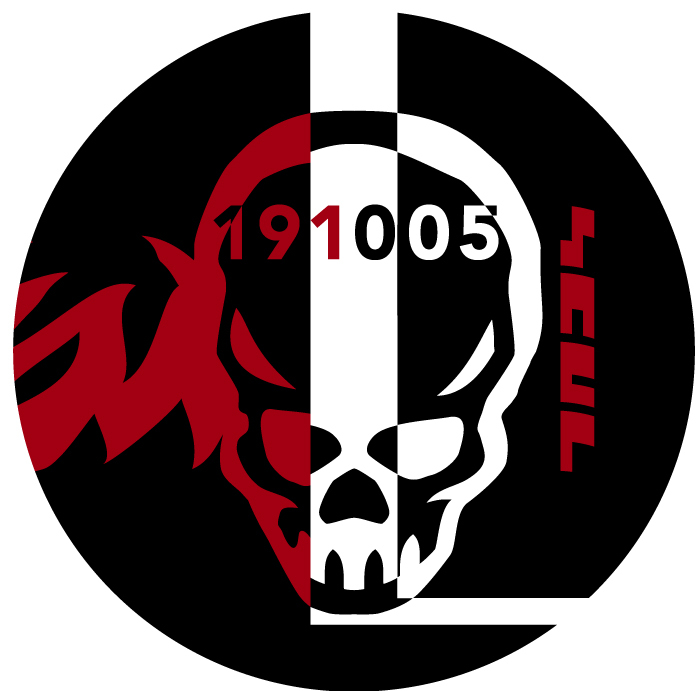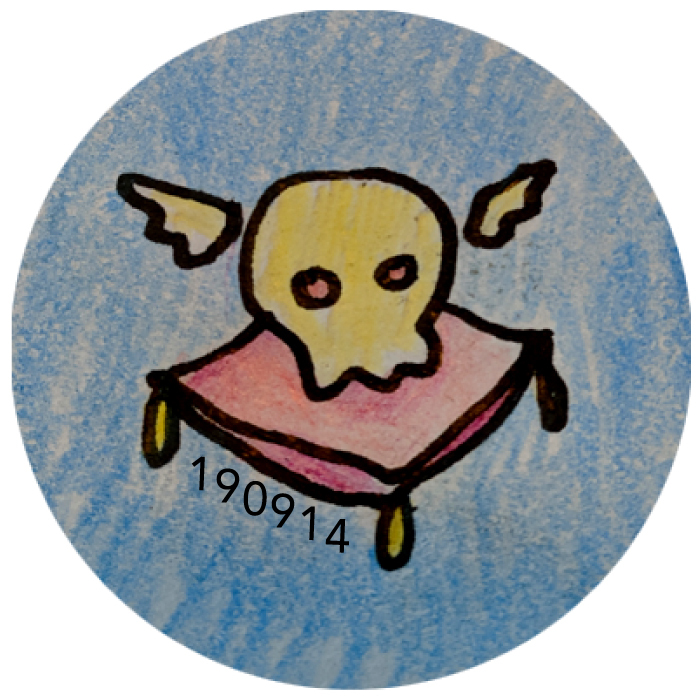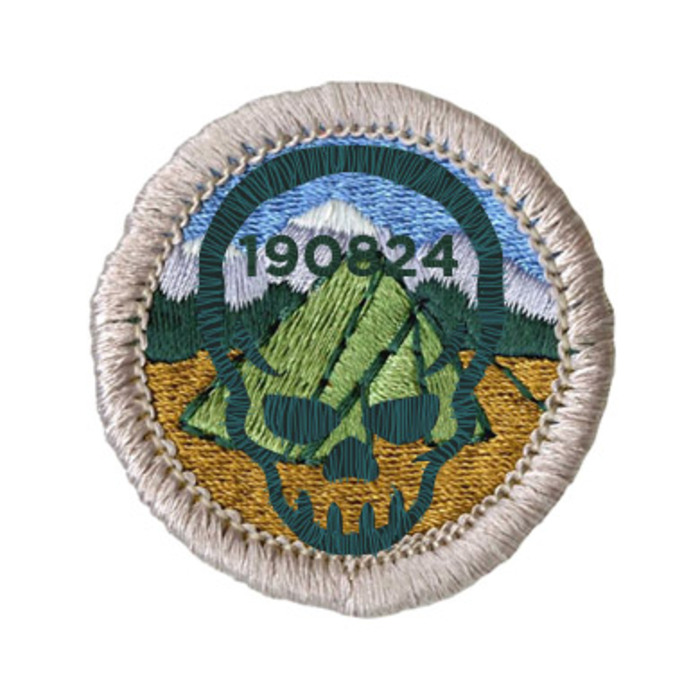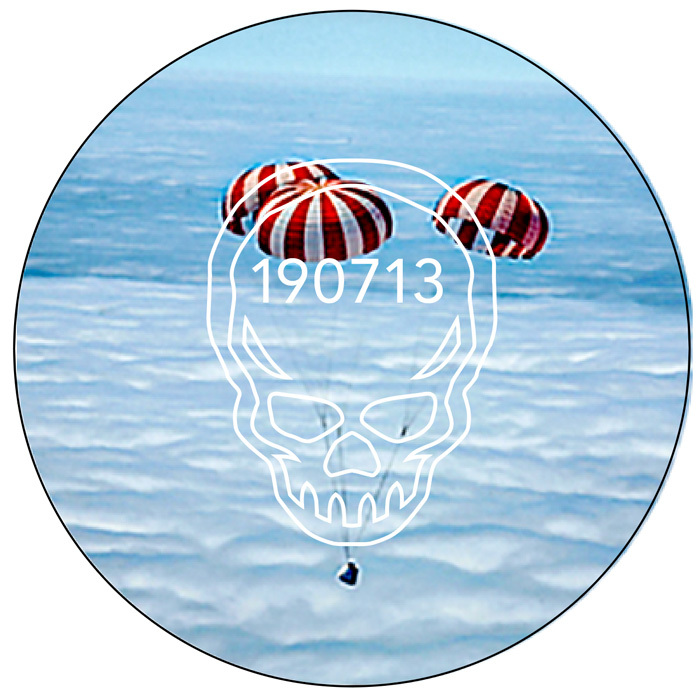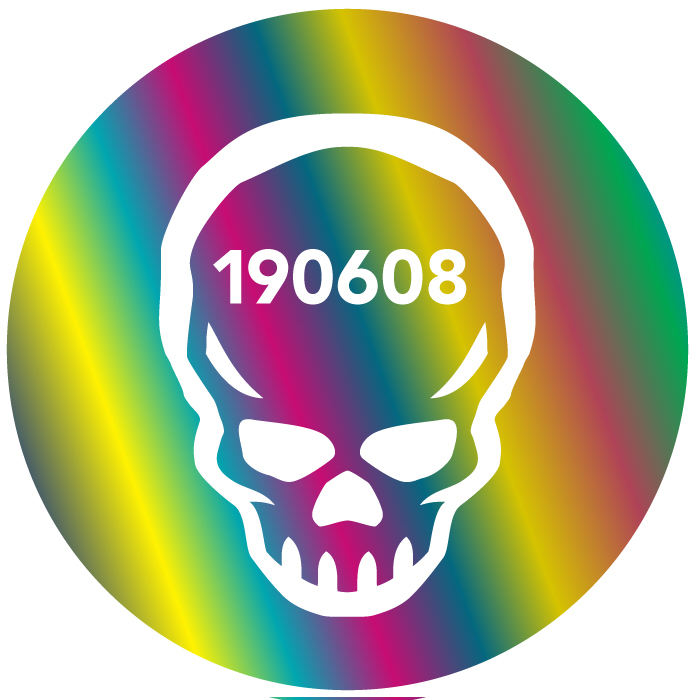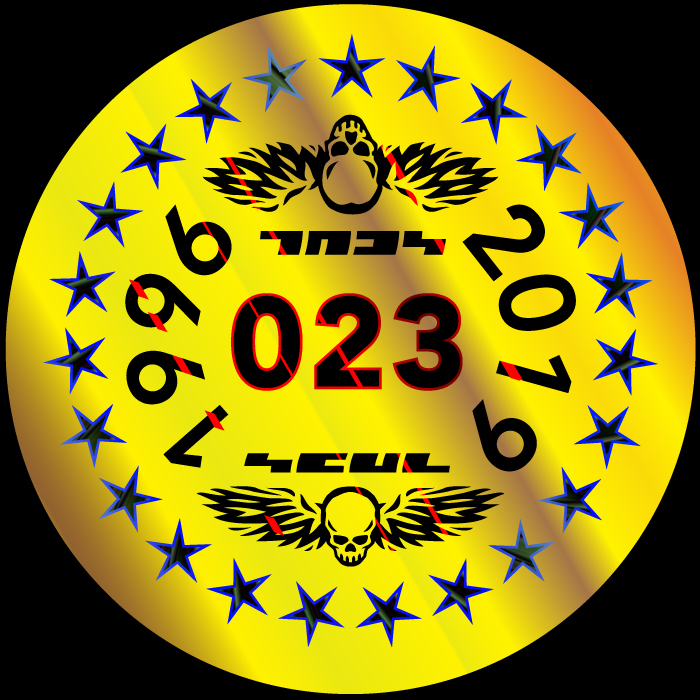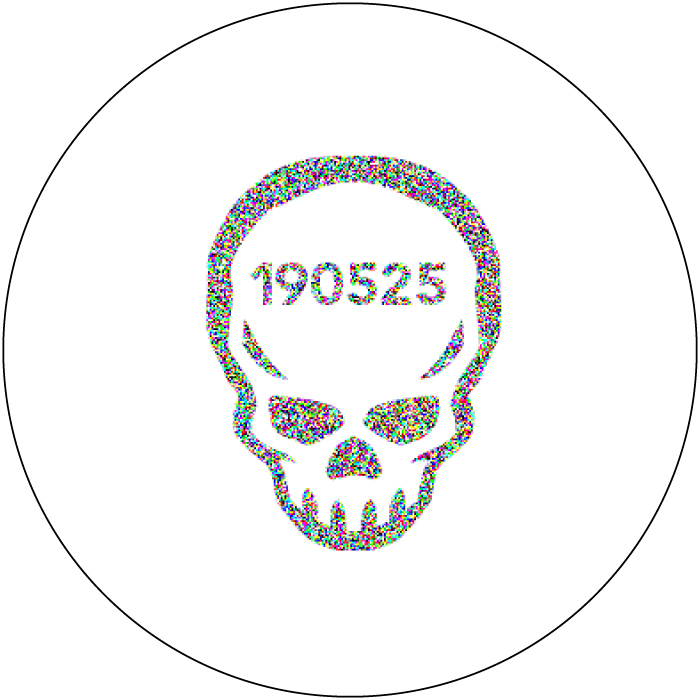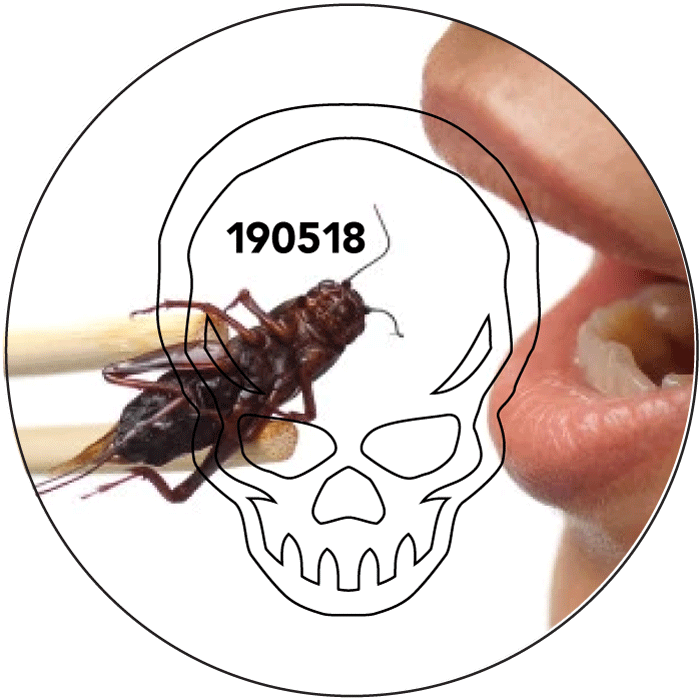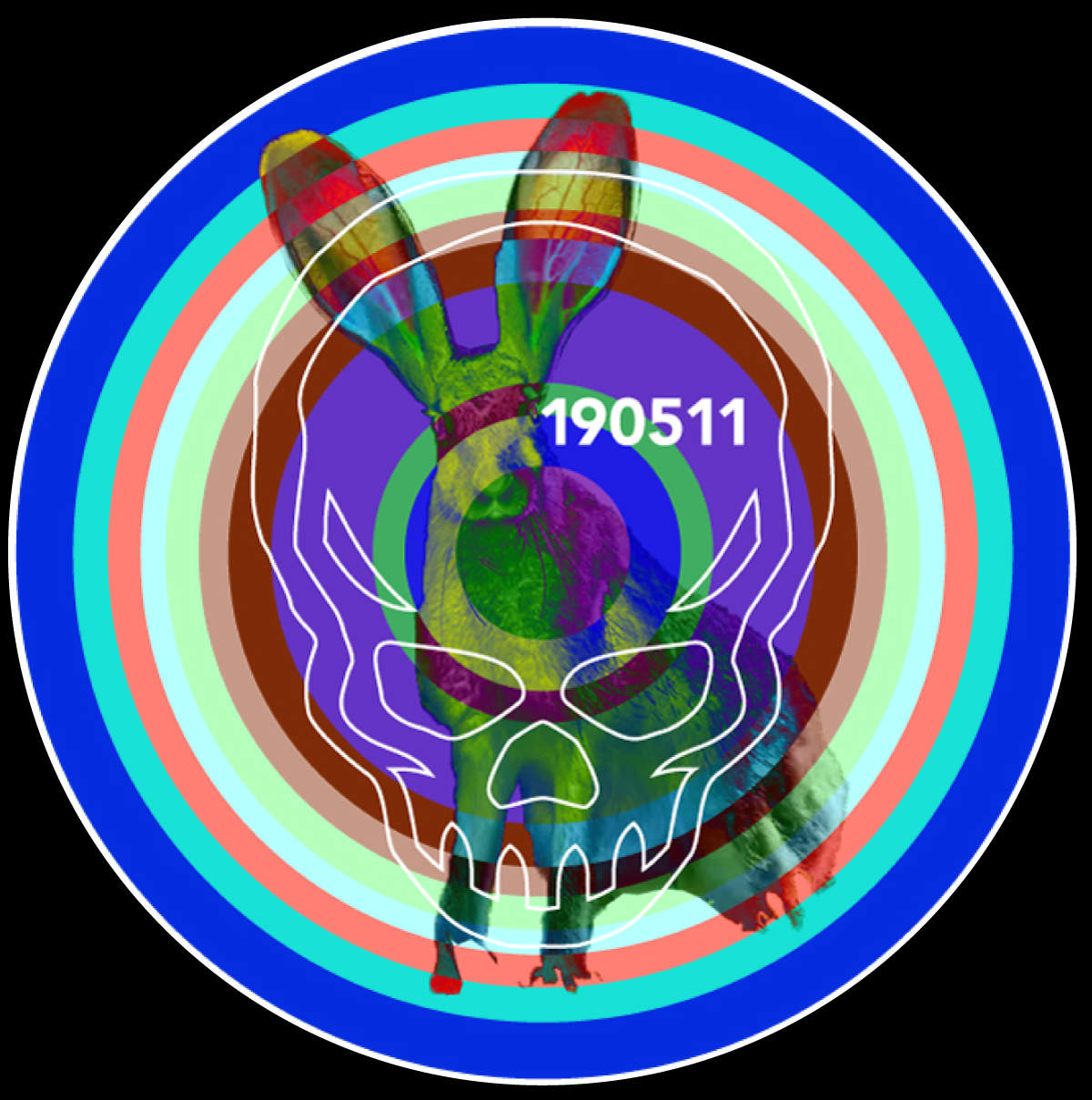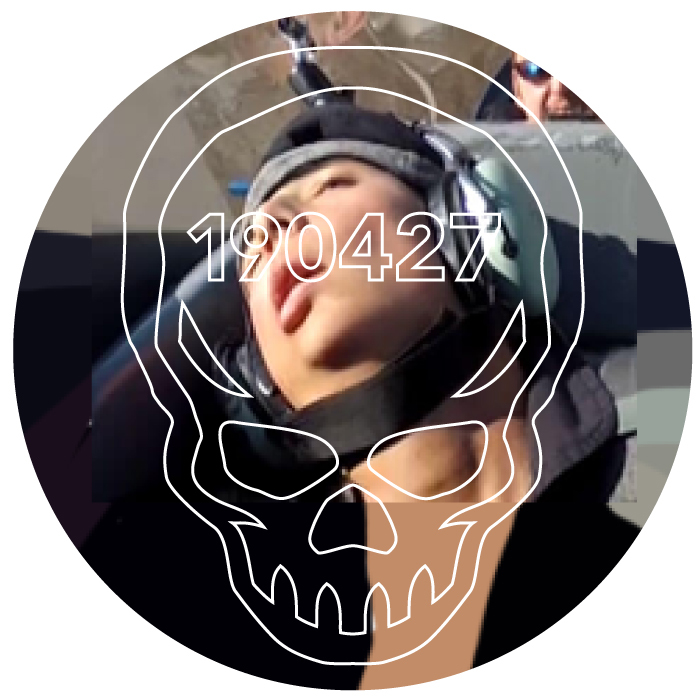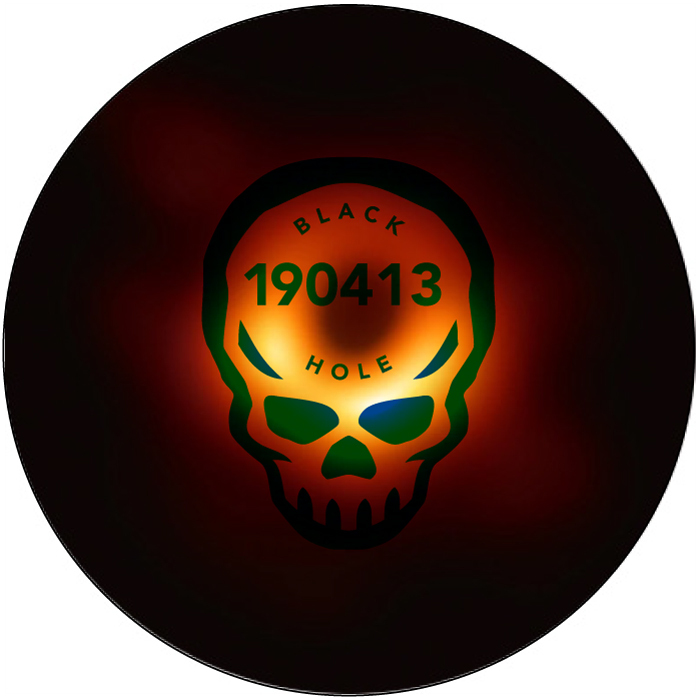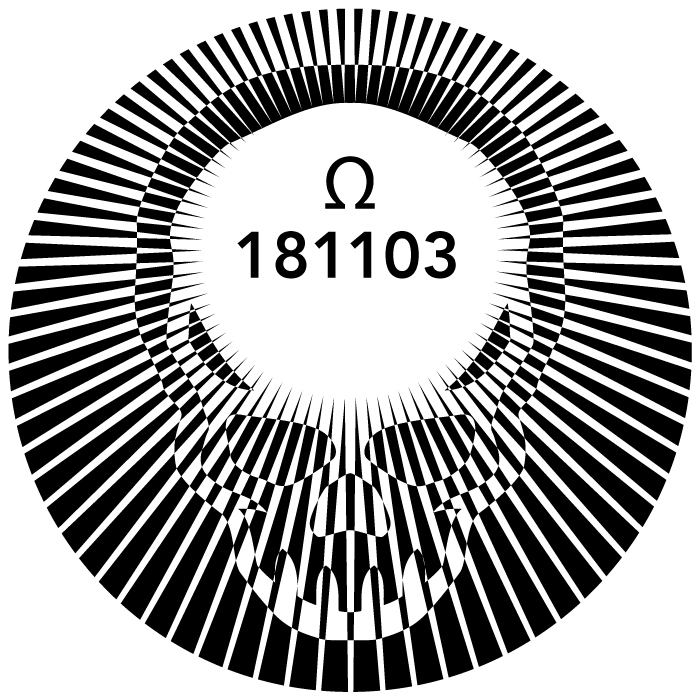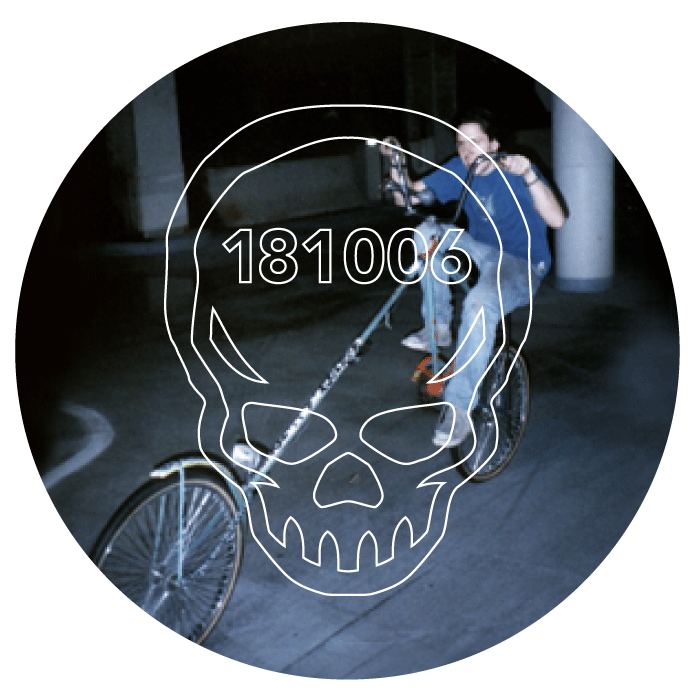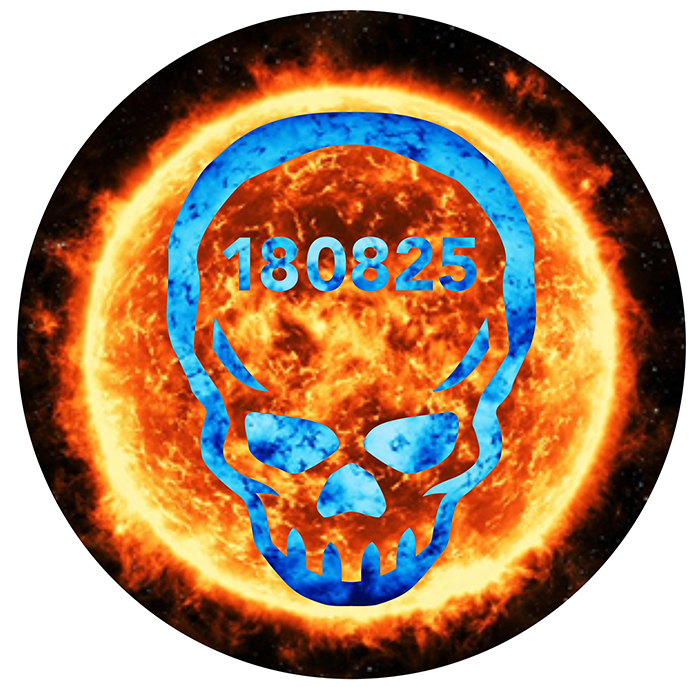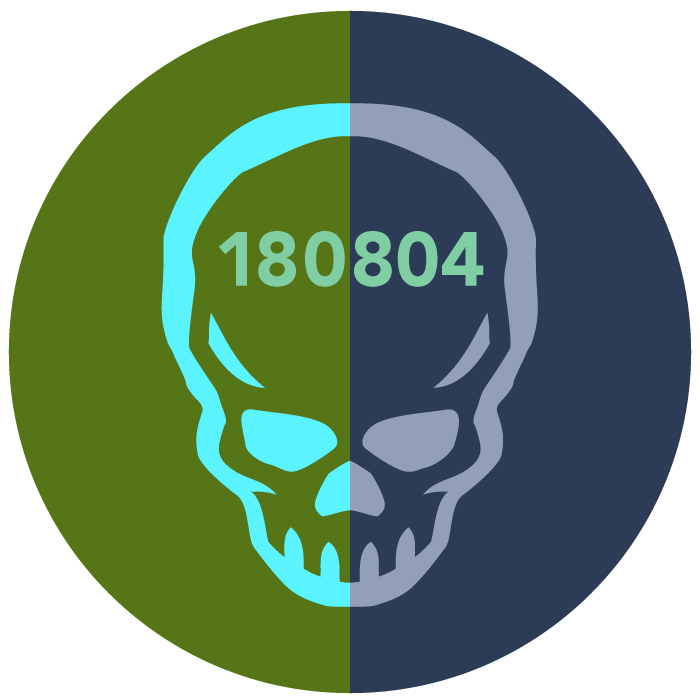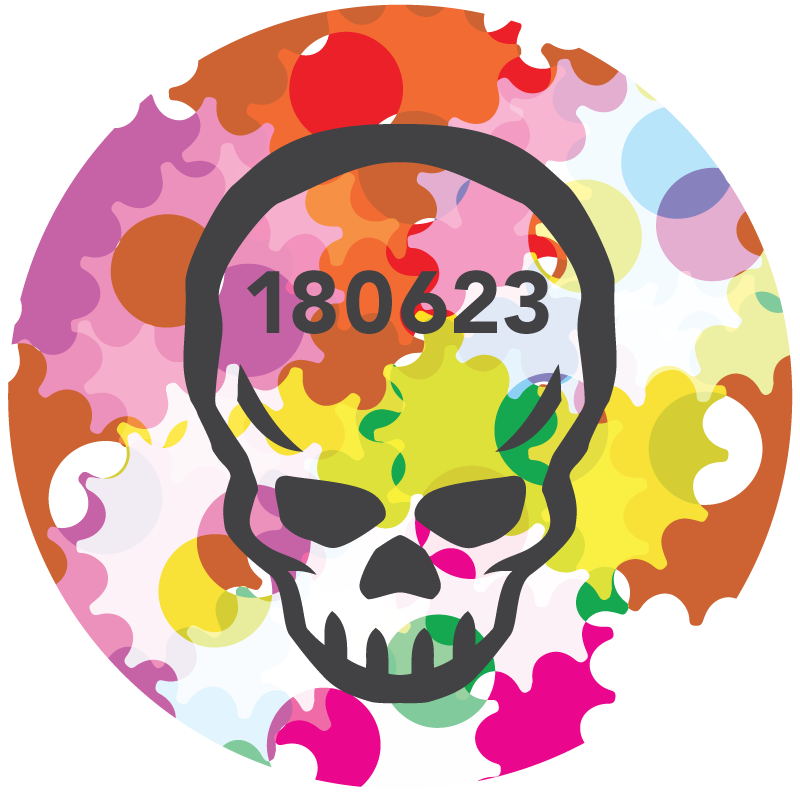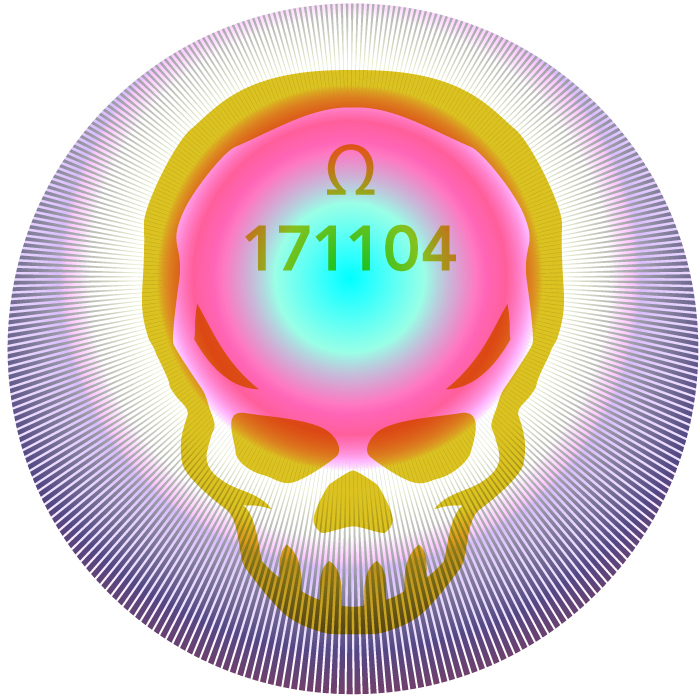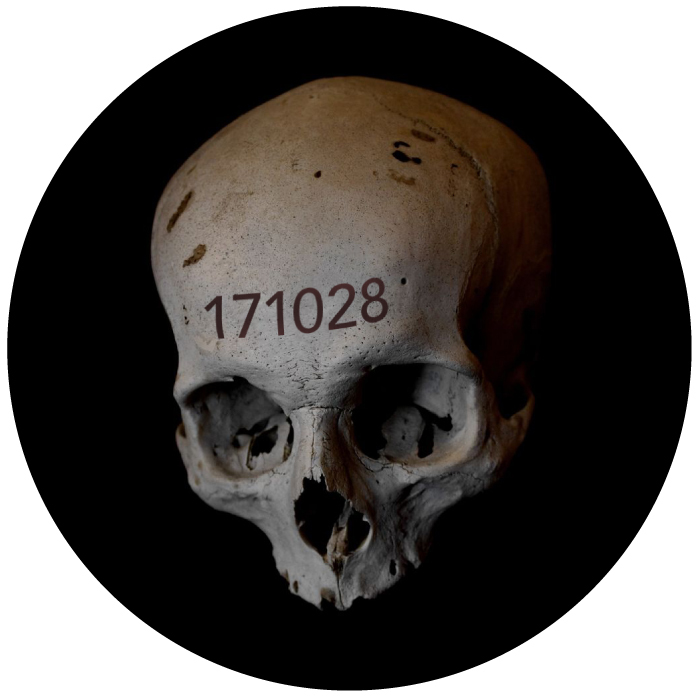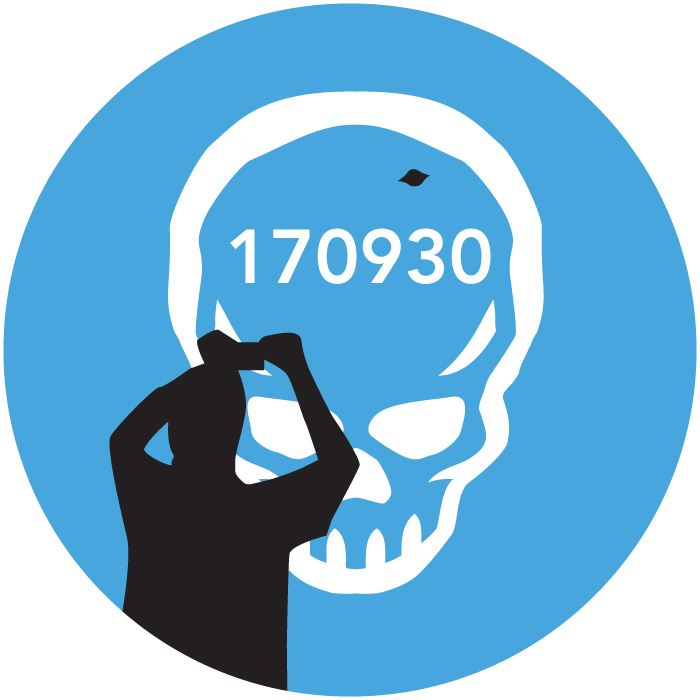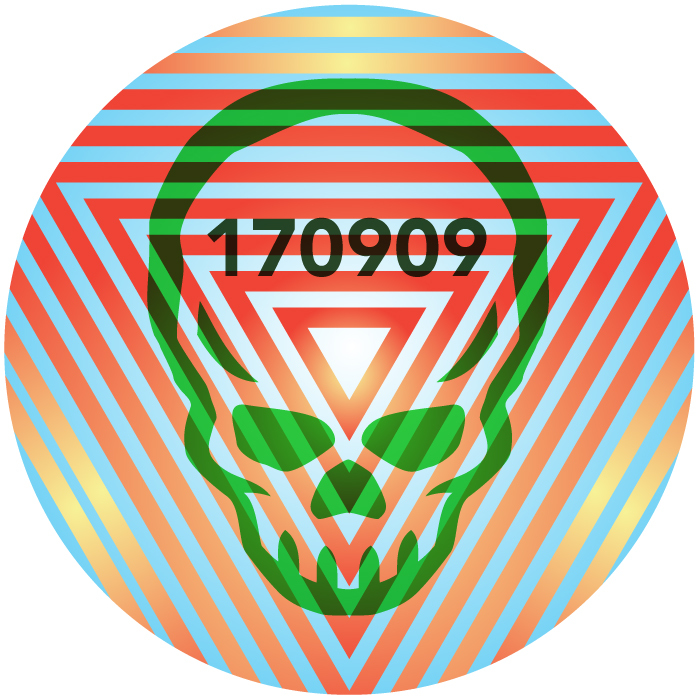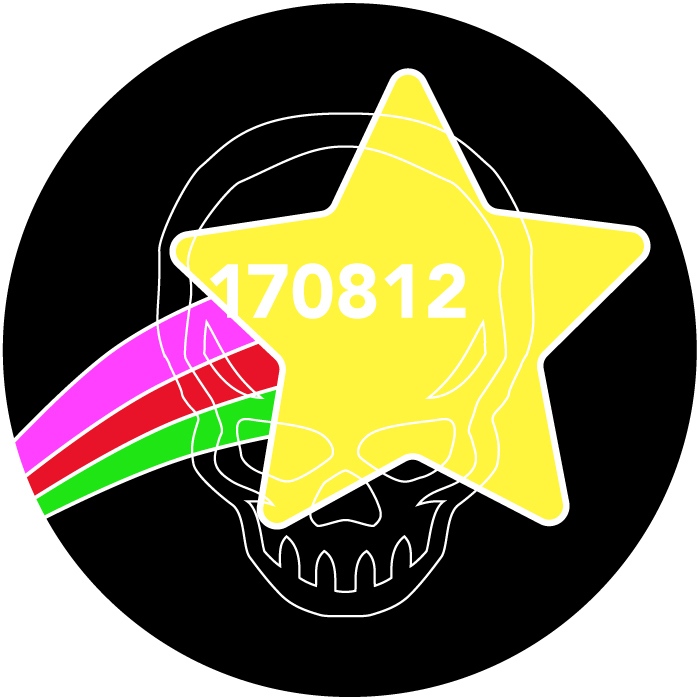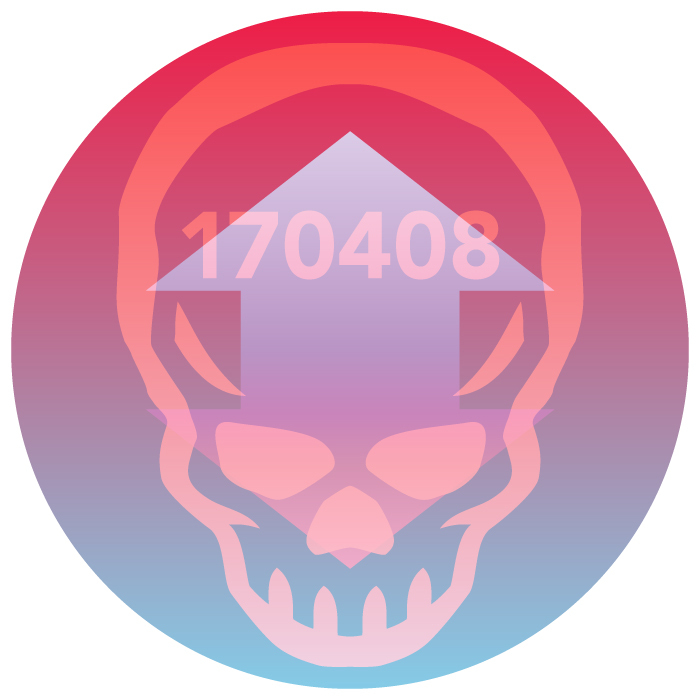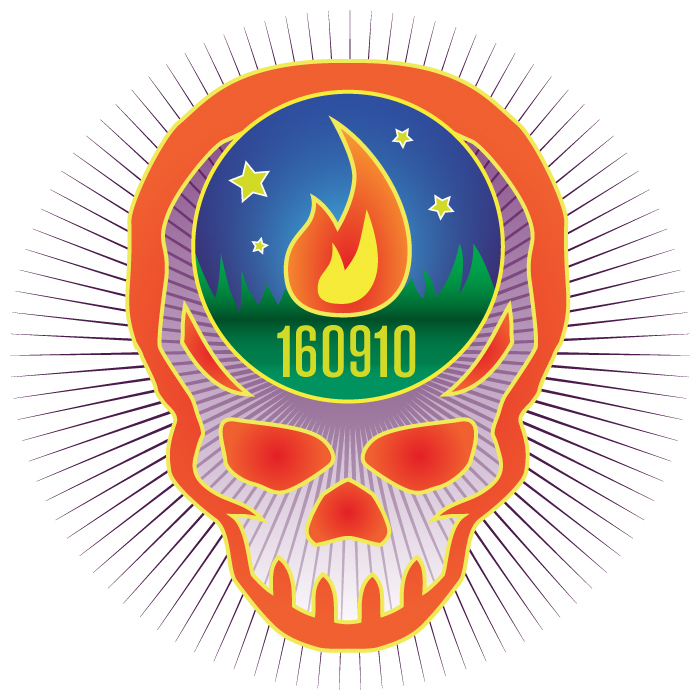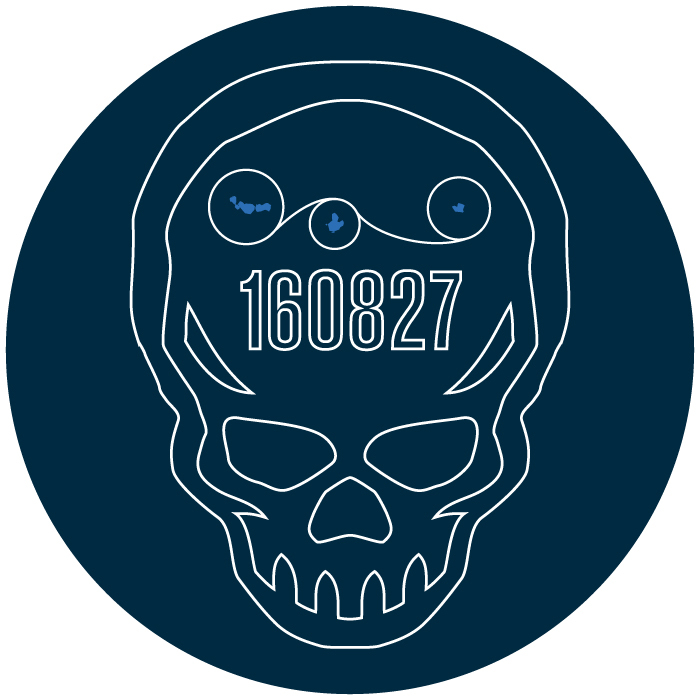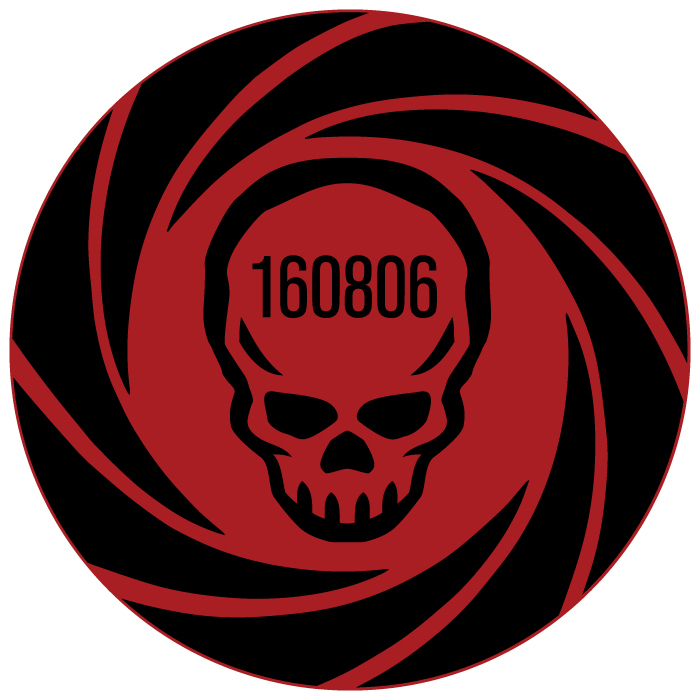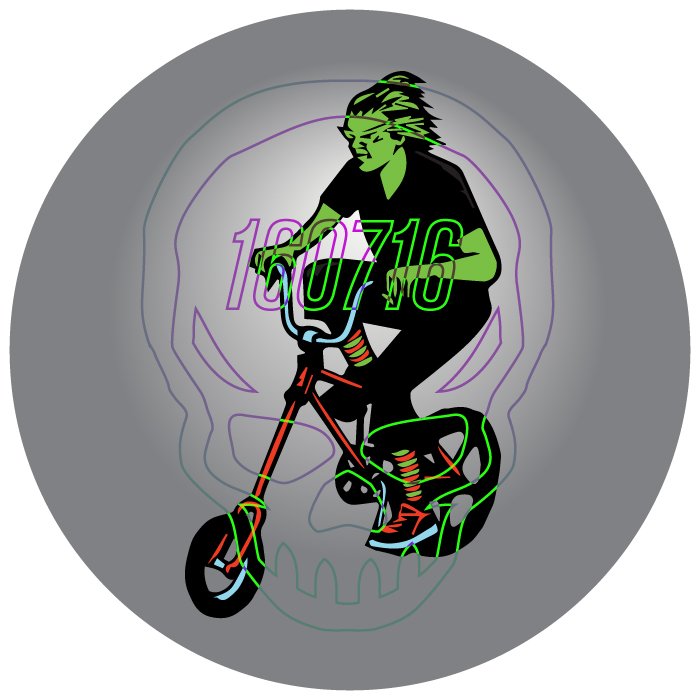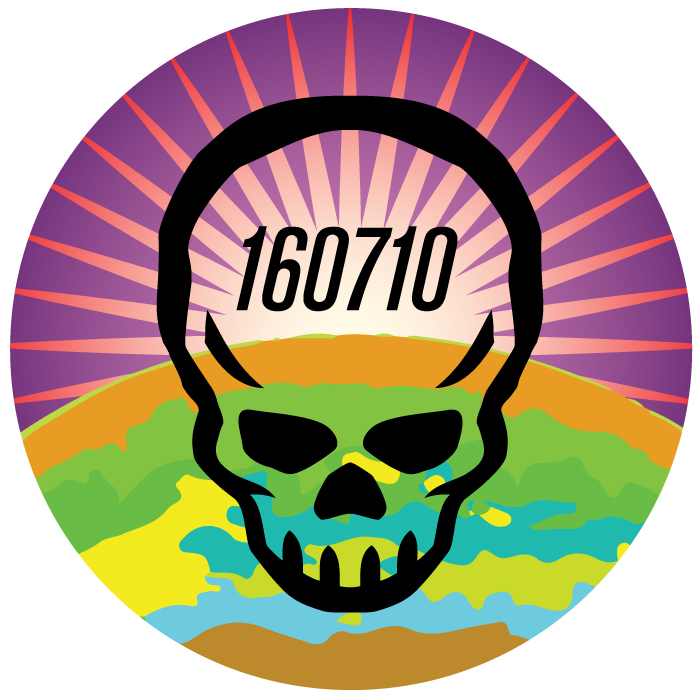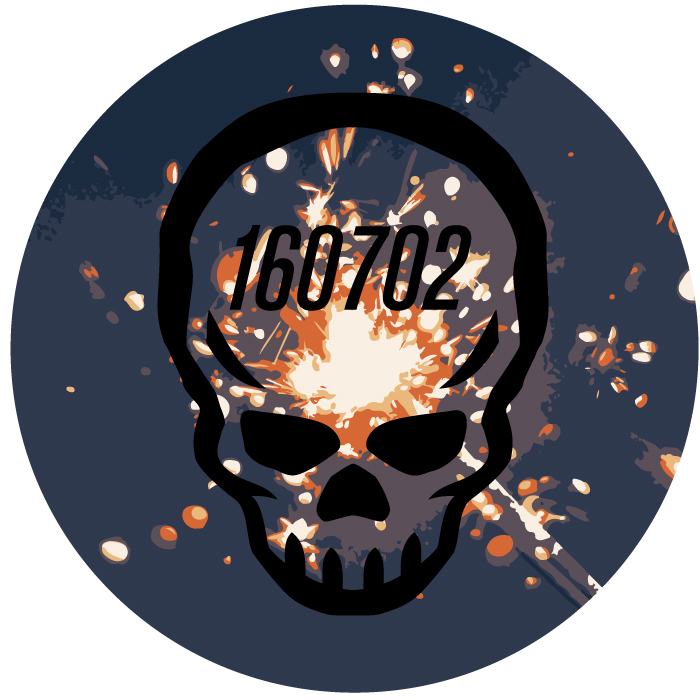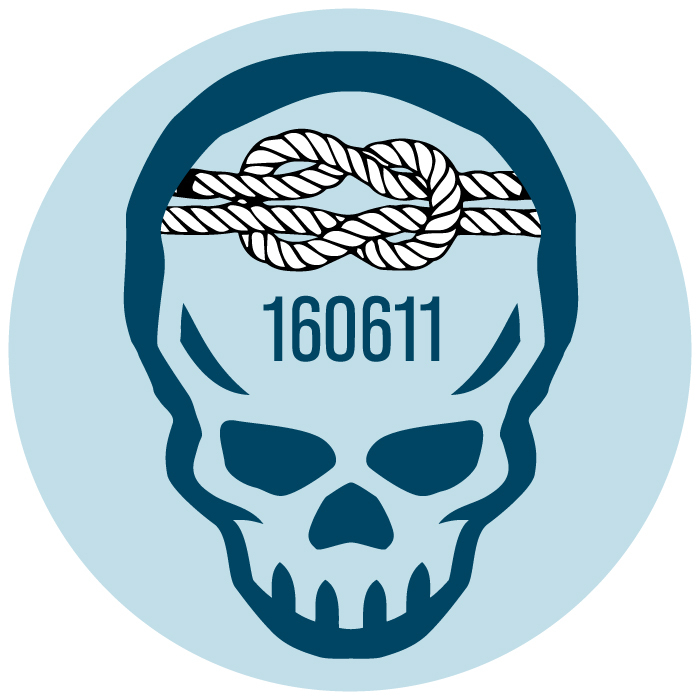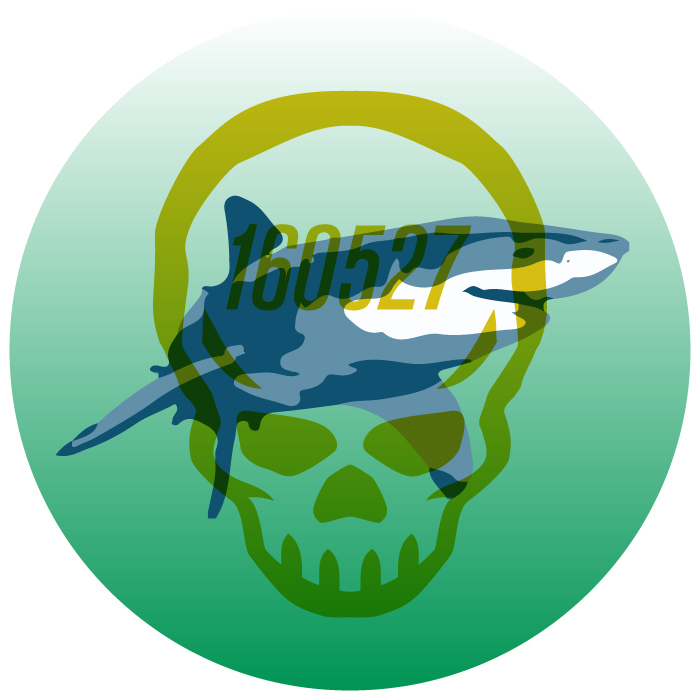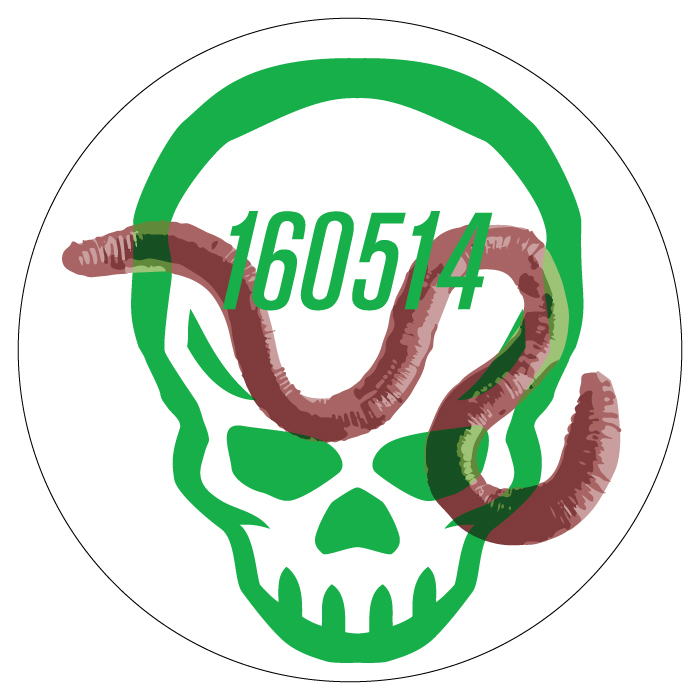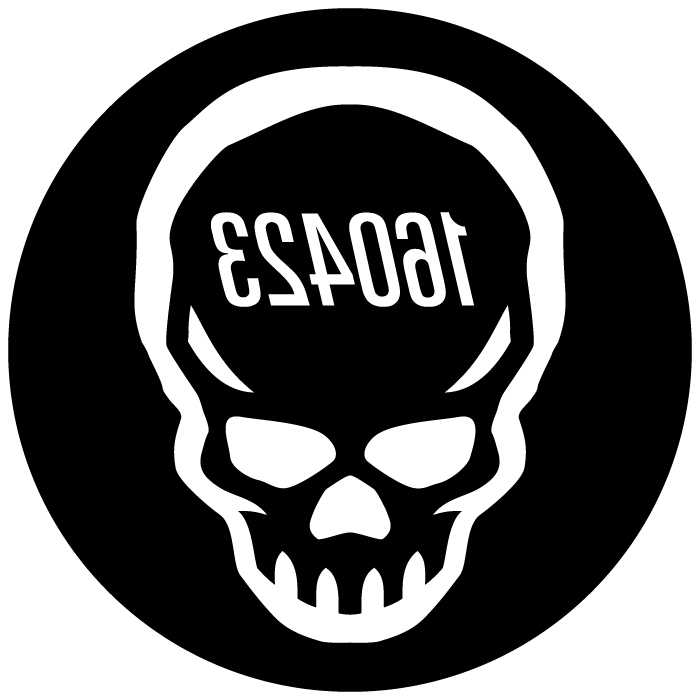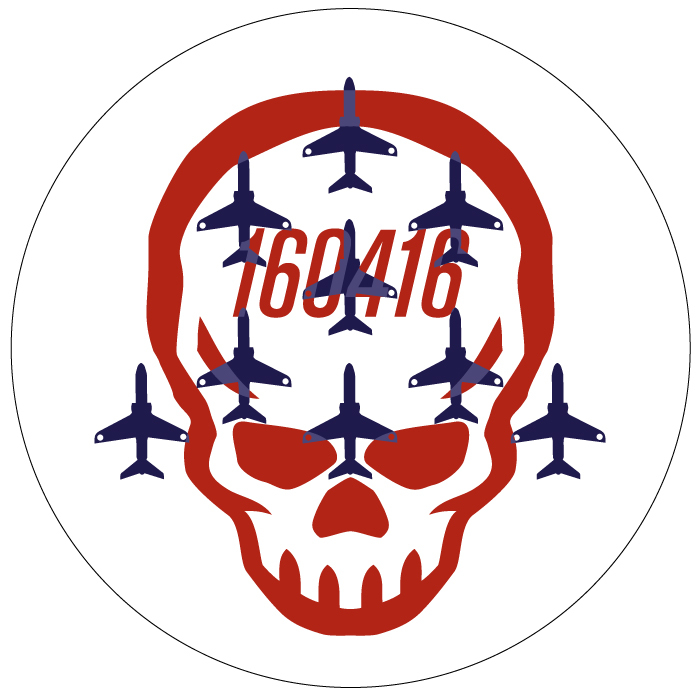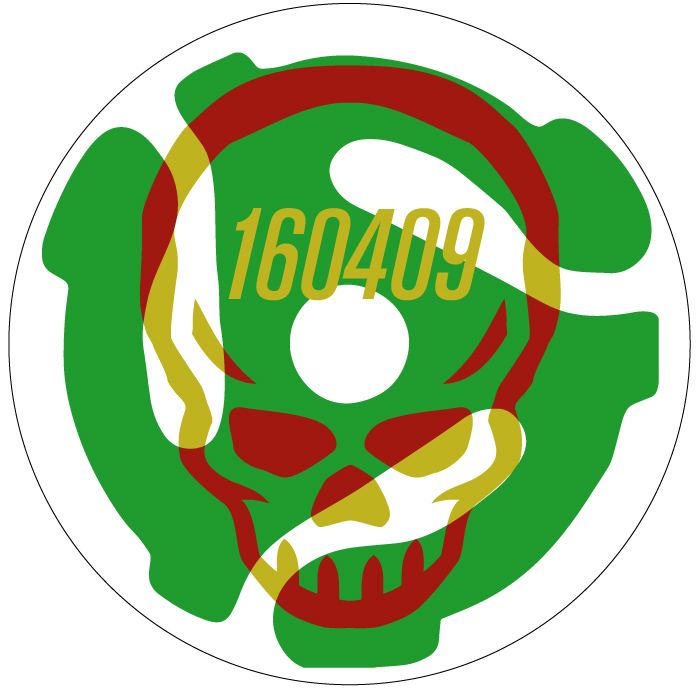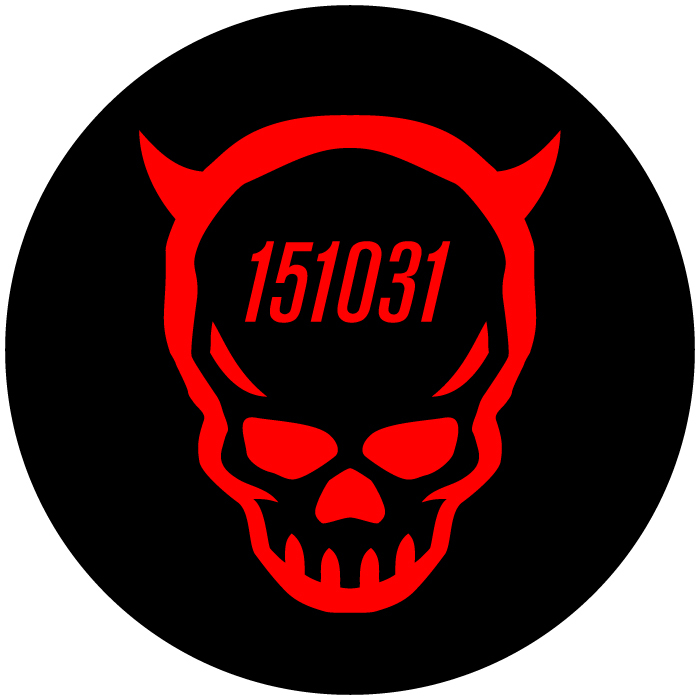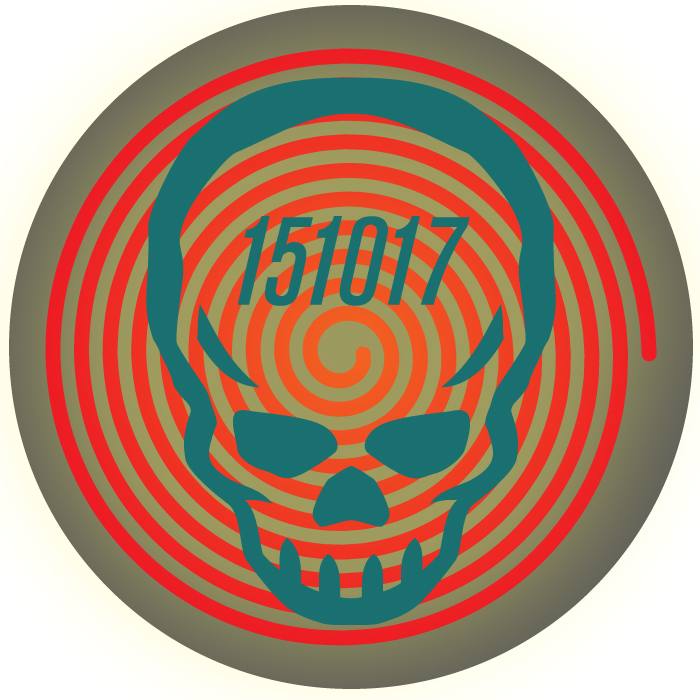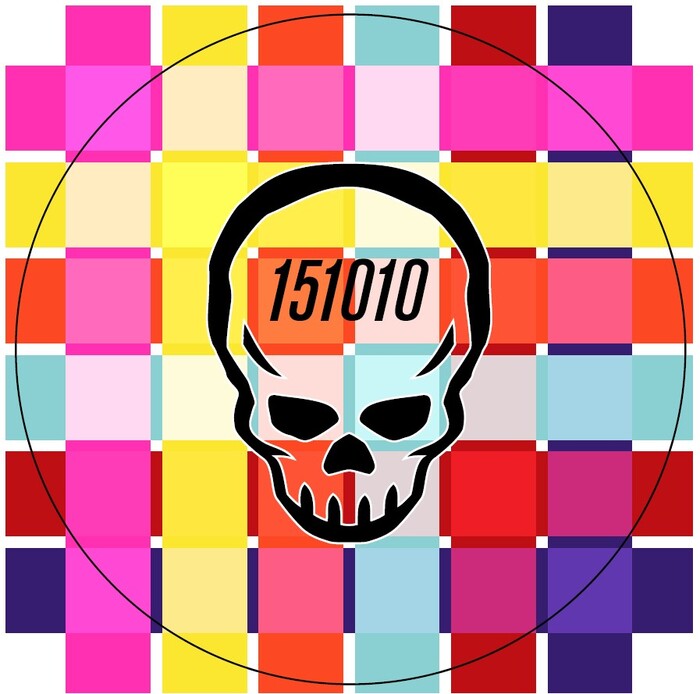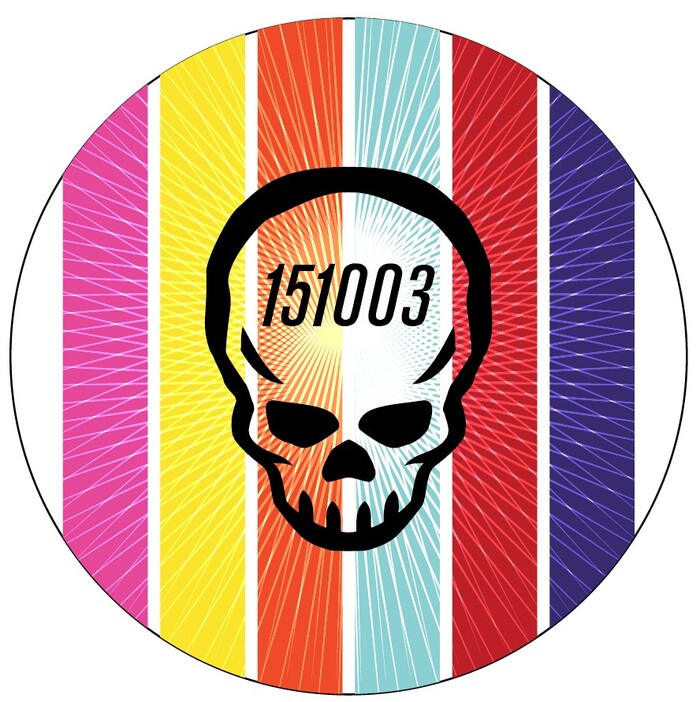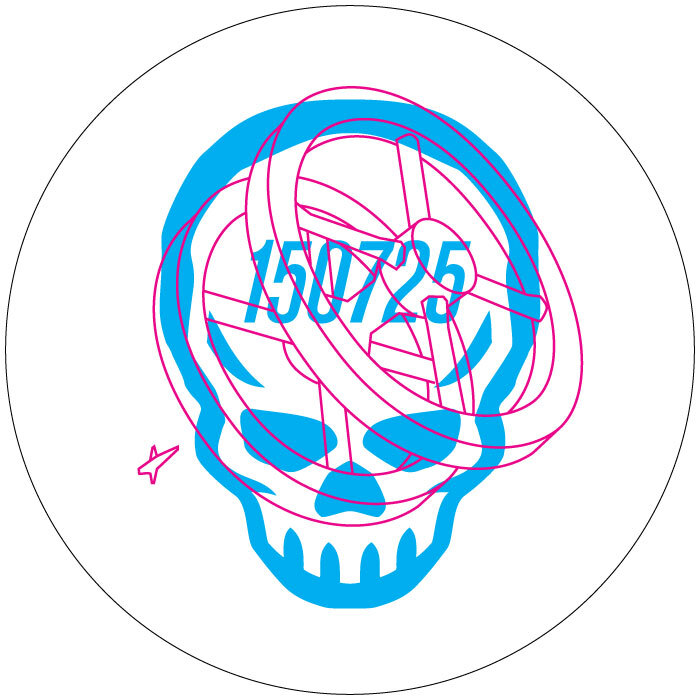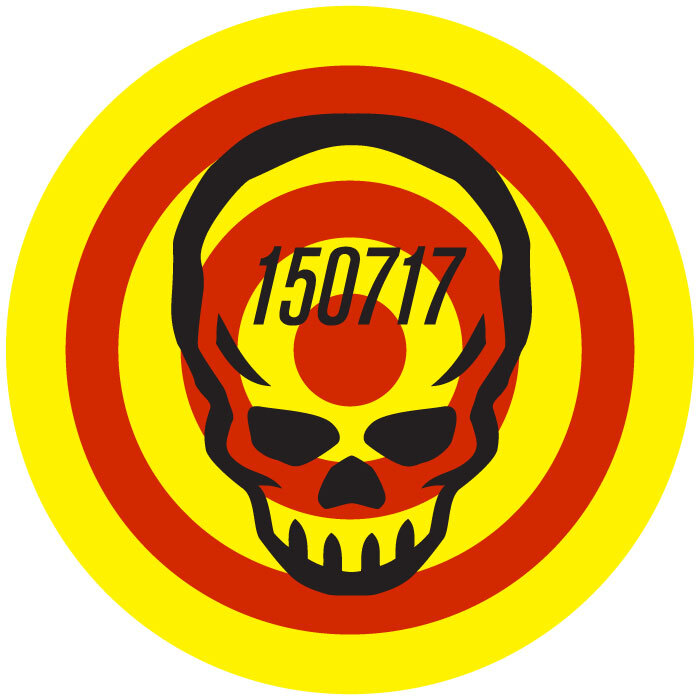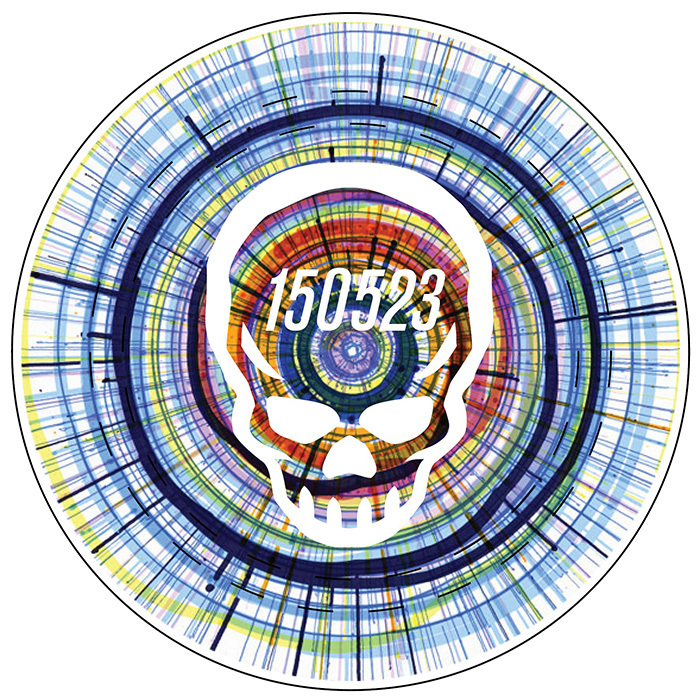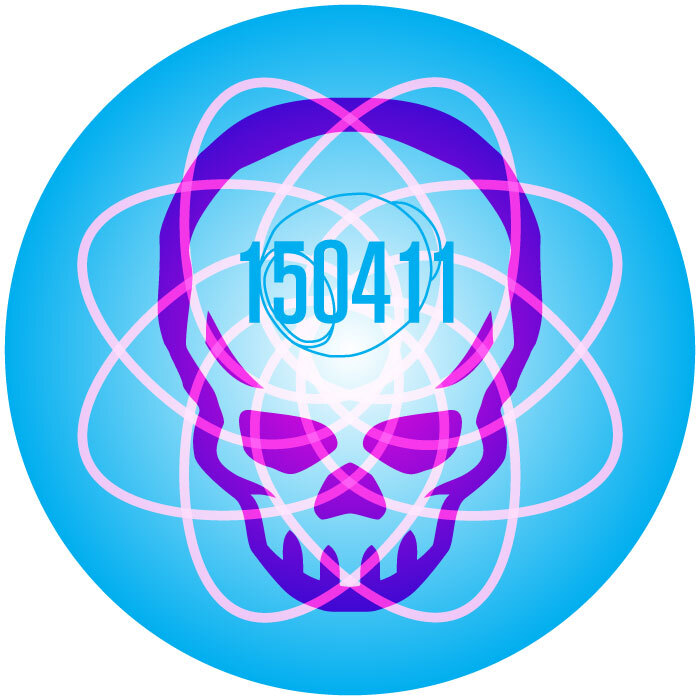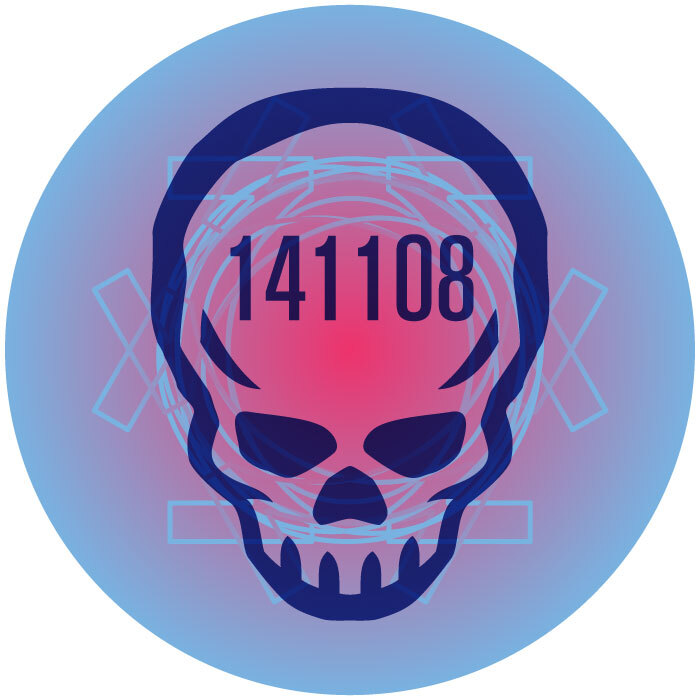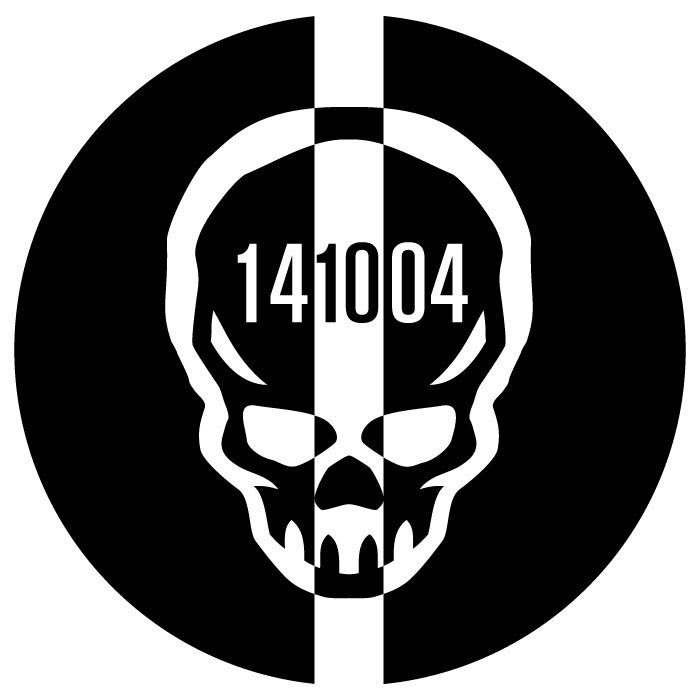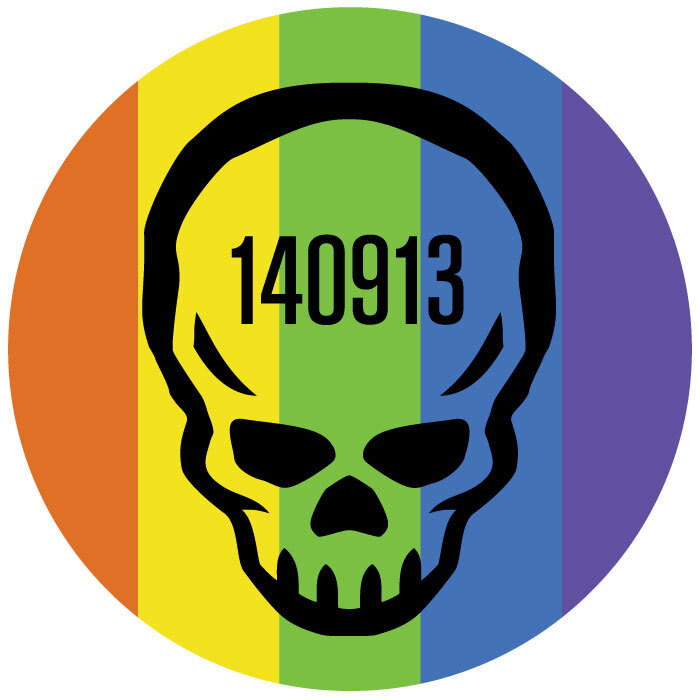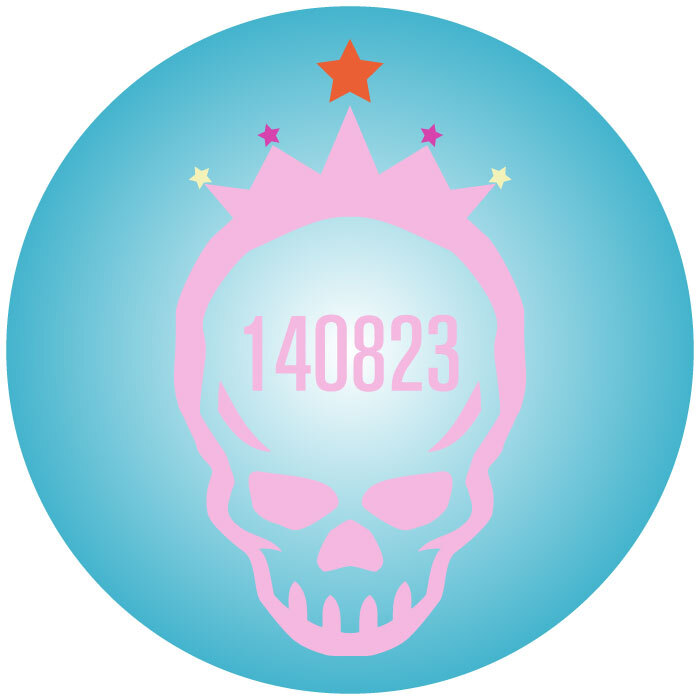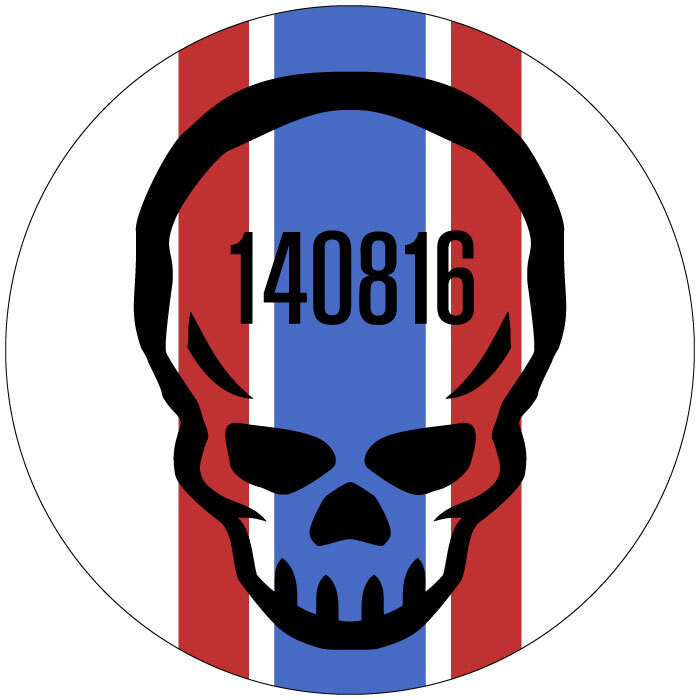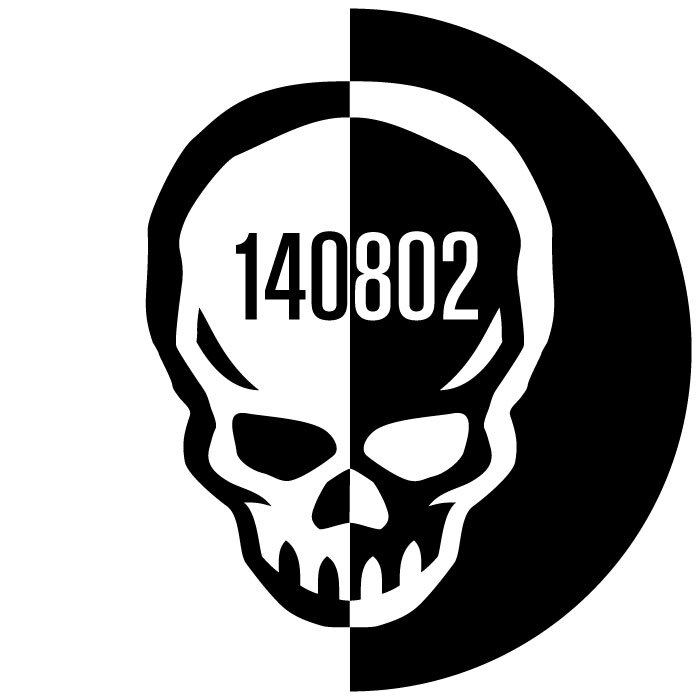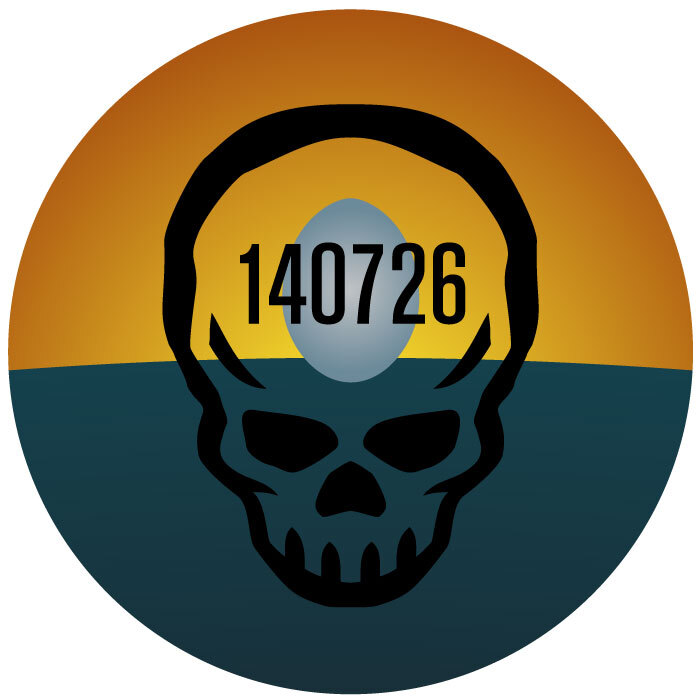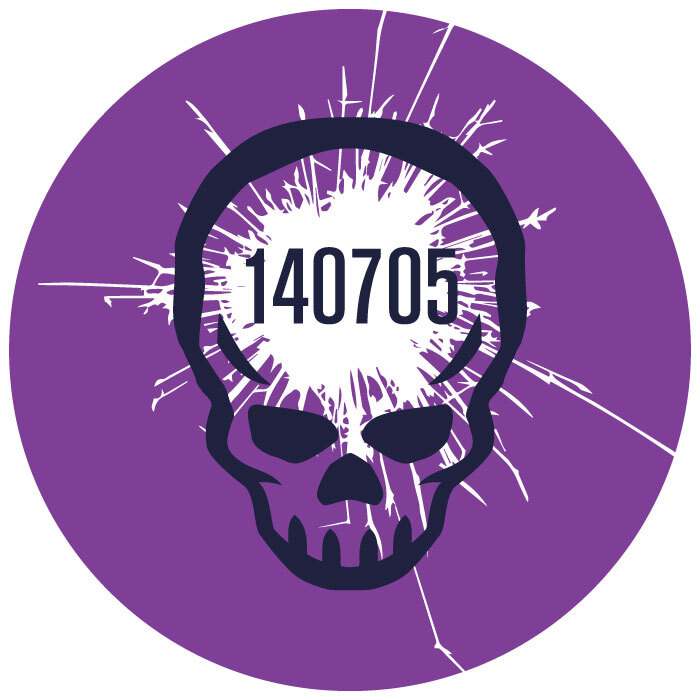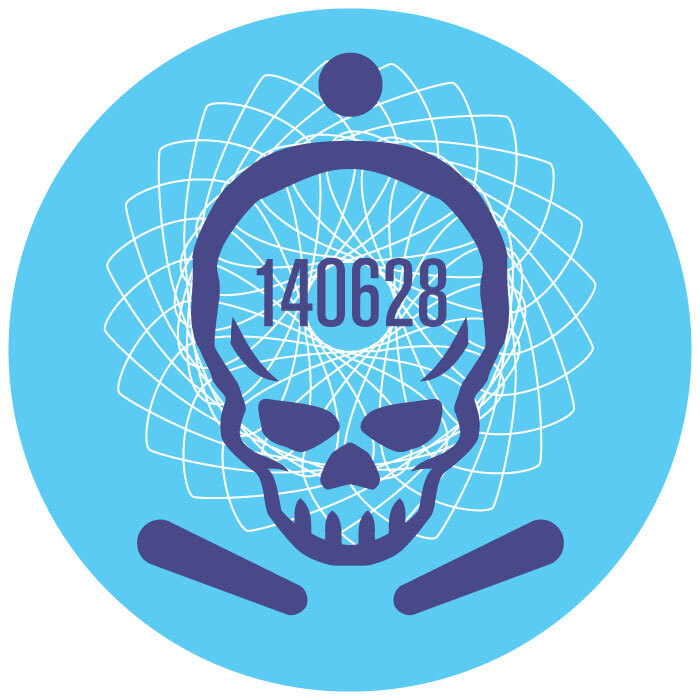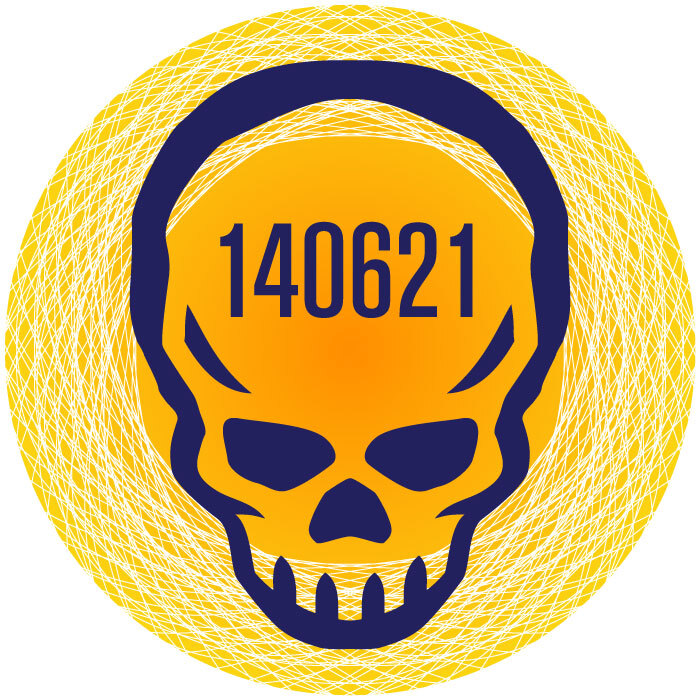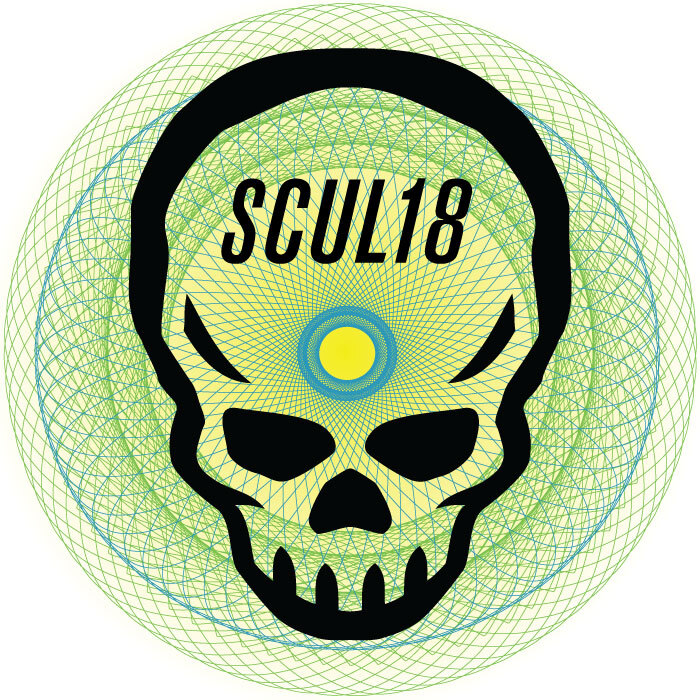SCUL Boston Bicycle Chopper Gang
- I'd like to help you with your project.
- I want to hear your ideas.
- I have a wide range of experience.
- You think this is crazy, wait 'till we do your crazy idea!

One summer afternoon in 1996 I declared to my fellow finishers at Merlin Metalworks 'I think I wanna start my own chopper gang'. I remember them shrugging in a 'sure whatever why not' kind of way. I think back to that moment often, as at the time I failed to grasp its immense magnitude.
Like many good things, SCUL started in a basement. It turns out that a bunch of modified bicycles can be the nucleus for many creative projects. It gave me lots of work to play with.
Skunk's Service Record
- Founder June 6 1996
- Created, nurtured, and grew a sub culture based on sci-fi lore, night-time adventures, and crazy bikes.
- Fleet Admiral Active 1996-2024
- Grew SCUL to 595 trained members, flying over 1,100 documented missions, with over 500 modified bikes documented.
- Expanded to five SCUL divisions throughout New England
- Led 585 Missions (Group Rides)
- Personally trained and knighted 144 cadets
- Built 42 Ships (choppers and tallbikes)
- Completed 14 group chopper centuries, most of which were on 100lb+ choppers, each lasting over 12 continuous hours.
- Chopped from Somerville MA to Bangor Maine on a 140-pound chopper.
- Chopped from Burlington VT to Montreal Canada and back on the on the same 140-pound chopper.
- Hosted over 140 maintenance, repair and construction sessions, ranging from 3 to 6 hours apiece.
- Created and awarded 187 trophies for SCUL pilots, including 30 massive and unique Iron Cog trophies.
- Featured on PBS, NPR, the Boston Globe, and the Boston Chronicle.
- Retired to Fleet Admiral Emeritus 2024.
I've dedicated over half my life to SCUL, and it will always be my greatest sense of personal accomplishment to see this group continue to thrive without me at the helm.
SCUL's Venerable Website
The website, in many ways, was the beginning. Without showing people what was possible, no one would try out such a silly idea of riding around on messed up bikes in Boston on Saturday night. As SCUL's complexity grew, so did its website. It is truly a rabbit hole of epic proportions.
It began with hand-coded static html pages. Later I wrote a hack program in Macromedia Director to help generate the HTML for me. Revamped by a fellow SCUL pilot back in 1999, it was converted to a MySQL database driven site using php.
To bring the site to modern standards, I overhauled the entire website for modernization into responsive design, particularly in back-end user support.

Database driven website showing detailed data matrixes, modernized to work with mobile screens while still keeping the original styles.
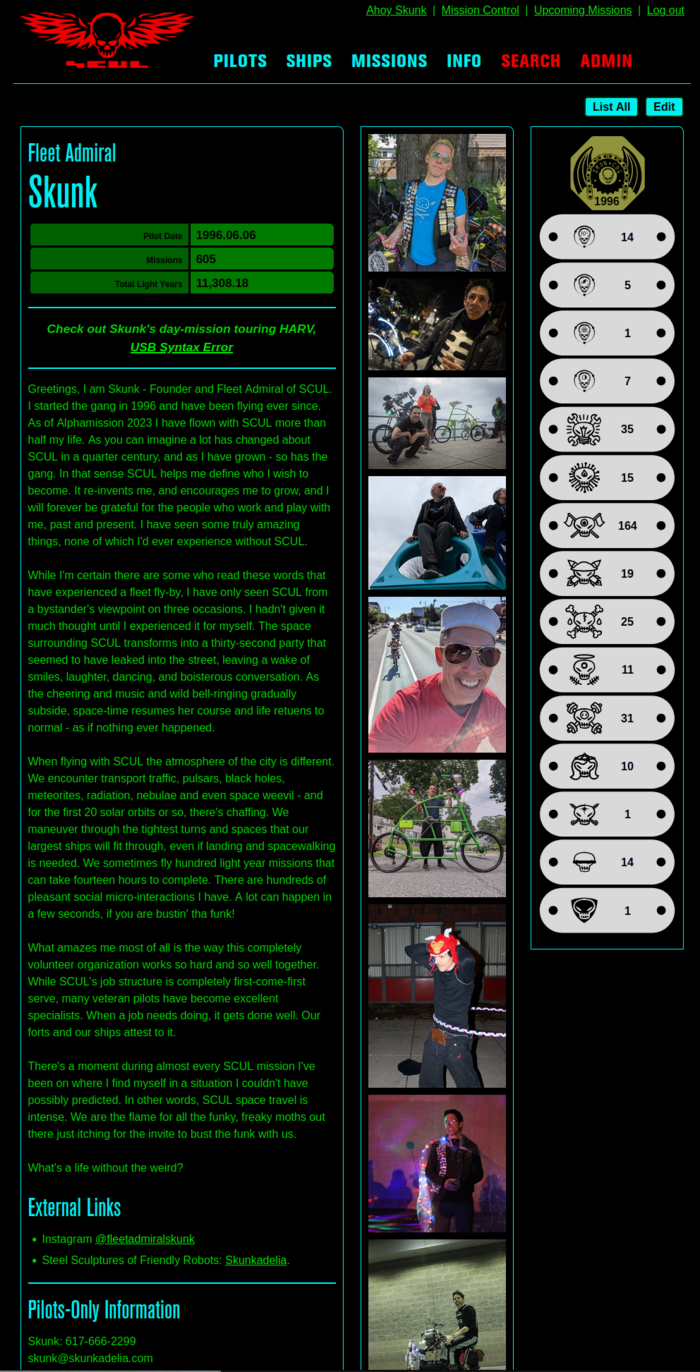
Pilots have the ability to update their own pages via back end. I designed the insignia for SCUL back around 1997.
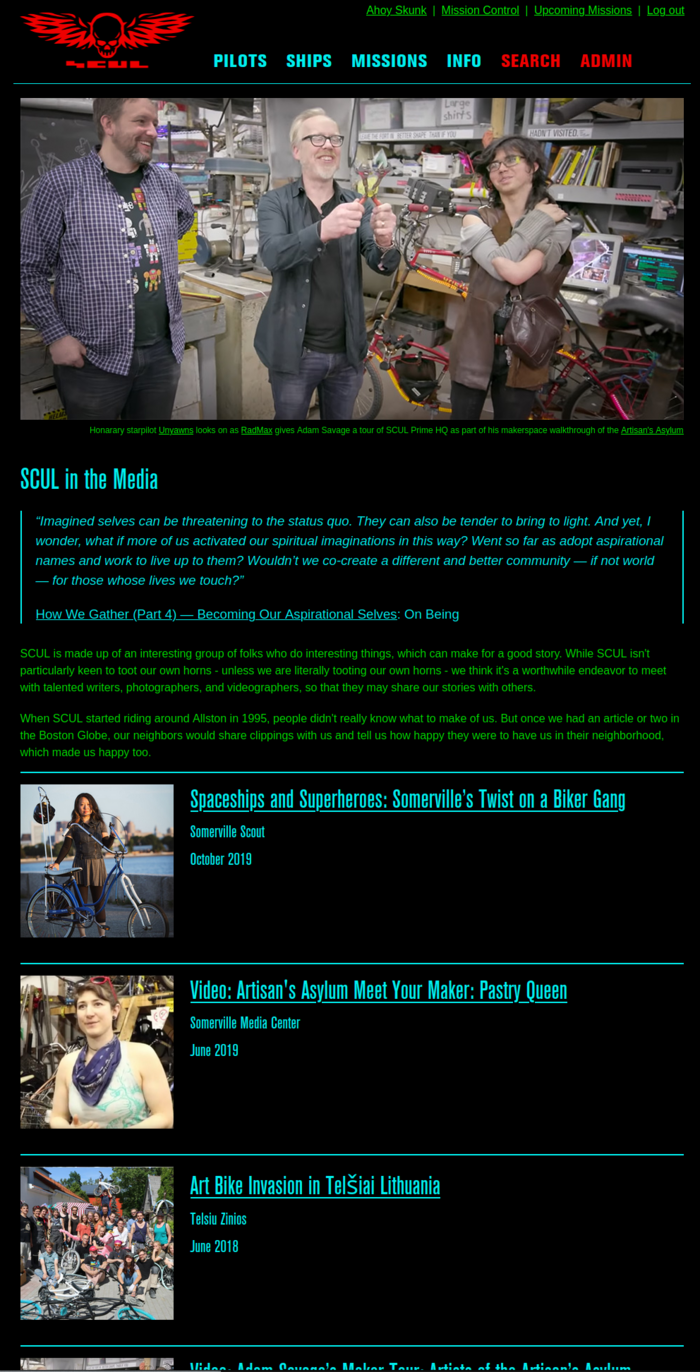
scul.org has been around since 1996 - how many websites do you visit that can claim that and be mobile-friendly today?
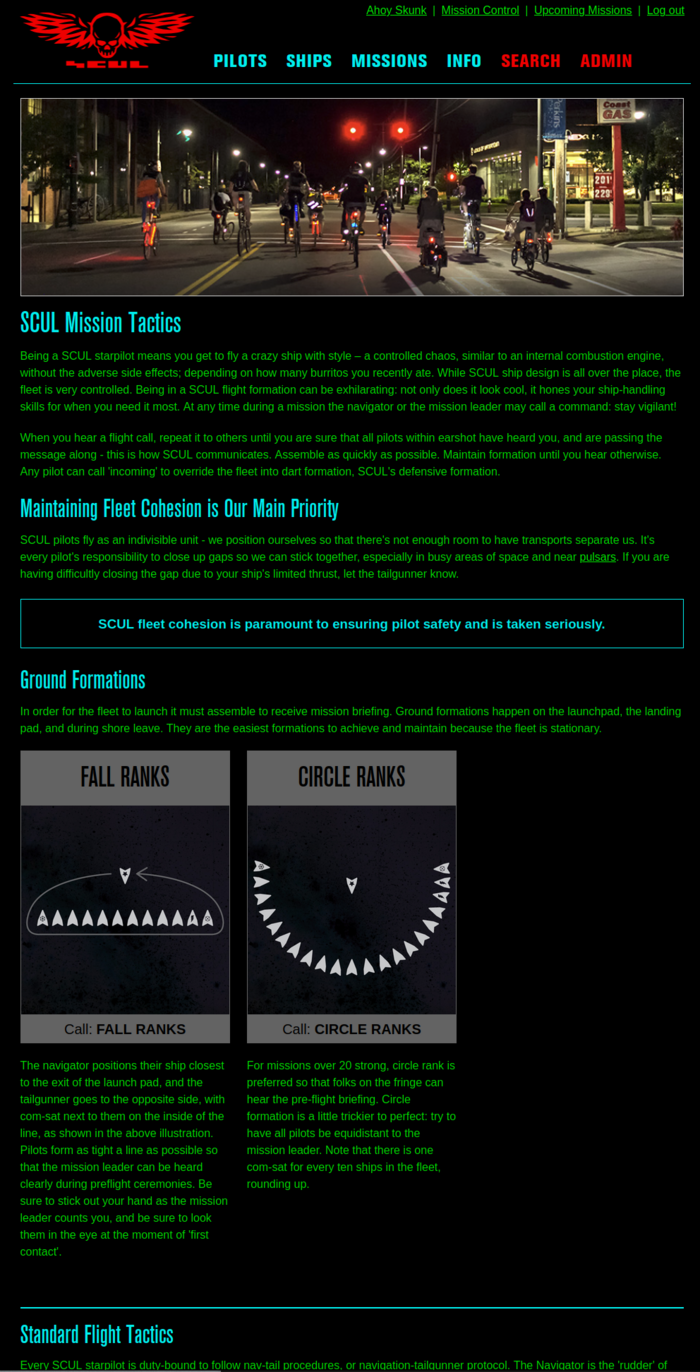
SCUL Tactics page shows various flight formations with graphic illustration guides.
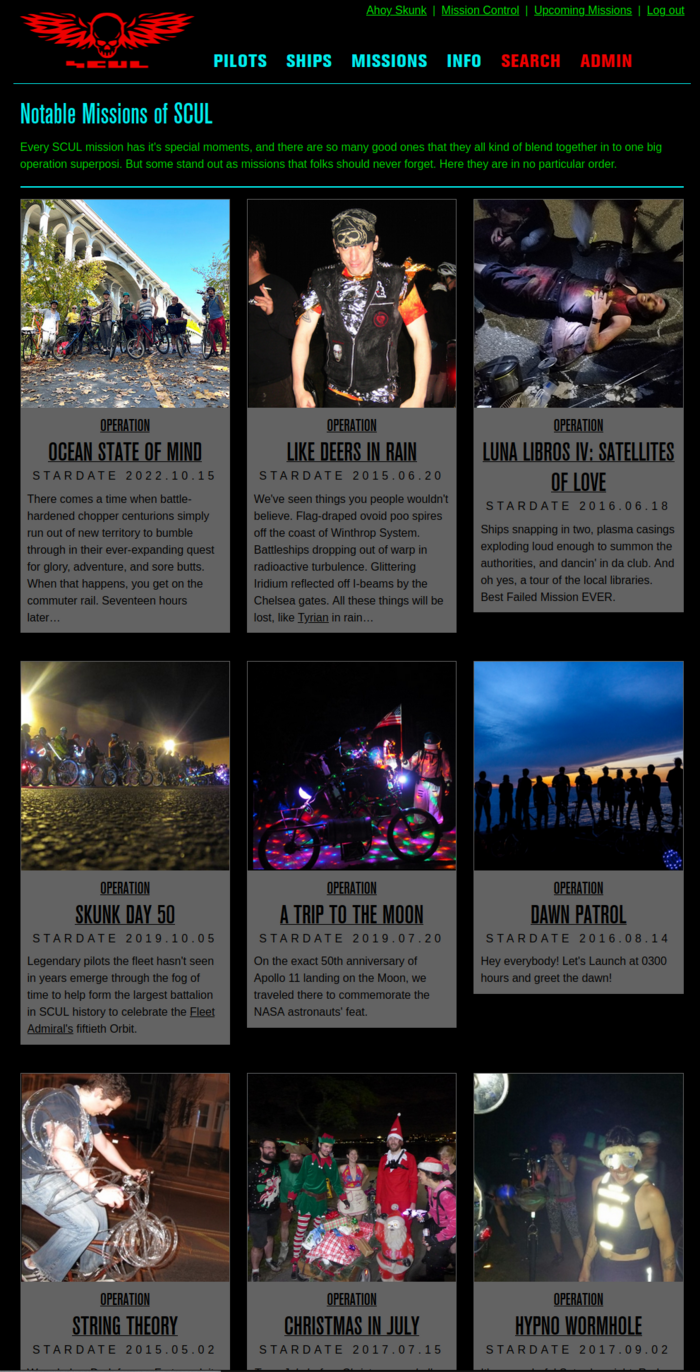
Missions of Note webpage is a custom-made static page.
Probably the most impressive aspect of the SCUL website is that it has been faithfully retaining all frivolous data of every mission, every pilot, and every ship since day one. This translates to a few thousand web pages - some have simple stats, some tell a tale of epic proportions.
SCUL Insignia and Honors
Insignia for SCUL, designed in 1997, evolving slowly over the 28 seasons I served as Fleet Admiral. Some medals are given at the end of the mission, some at the end of the season.

Pocket-sized Print Invitation
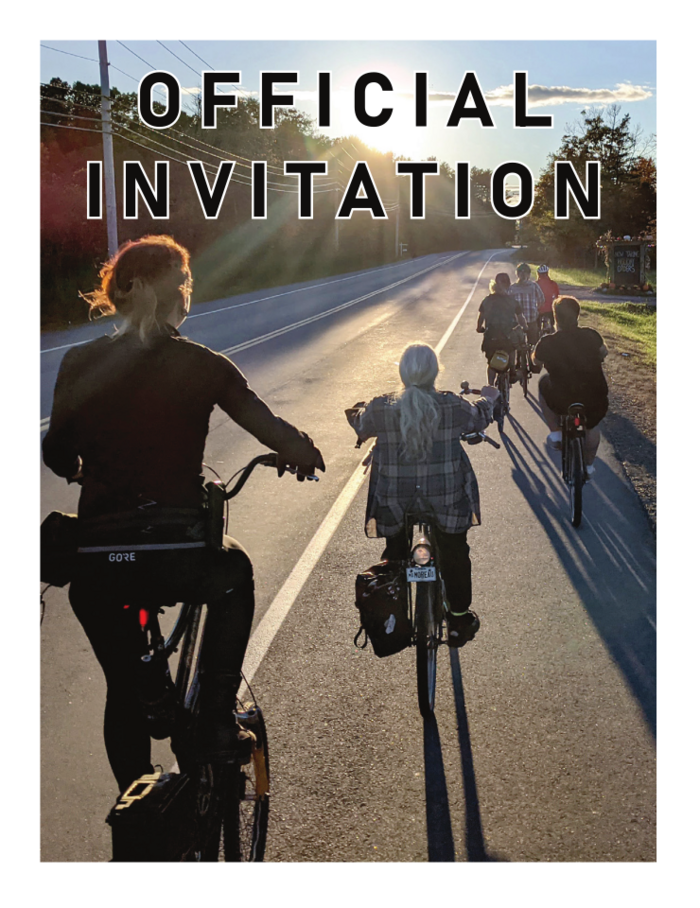
SCUL initiation flyer to be handed out to 'civis' if they seem friendly and are interested in joining. These pocket-sized invites are best delivered all wrinkled up from space travels, for the genuine space-invitation experience.
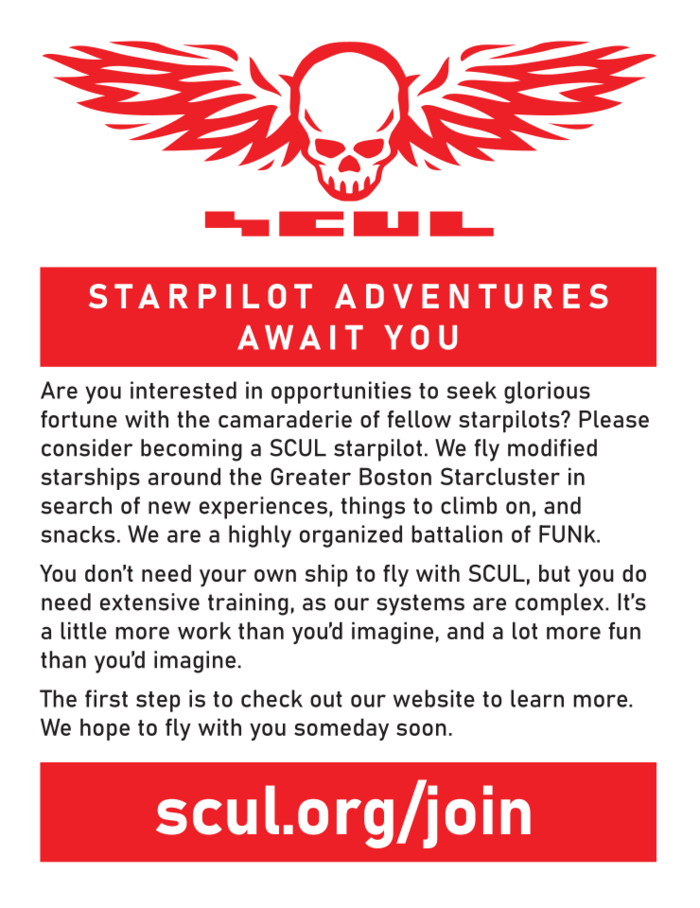
It's important to get the right amount of relative and pertinent information on a flyer. Good design can help good copy by emphasizing the most important parts of the message.
Mission Emblem Illustrations
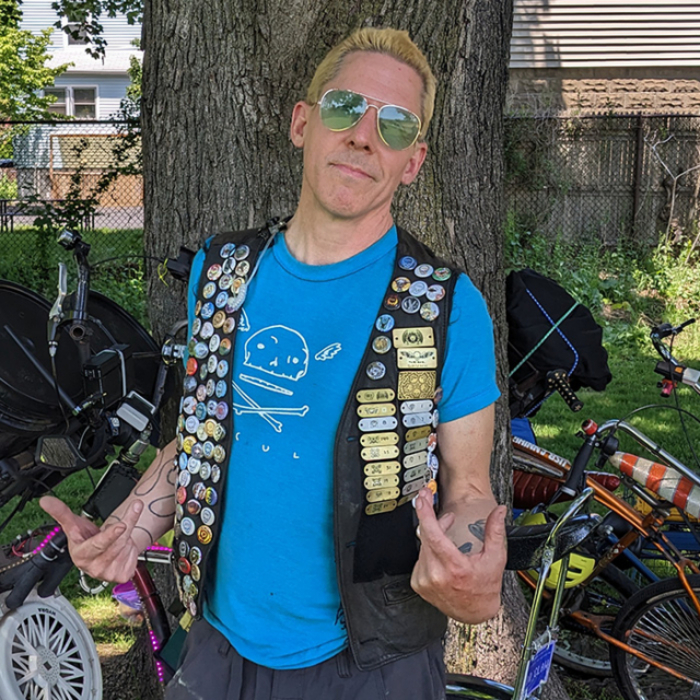
SCUL is a the bicycle chopper gang I founded in 1996. Each time a SCUL pilot completes a ride, they are awarded a mission pin with an emblem symbolizing the event. This tradition didn't start until 2012 when a pilot named Piranha gave out special bee pins after her honey-themed mission. This evolved into the mission pin we use today. The only criteria for a SCUL emblem is that it needs a stardate in YYMMDD format - which connects the pin to the mission report on scul.org.
I've led over 400 SCUL missions, so my SCUL vest is covered in mission pins. I don't particularly enjoy flying with it since it feels like your riding with chainmail on.
I've made a few hundred emblems for SCUL missions. I also help out other pilots who want to take on the role but don't have the technical skills to realize their ideas. Some of the designs are made in Illustrator, some are hand drawn, and some use a variety of techniques such as adding glitter or printing on fancy paper or even clear plastic to show the metal pin. Making these little designs once a week helped me push my boundaries and try new ideas.
Select Mission Emblems
Here are a select gallery of mission emblems I have made for SCUL, in reverse chronological order: each one of these emblems represents a SCUL adventure. Can you guess the theme for any of these missions based on their design?
Can you guess the theme for any of these missions based on their emblem design?
Print Calendars 1998-2020
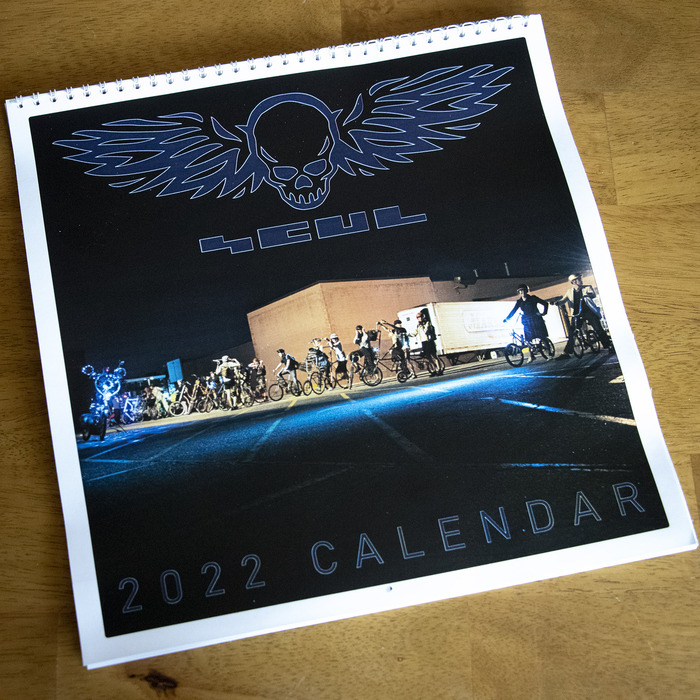
The first print calendar I made for SCUL was in 1998 and made them yearly until 2020.
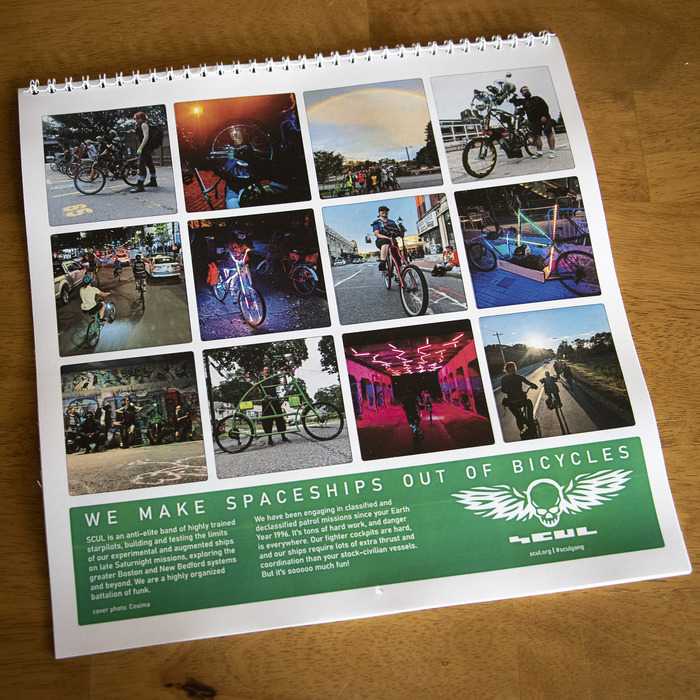
They are printed on 11x17 paper, then trimmed square. I then use a wire-binding machine to punch the holes and add the wire spine.
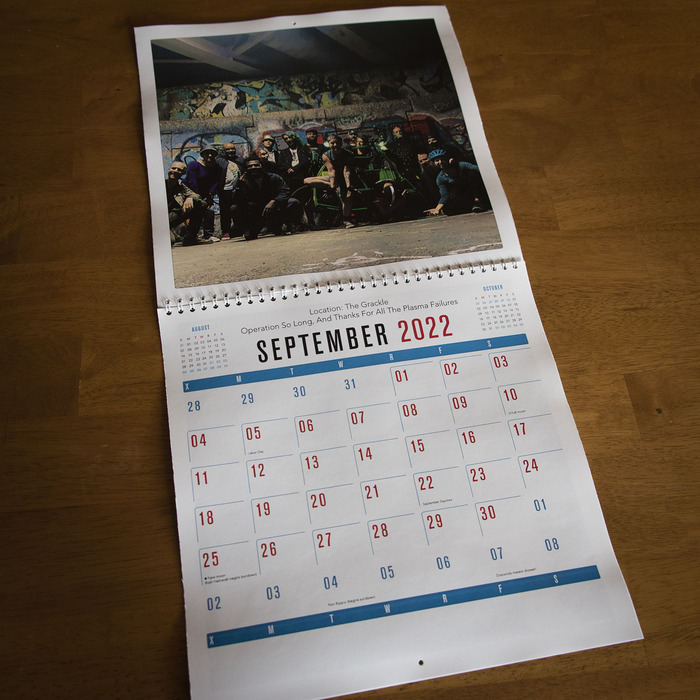
I refined the template each year, sticking to one evolving design instead of reinventing it each year.
Tallbike with Built-in Light Show and Sound System
USB Syntax Error
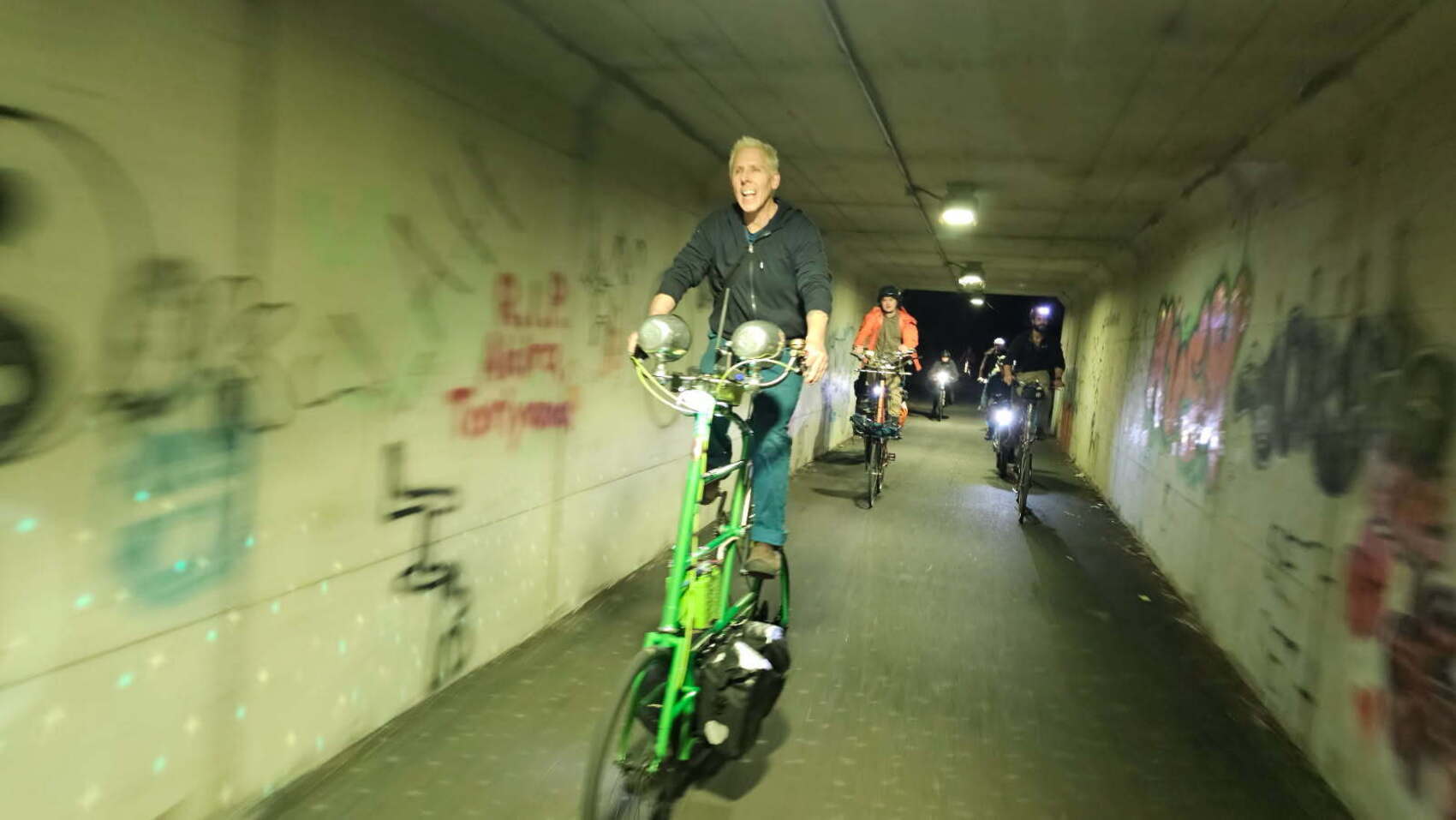
This is no ordinary tallbike — this one is made from new tubing, not cut up existing bikes.
USB Syntax Error is a double-tall bicycle made from new 4130 steel tubing. It has a large-capacity LifePo4 battery to power it's lights and sound system, and internal electric wiring for a clean aesthetic.
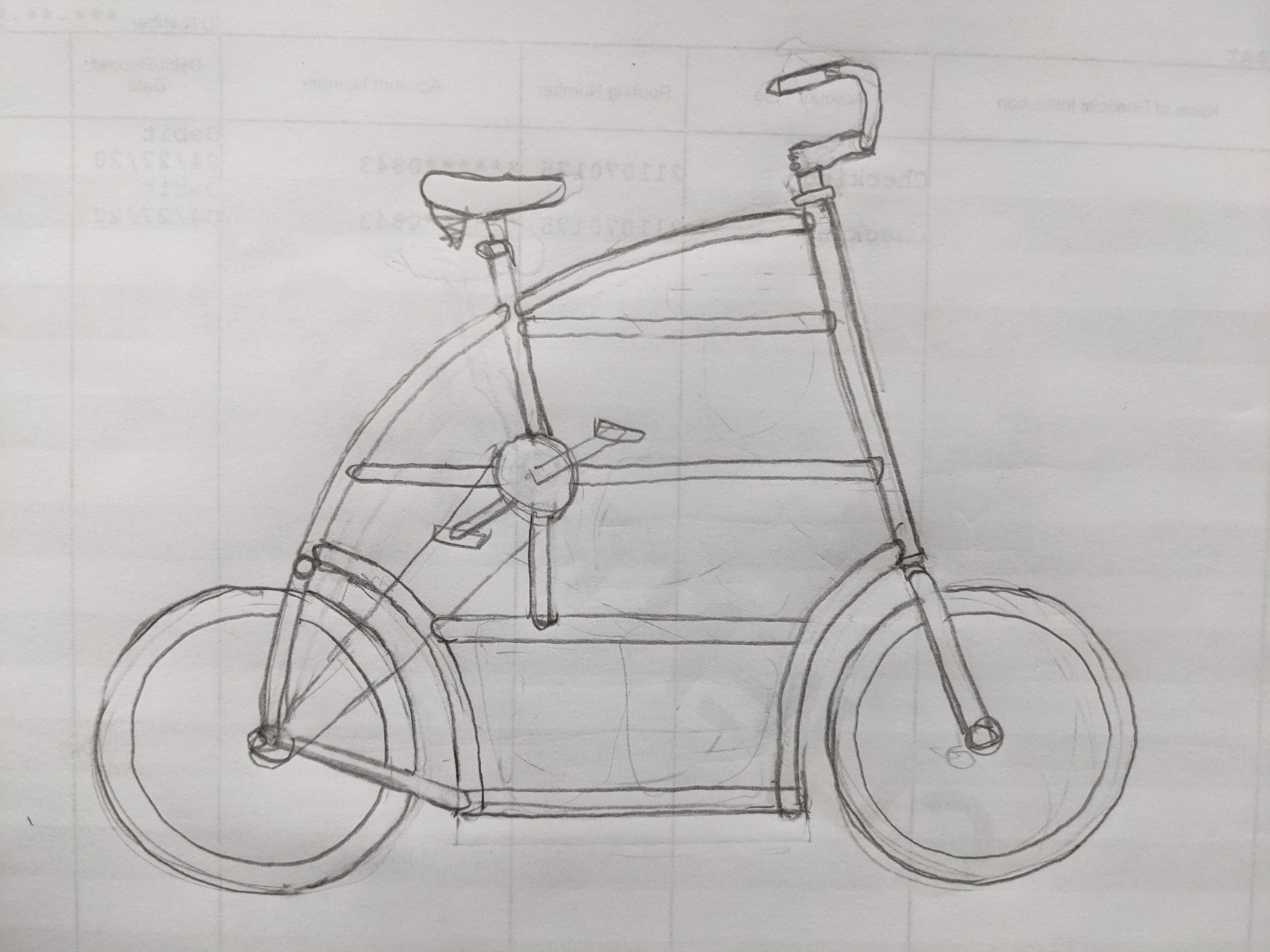
One fateful morning I pondered "What would a tallbike look like if it weren't made from other bikes?" — so I made this sketch. I used a lot of curvy, cruiser-style frames as building blocks for my previous builds. While straight tubes make lighter bike frames than curved ones, curves seems to make sense on a tallbike.
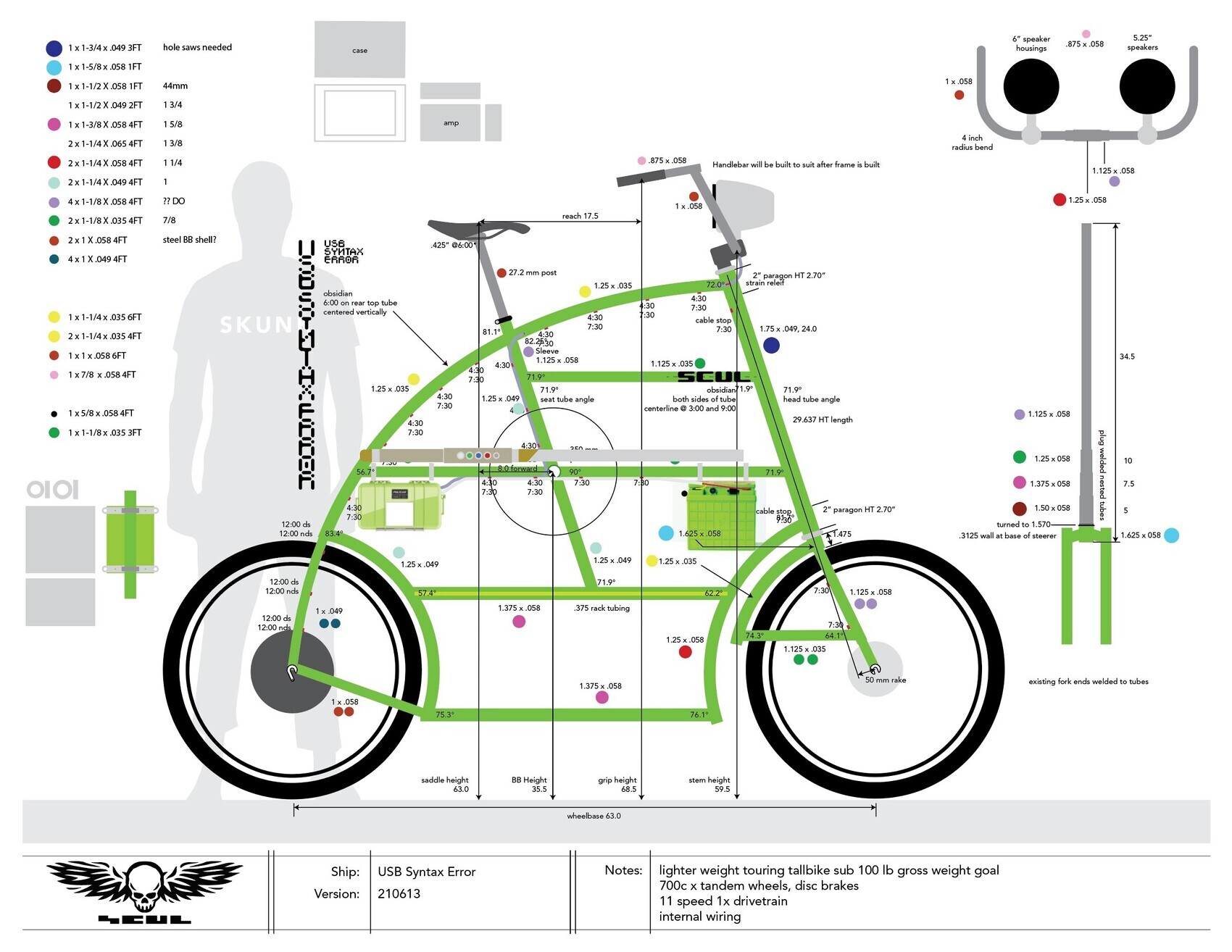
I spent the next few weeks expanding and evolving my simple sketch into a full-scale Illustrator template, complete with cut list. I used the line tool and set the width to the tubing diameter to draw the tubes. I do all my design work at actual size and scale.
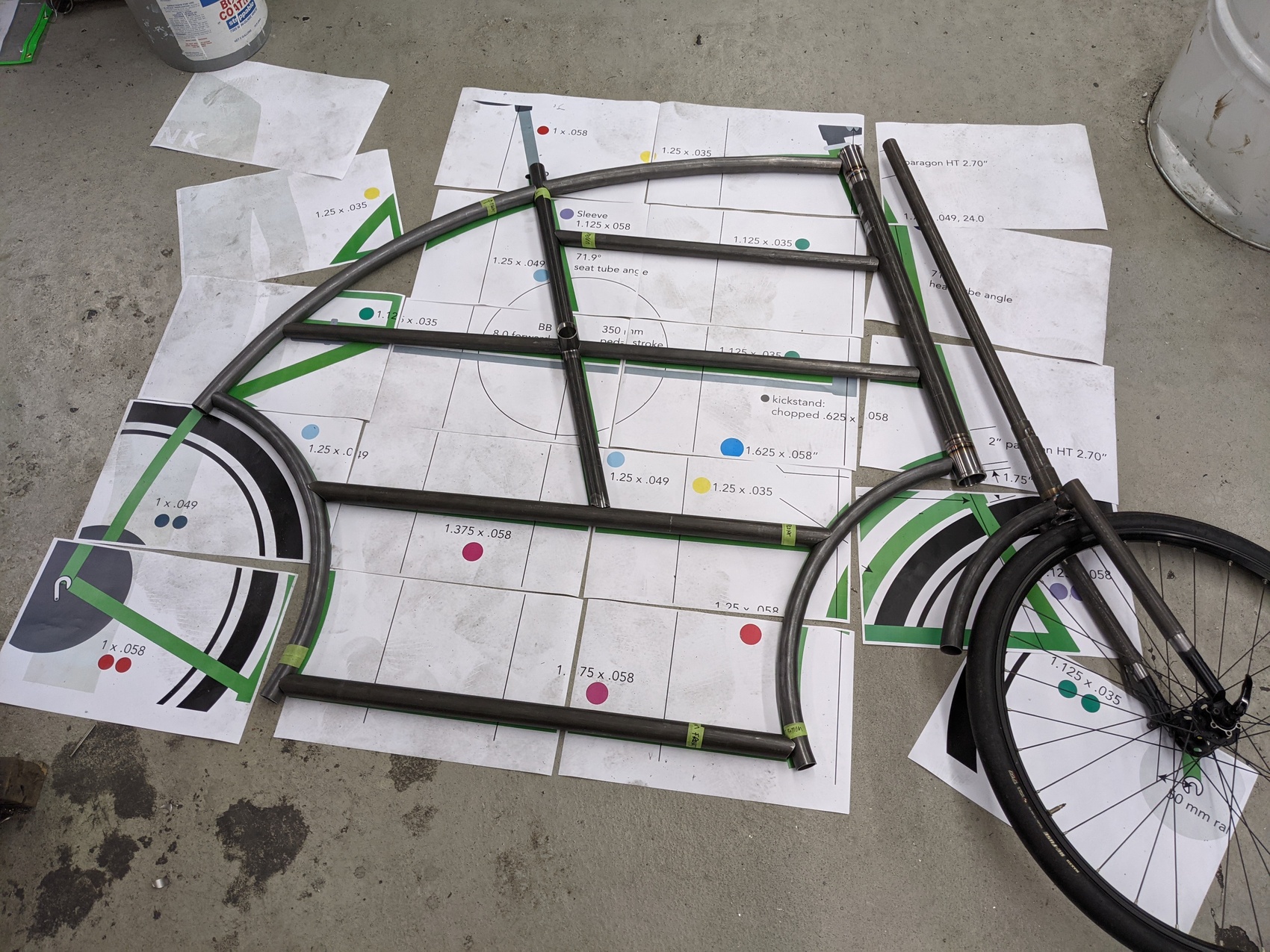
Tile printed on tabloid-sized paper, the blueprint was laid on the shop floor for reference to assure that the bends were correct and everything fit as I cold-formed and machined each tube one at a time.
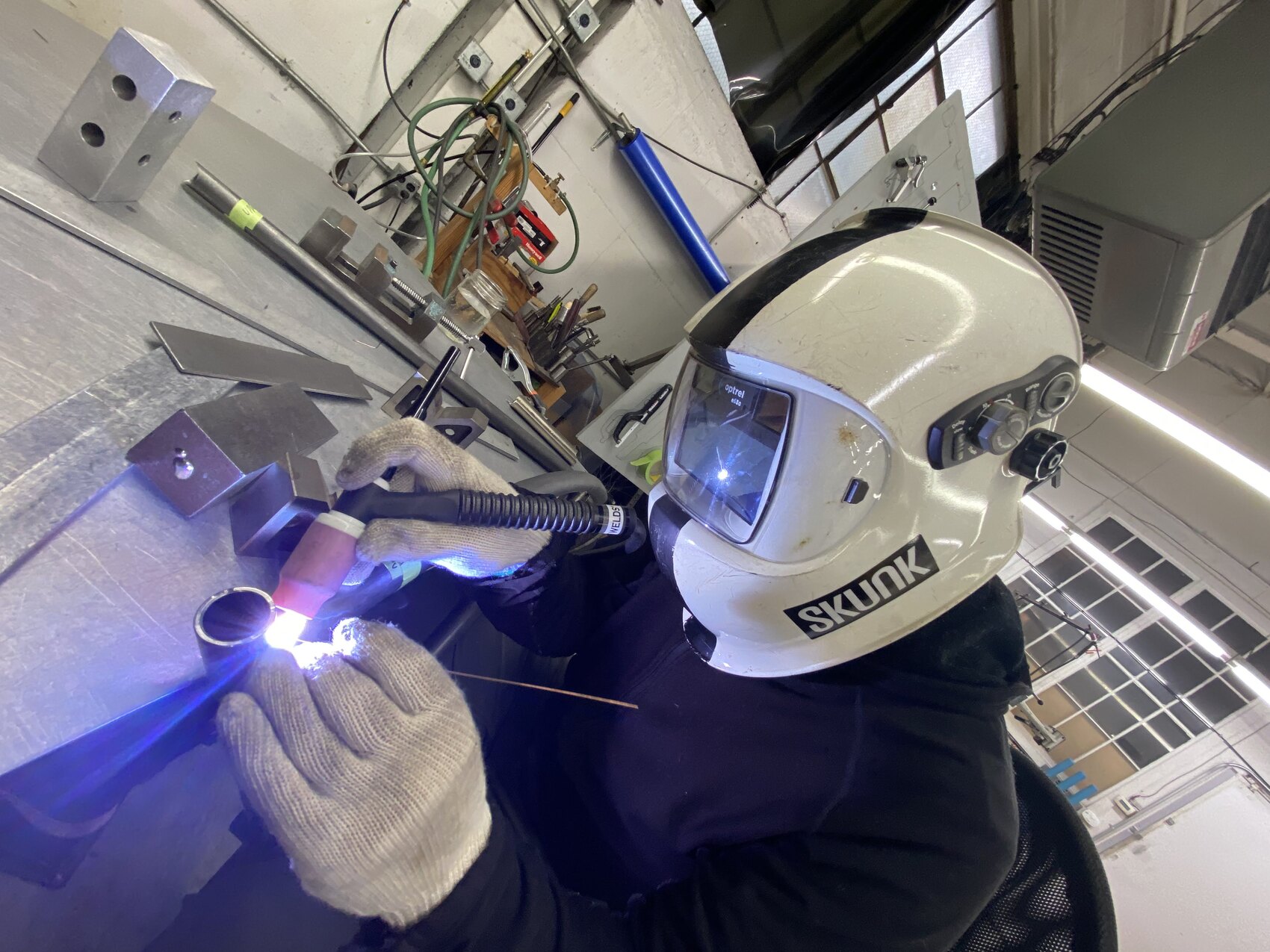
I've welded hundreds of bicycle frames, but alignment is a lot more tricky when you have no fixtures or jigs, particularly the rear triangle of the frame.
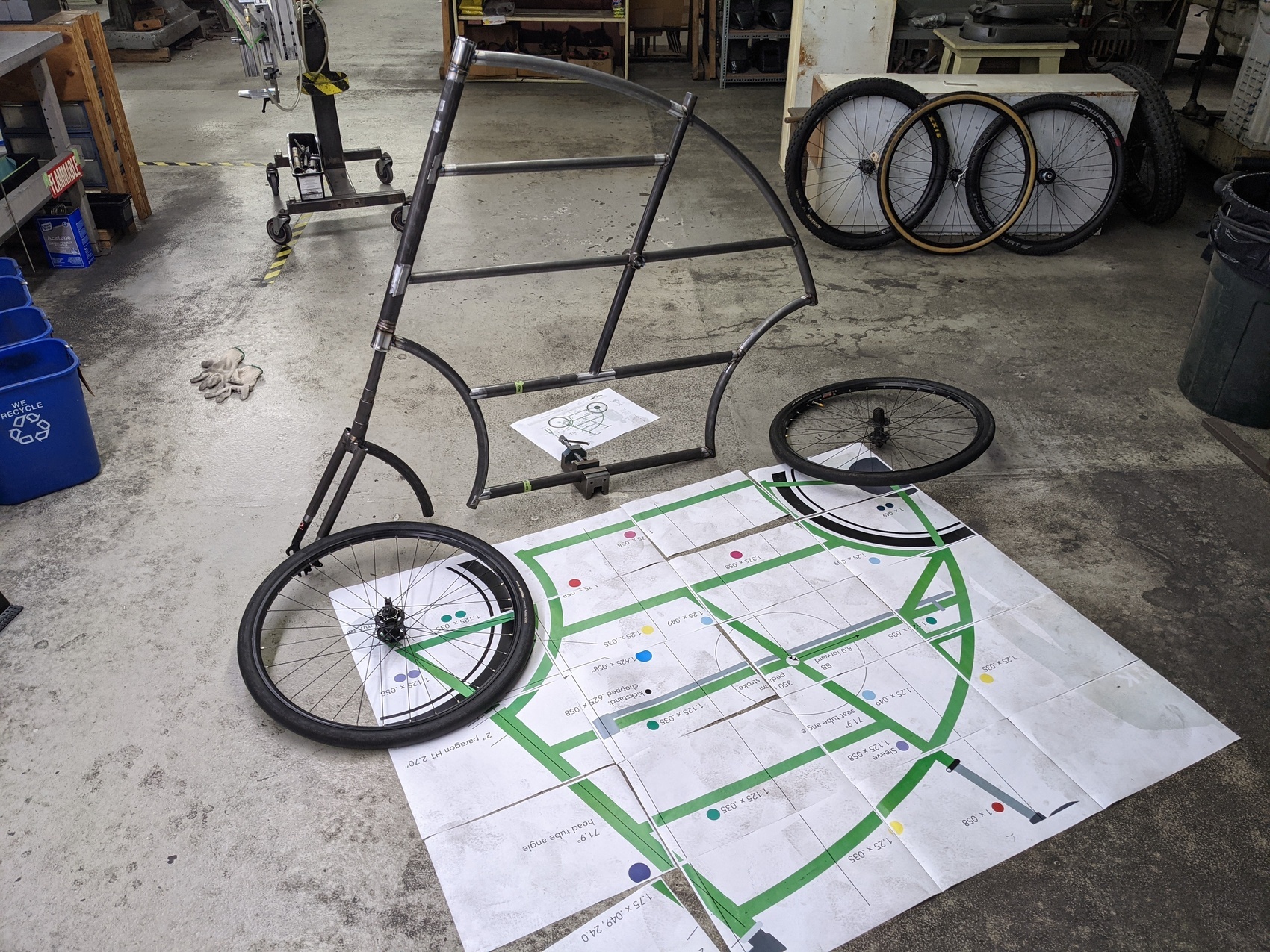
After weeks of nights and weekend sessions, it was thrilling to see this project literally leap off the page.
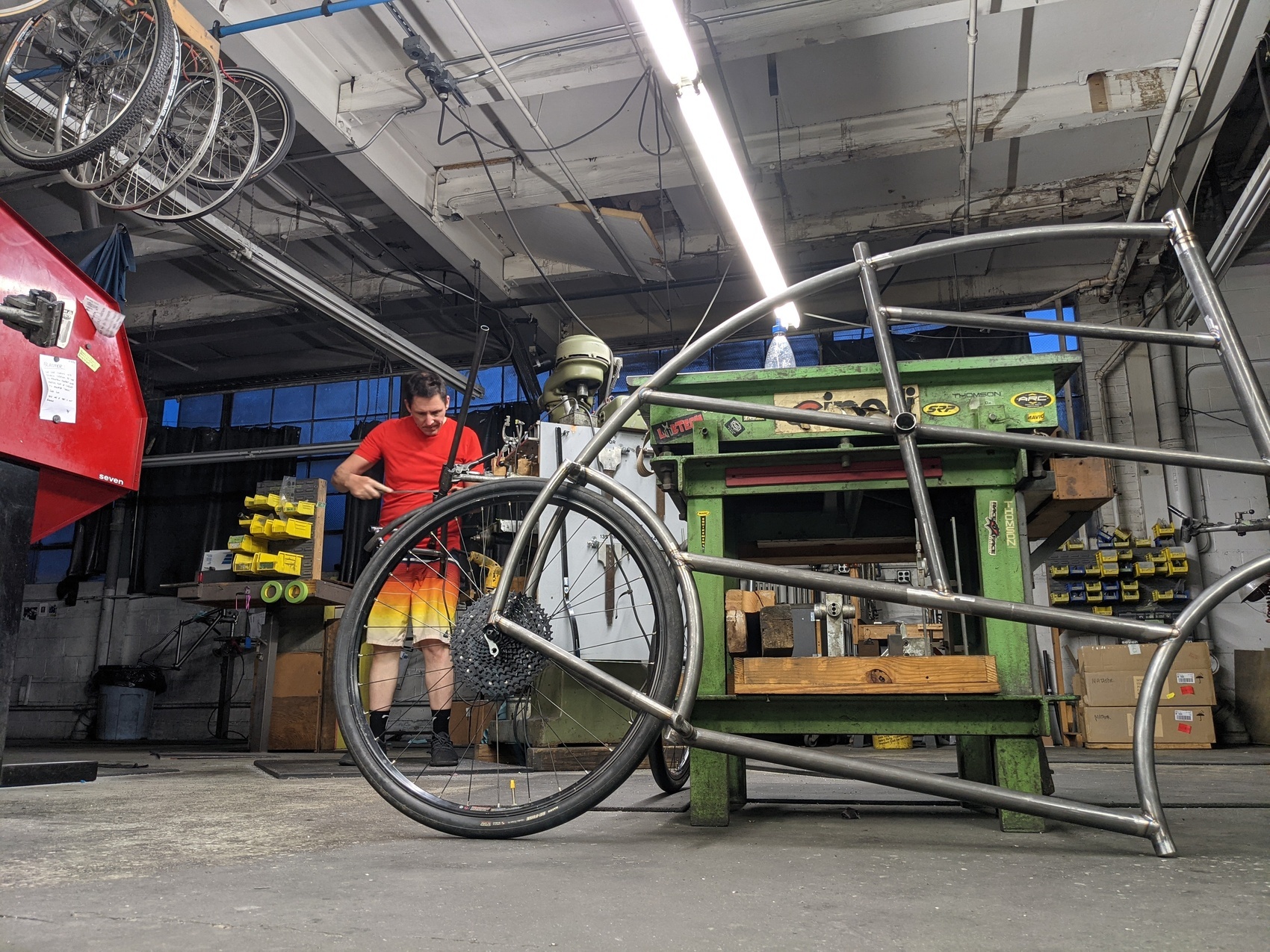
This tallbike was a build of epic proportions. If I wasn't working, sleeping, or eating, I was at the shop making progress — nights, weekends and holidays.
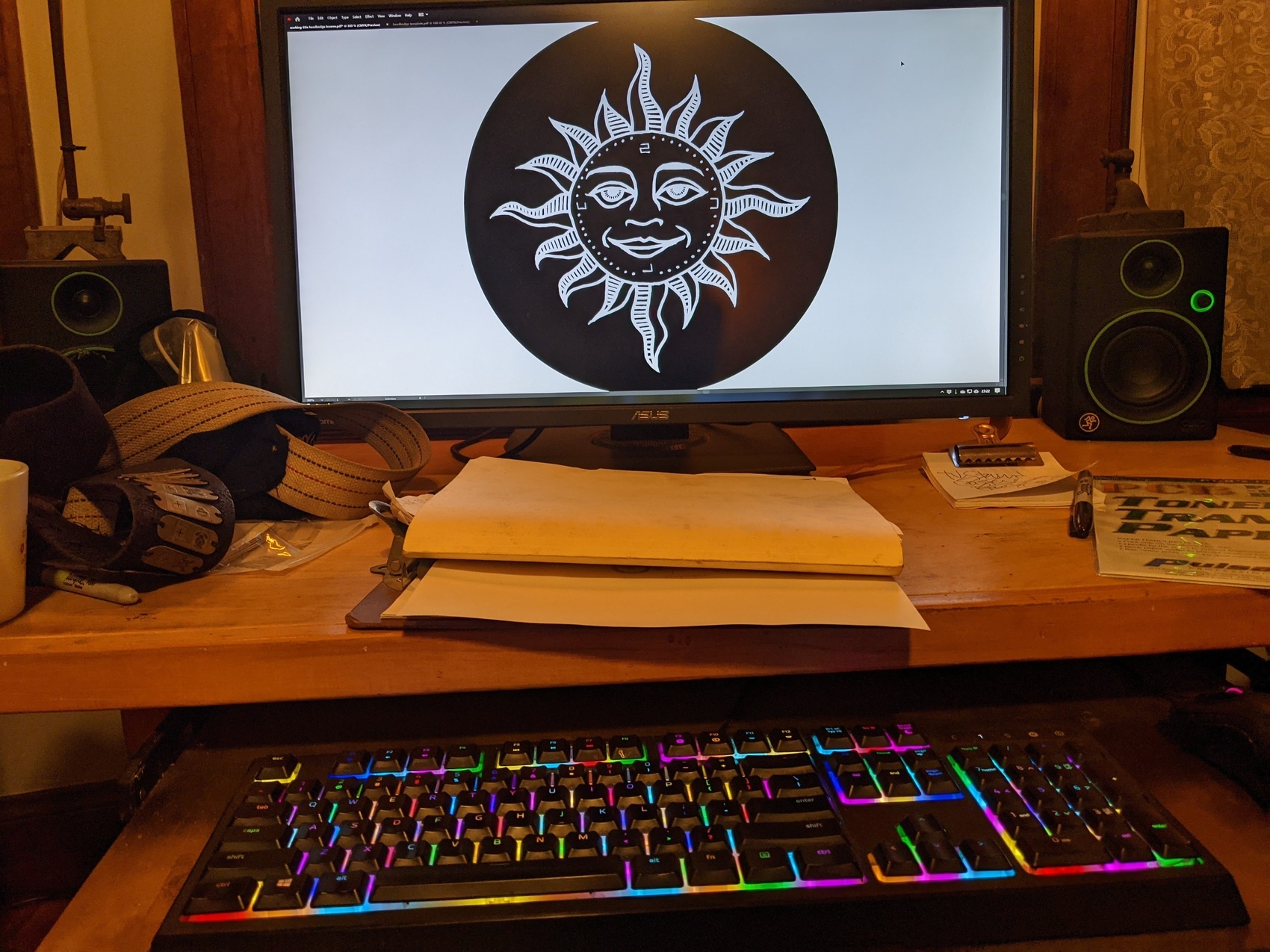
I wanted the headbadge for this bicycle to be something special, so I put a great deal of work into it. Starting with pencil drawings, I used a light board to ink the illustration before digitizing and then vectorizing the image in Illustrator. The image needs to be made negative: the toner acts as a resist for the copper etching. The design needs to be horizontally because it's applied face-down on the copper.
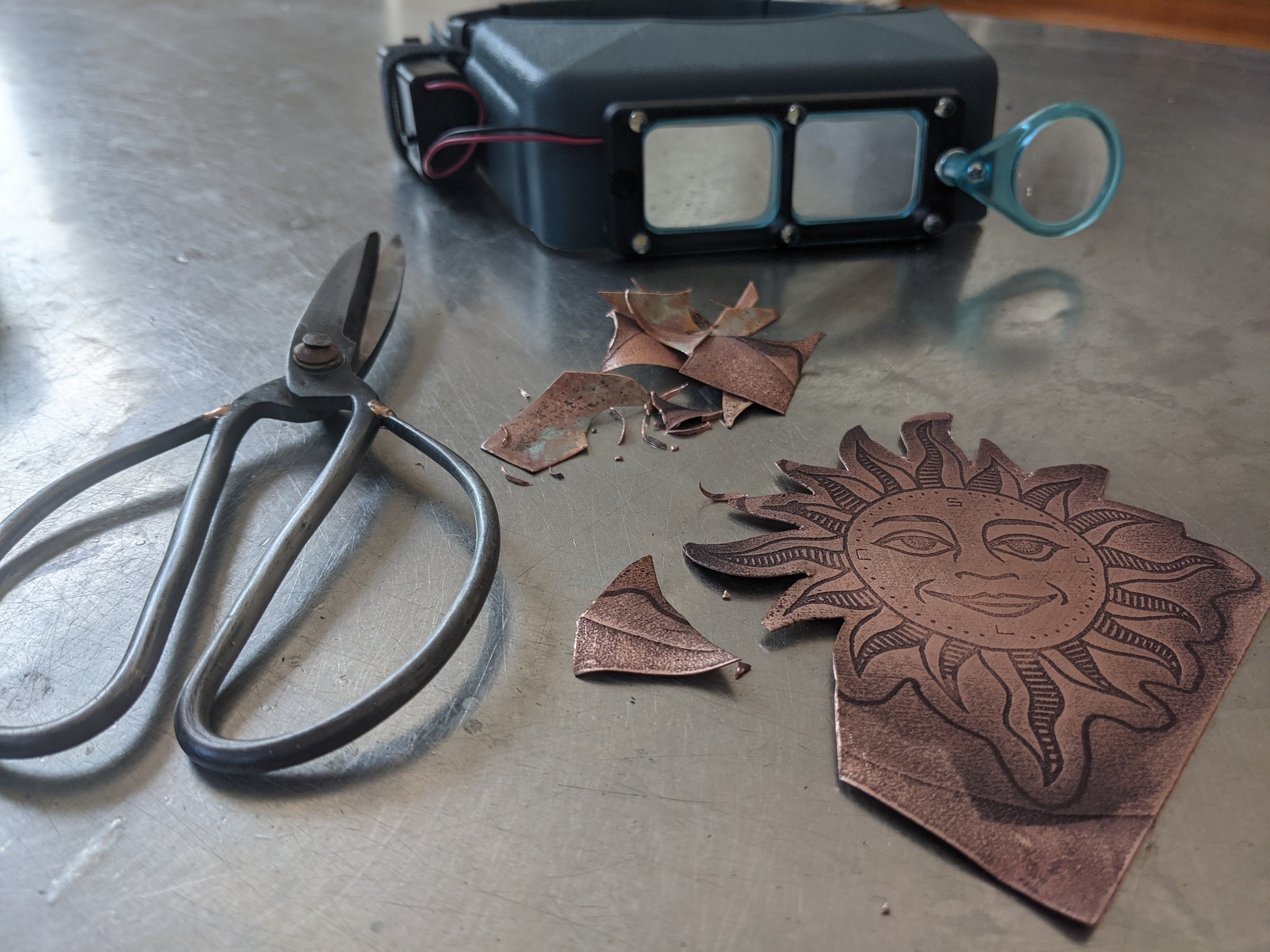
The toner was heat-transferred to the copper using a lamination machine, then the badge was placed in an acid bath to etch my design into the copper. Afterwards it was time to cut, bend, polish, epoxy, and fasten it to the frame. Surprisingly, when cutting copper sheet, tin snips were not as effective as my sturdy pair of scissors.
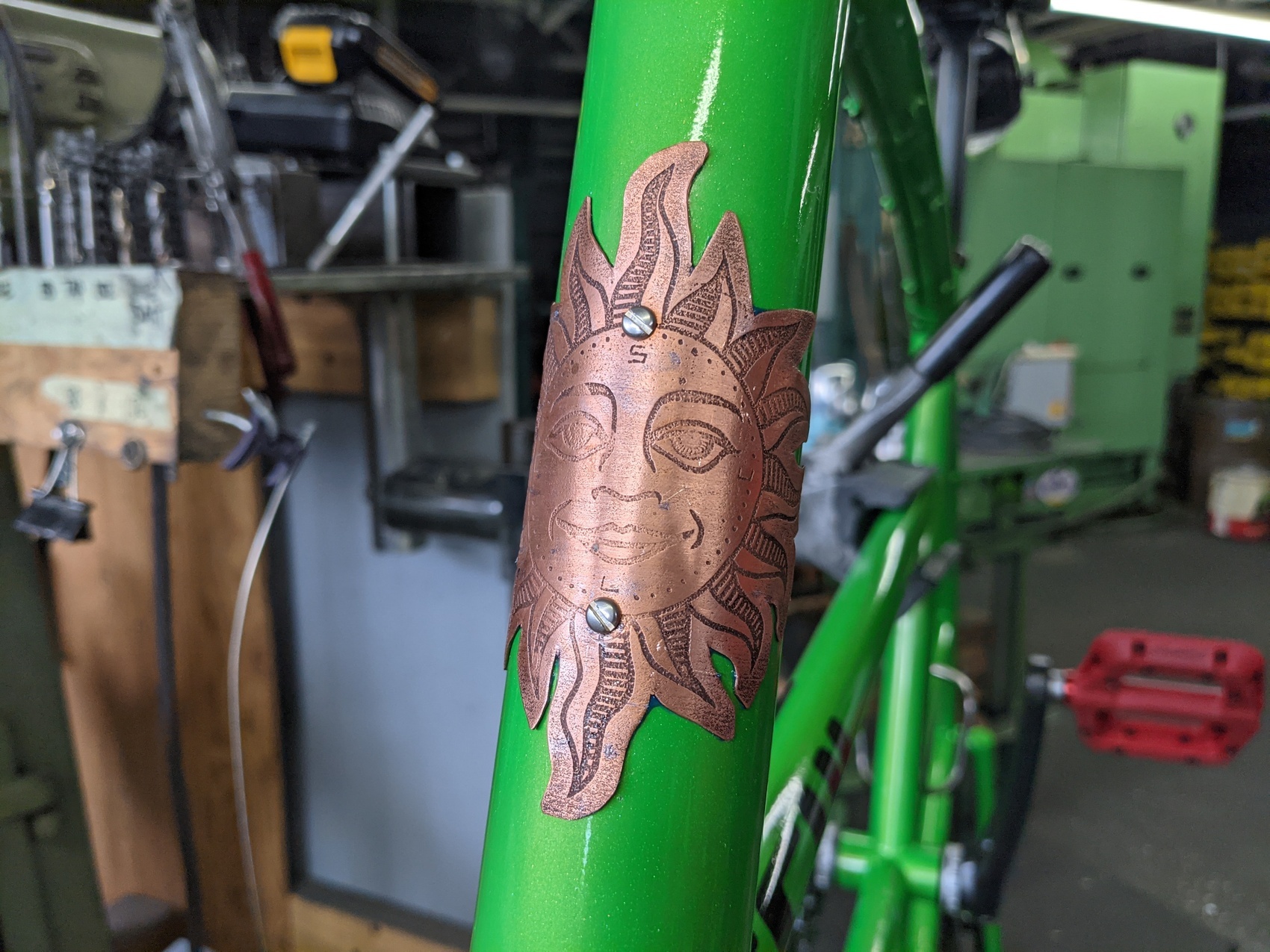
It's not often you get to place your headbadge at eye level. Applying the badge to the bike frame was tricky because it wraps more than halfway around the head tube. I used epoxy and zip ties to hold it in place while the glue set up.
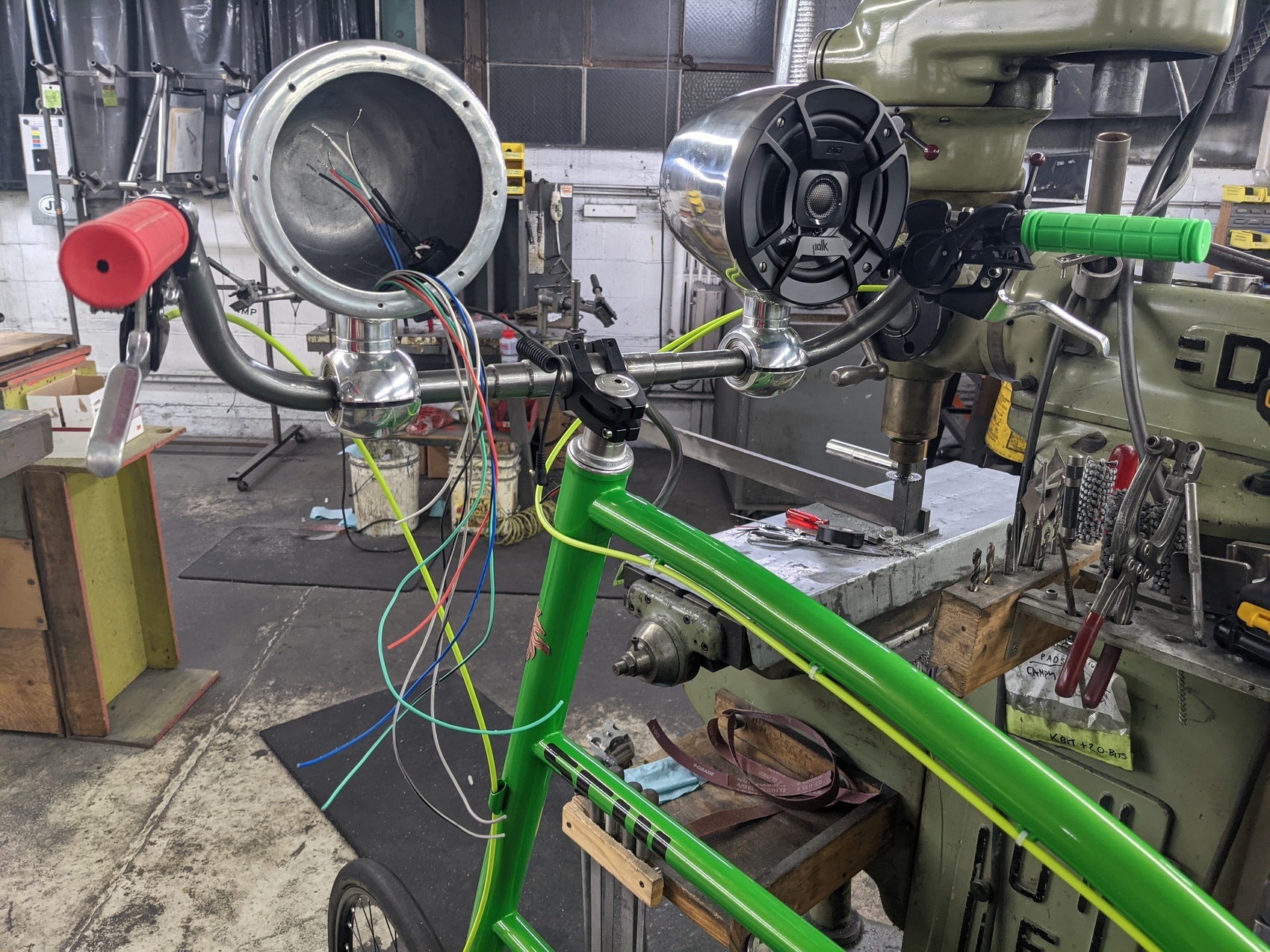
It is nearly impossible for an existing bike to be retrofitted for internal wiring since the all the joints need internal holes for the wires to pass through. Bikes with electronics tend have a lot of messy wiring, but this one's built to be super clean.
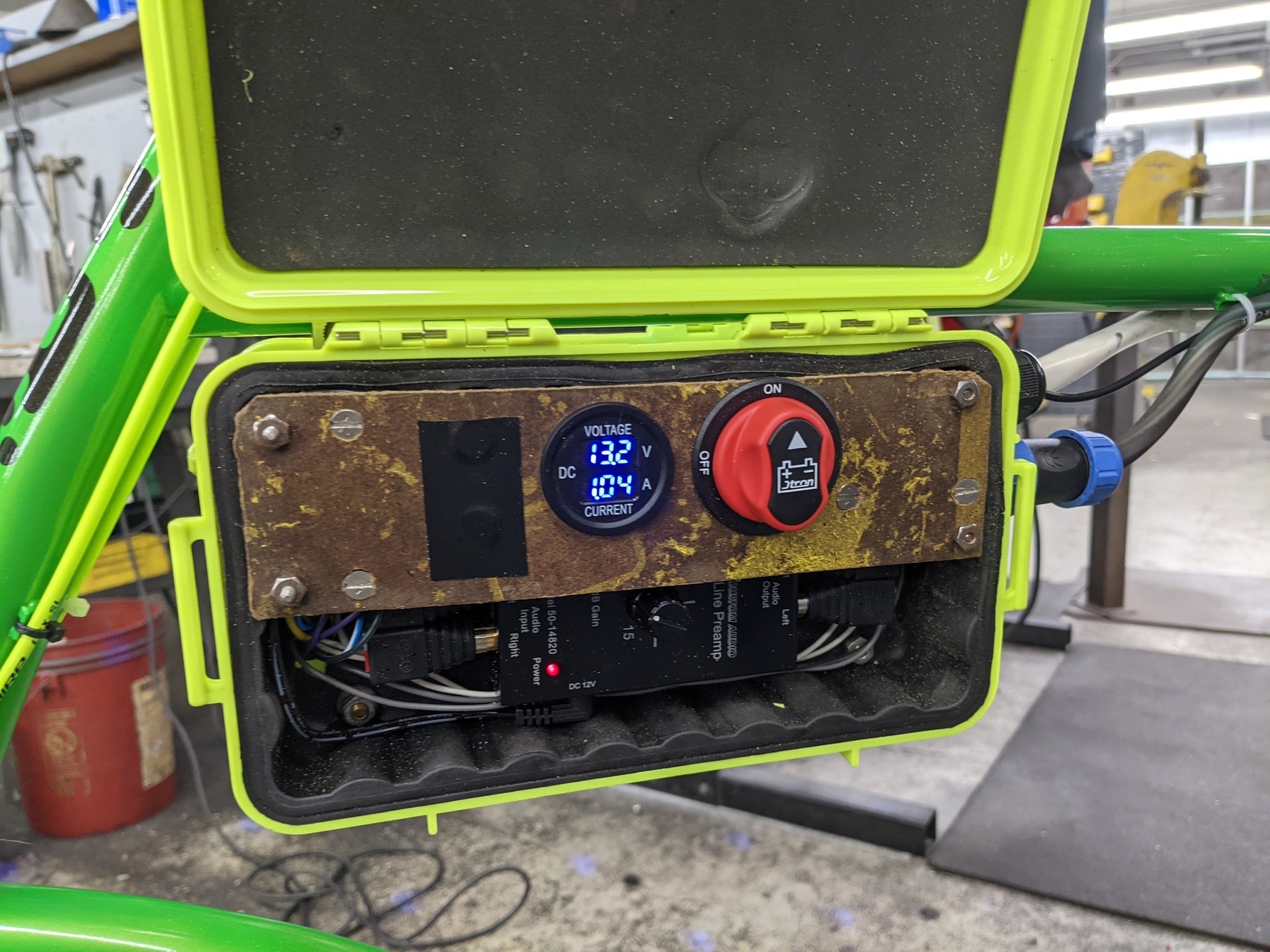
I have built a lot of modified and electrified bicycles over the decades, but this one is exciting because the everything is compact and discreet. This little box houses a master switch, a circuit breaker, a meter, and a preamp for the sound system. There's a stereo amp in an identical box with heat sink on the other side of the frame.
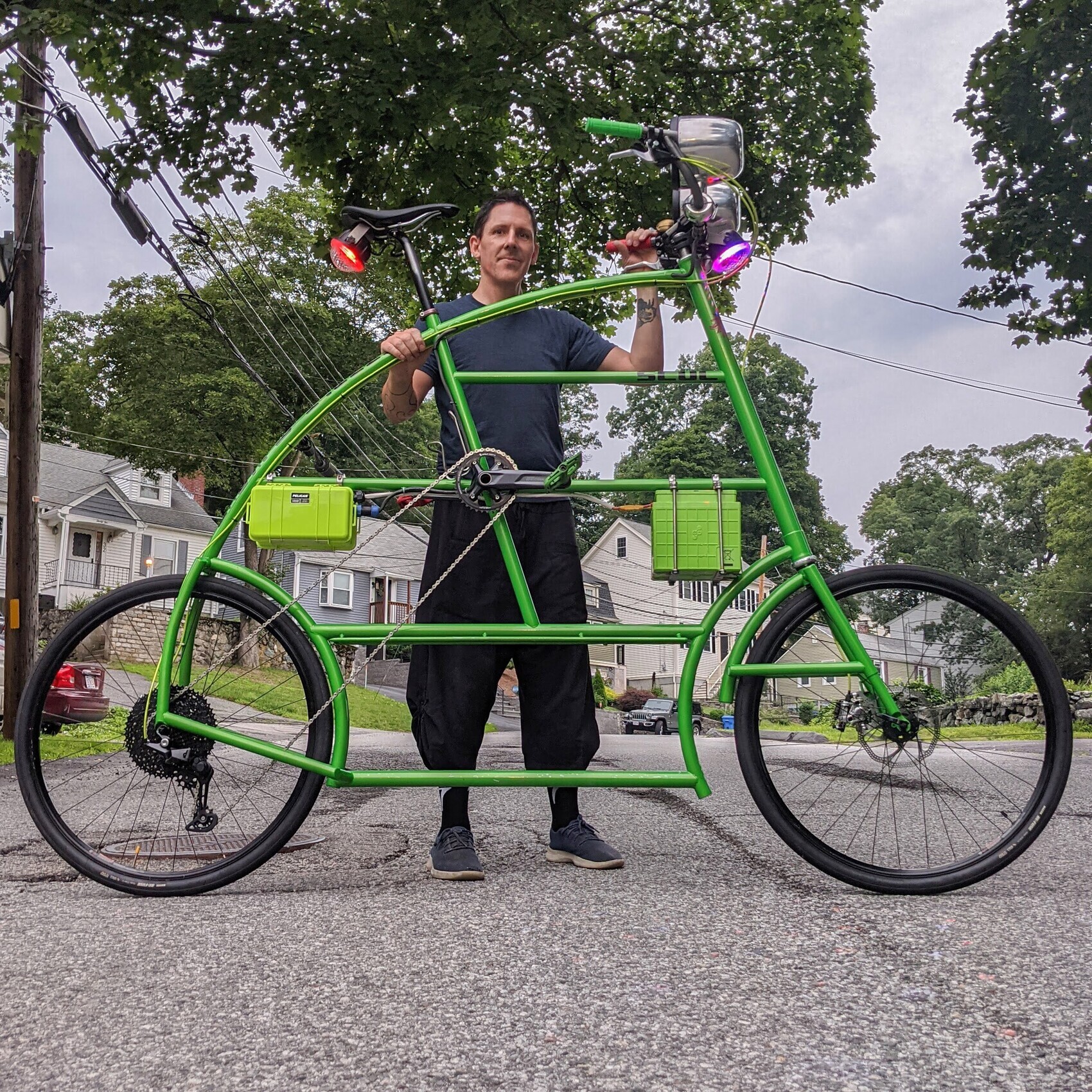
Here is Syntax Error completed, 100% accurate to the design. I did everything except apply the paint. There is no other bicycle like this one on the planet.
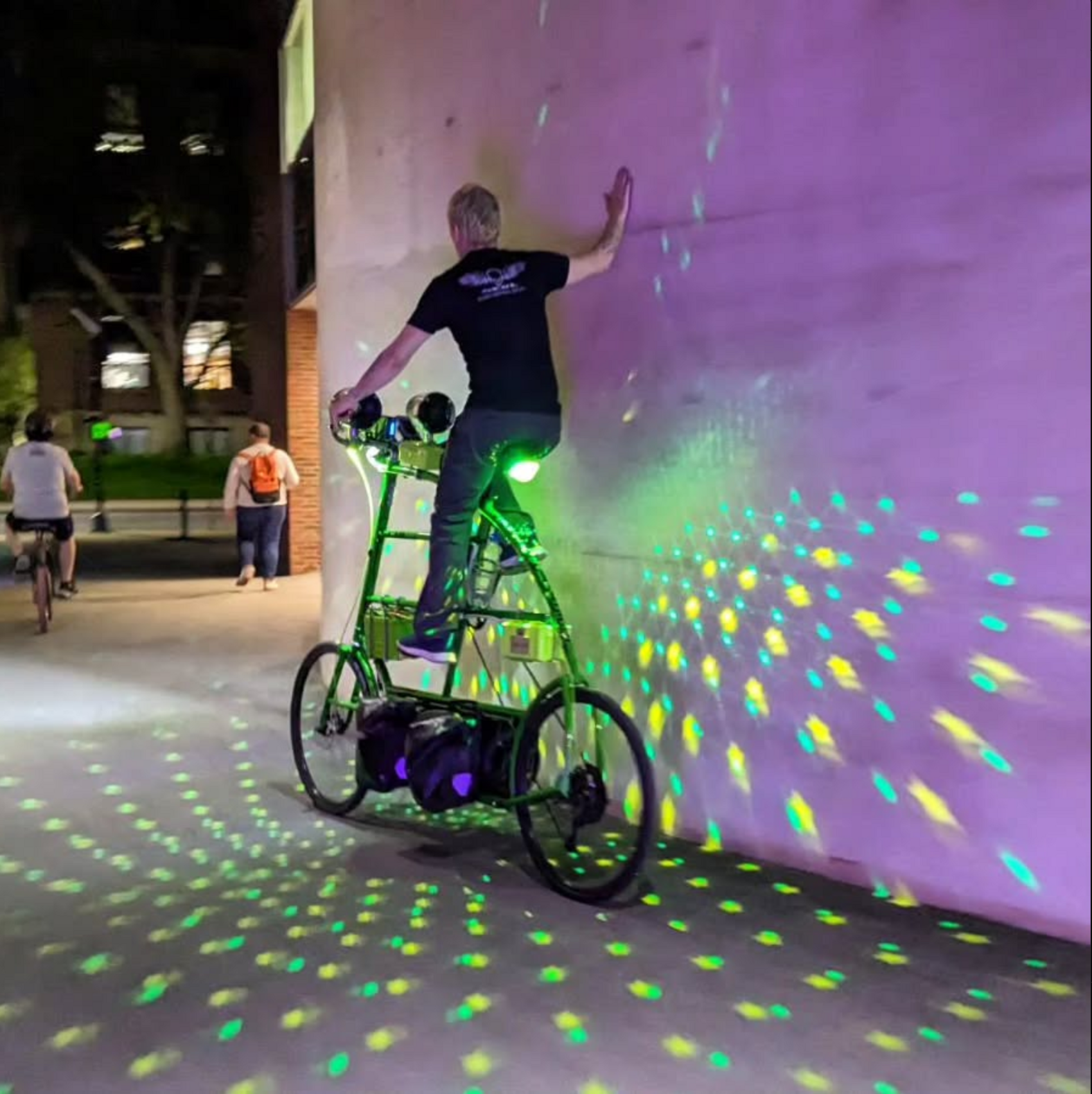
Since it's christening, I have logged over 1,000 official miles on over fifty SCUL missions, including three centuries. Note the addition of panniers — and the subwoofer on the other side.
Here's the first test of the lights and sound system in full-effect.
SCUL Trading Cards
2,700 and growing
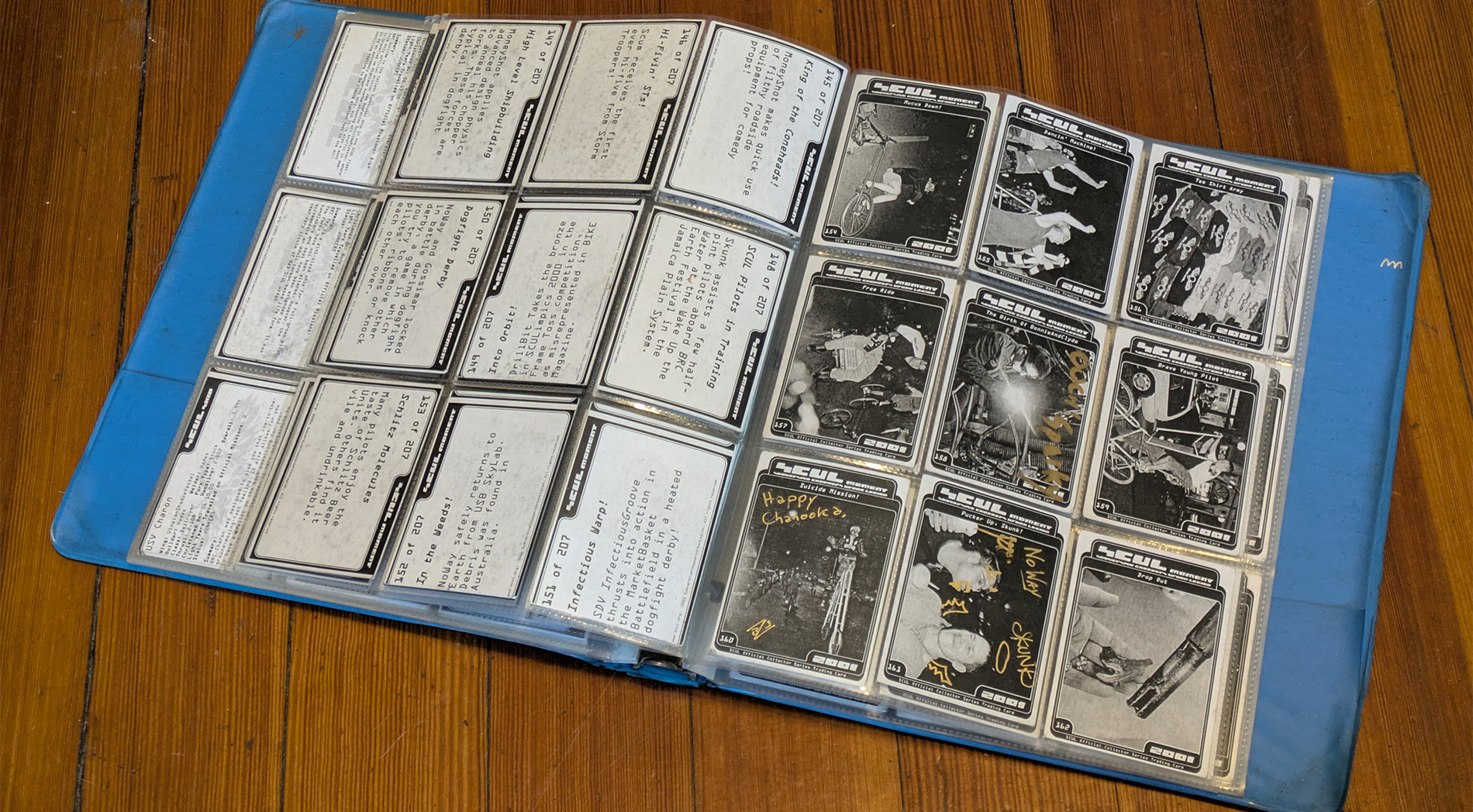
some autographed 2001 SCUL trading cards which aren't probably that collectable
In 2001 I made a set of 209 limited trading cards for the SCUL fleet. The cards were layed out one at a time, and I had to print all the cards in the set and randomize manually just to make one pack. Manually typing stats from web pages to InDesign files wasn't a sustainable method, especially since the stats were constantly changing. However the cards were a big hit — people loved to collect and trade them. I have a personal collection of these cards autographed by many SCUL pilots. When I created the first run of trading cards I decided that I shouldn't give myself a complete set. Collecting them is the fun part, so I bought my own randomized packs and traded with other pilots.

Twenty years later, I was able to use the online SCUL website database to generate randomly selected riders, bikes, and rides to create print-ready trading card packs. This allows for an instant randomized pack of three pilot, three ships, and three missions from a set of over 2,700 cards. Not only that, the cards are compiled from website data collected the moment they are printed, which means when a pilot's stats update so does their personal trading card. This puts the number of possible cards estimated at hundreds of thousands of variations.
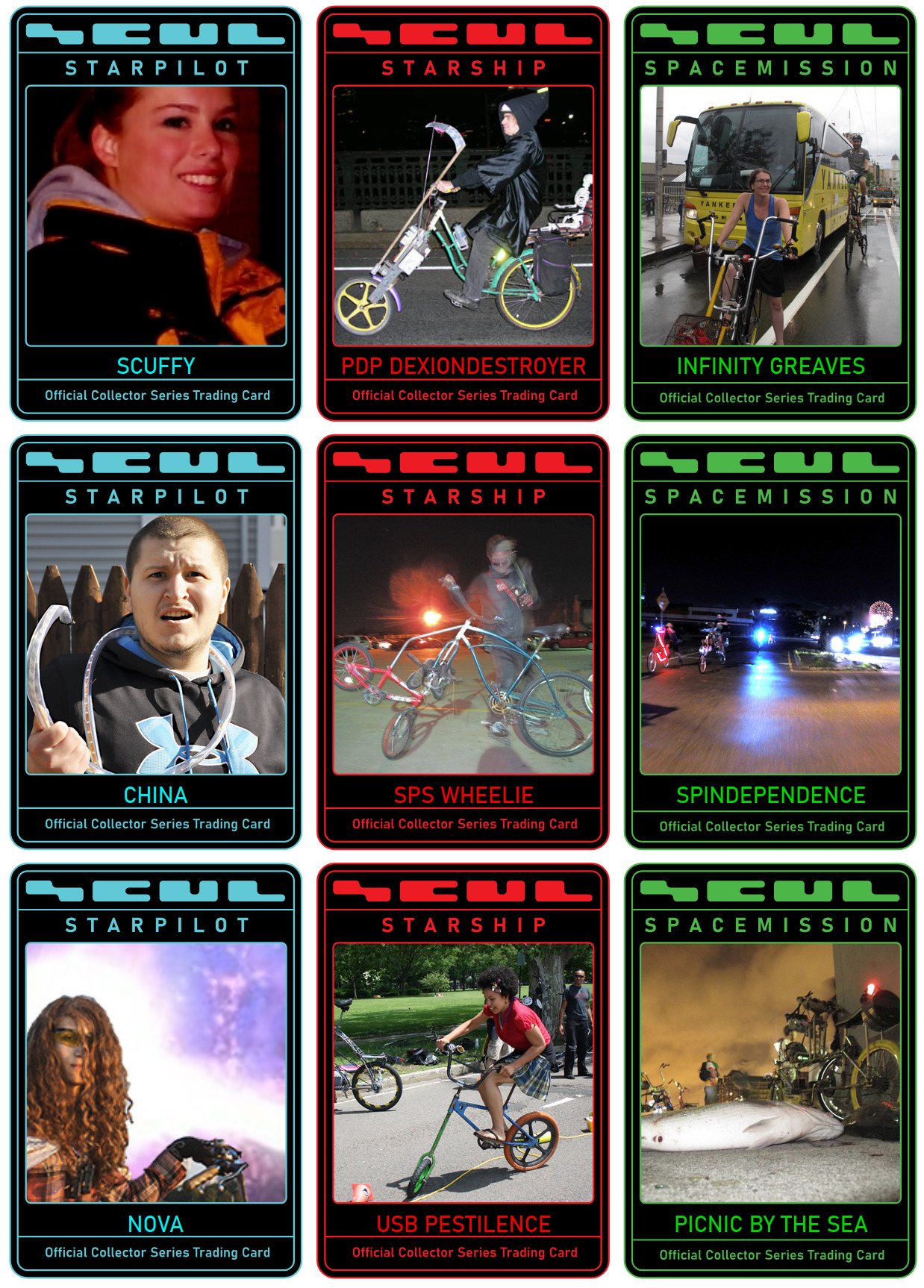
Styling elements for print with double-sided printing and very tight registration makes for some very tricky CSS styling and even customization for the printer, but the project was a big success and well worth the effort.
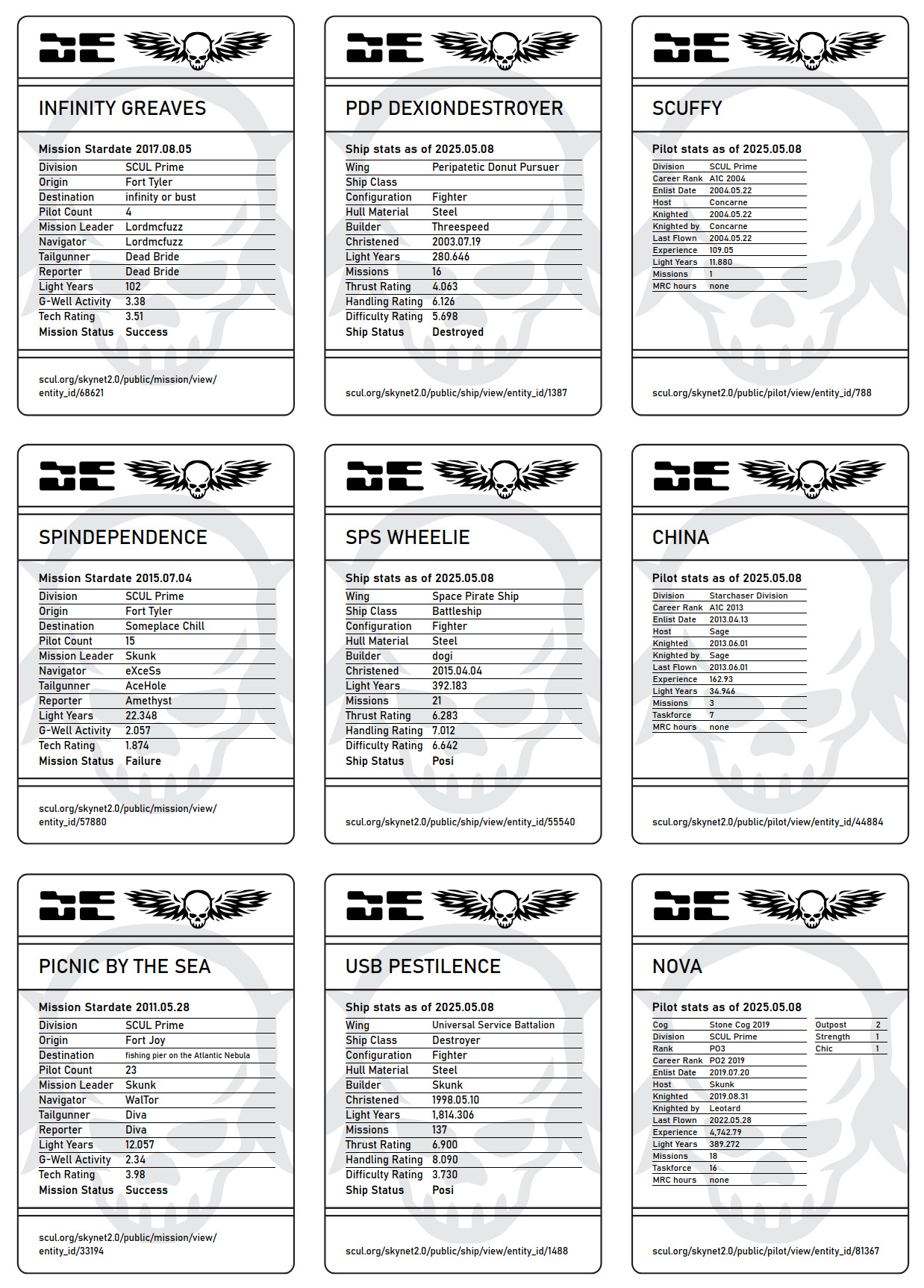
Each pilot, ship, and mission card contains complex and current statistical data, along with a link to their relevant webpage.
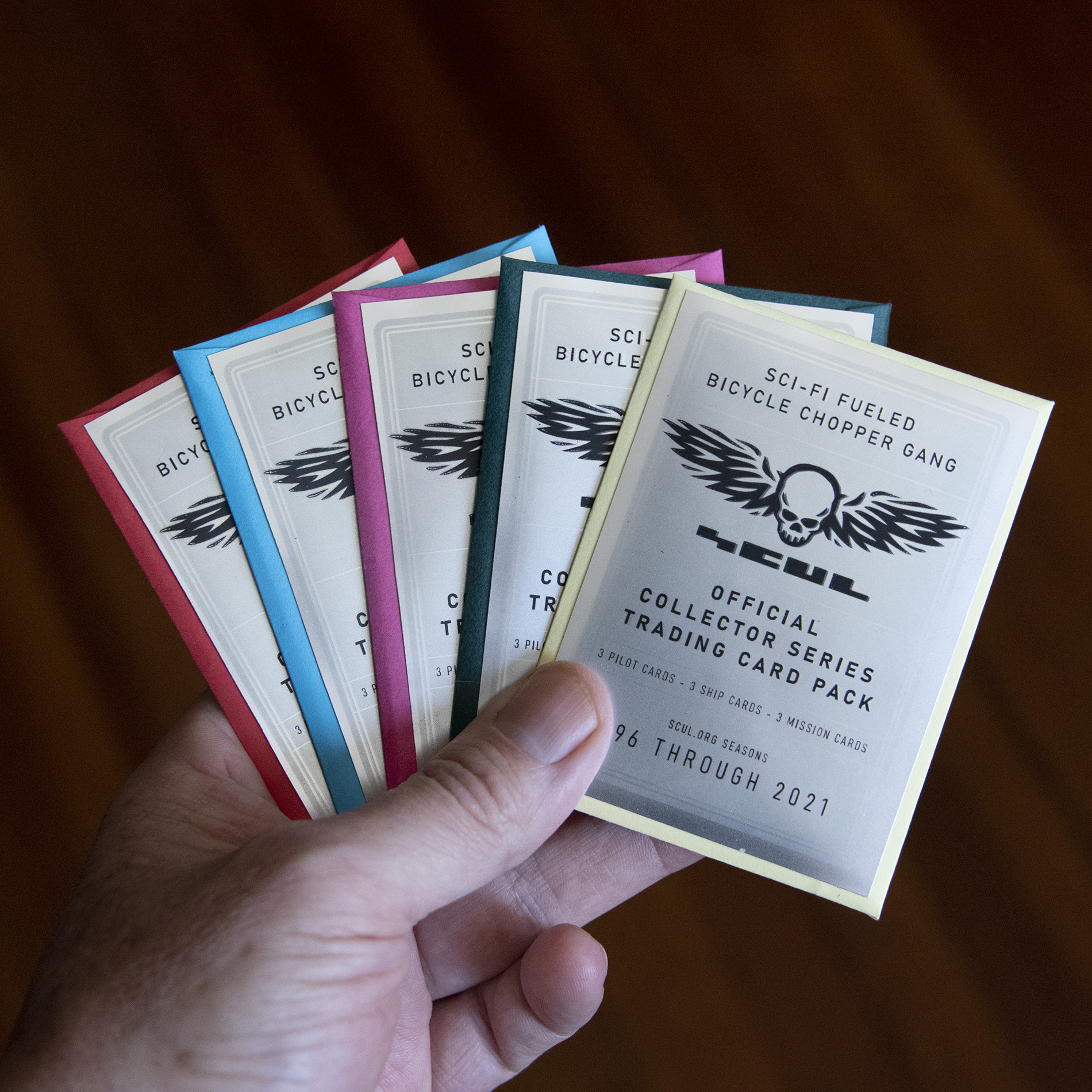
The original card pack wrappers were printed on yellow paper, cut and folded around the pack, which contained nine cards, a sticker version of a card, and gum. The new wrappers are sourced envelopes and a silver foil sticker print to seal it, which are much easier to make.

Every SCUL pilot page, ship page, or mission page with an image has their own corresponding SCUL trading card.
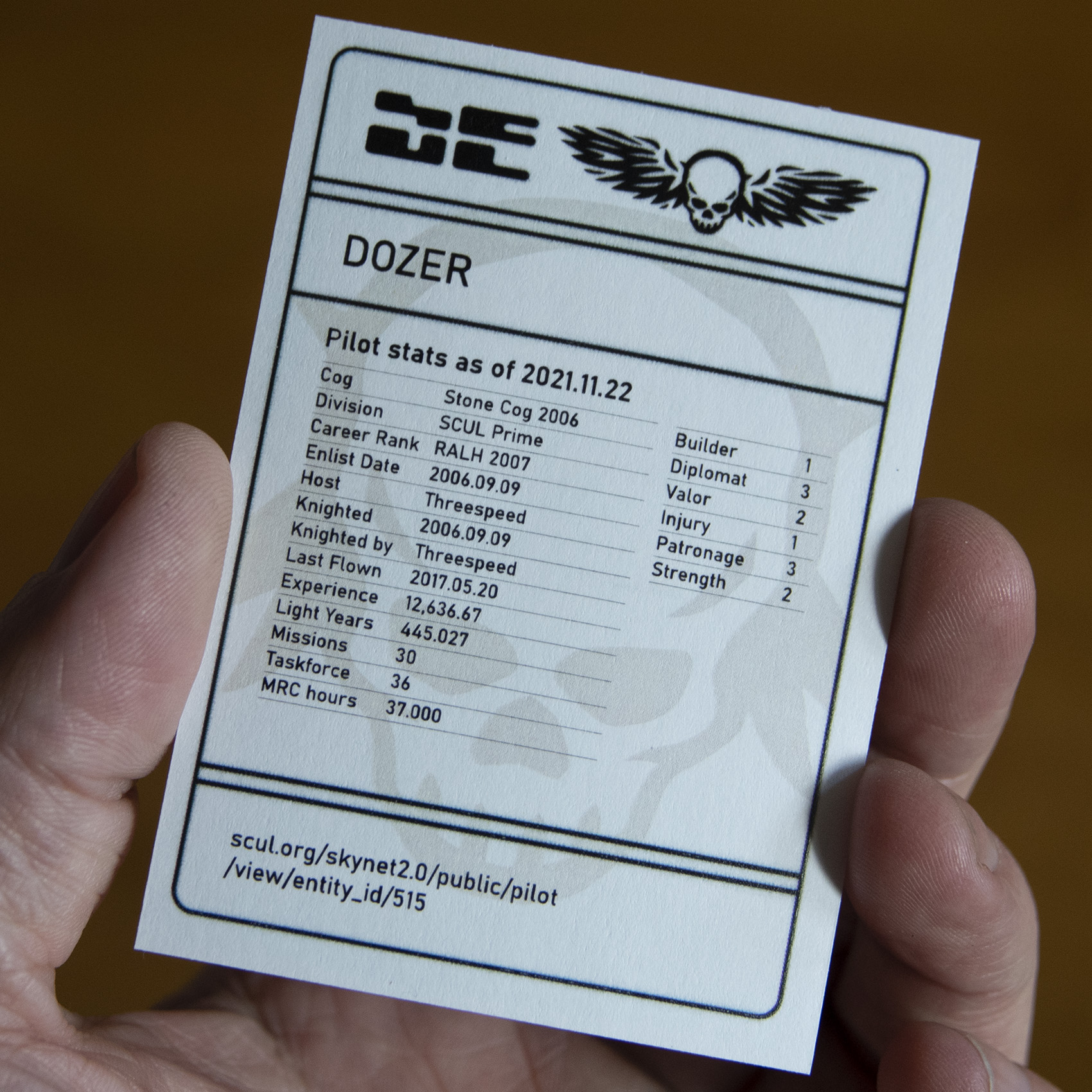
Thanks to our extensive data retention, the total number of trading cards exceed 2,700 — many of which have stats that update to time of printing, giving a snapshot in time for active ships and pilots.

People can order normal, randomized silver packs, or custom-pick their card set pack at the gold-level.
I've heard of people making trading cards for their team, and some even make a few token cards as a laugh — but we actually followed through with the idea and made it a reality.
Select SCUL Portfolio
Halloween Ride Poster
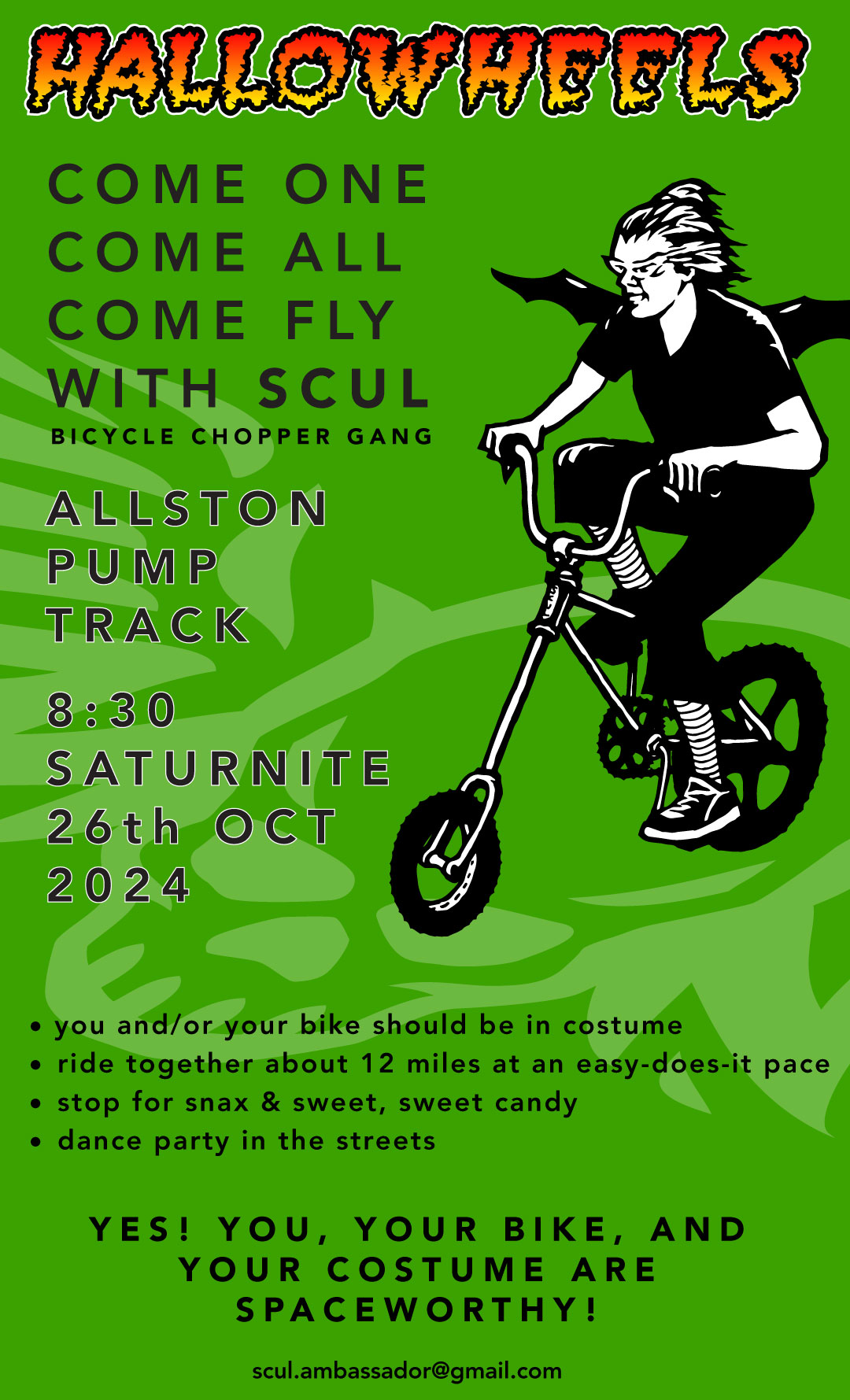
This print poster is used to promote SCUL's annual public Halloween ride: each season I repurpose the design by updating colorways, which works well for an annual event. We've drawn people from all over New England for this ride.
Orbital Pass
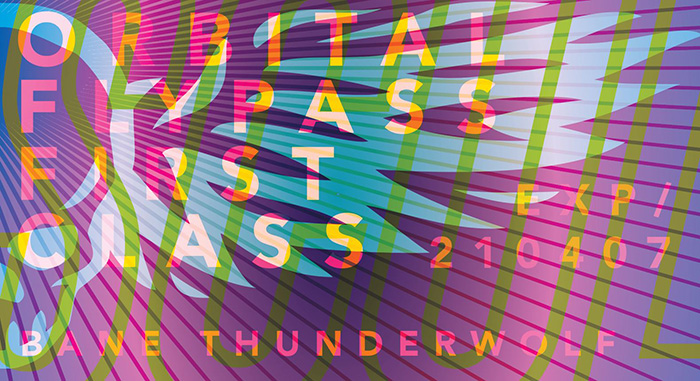
SCUL pilots can get a seasonal 'orbital flypass' which covers all mission dues for one pilot for one orbit around the sun. As proof of purchase, they are issued these fancy laminated cards.
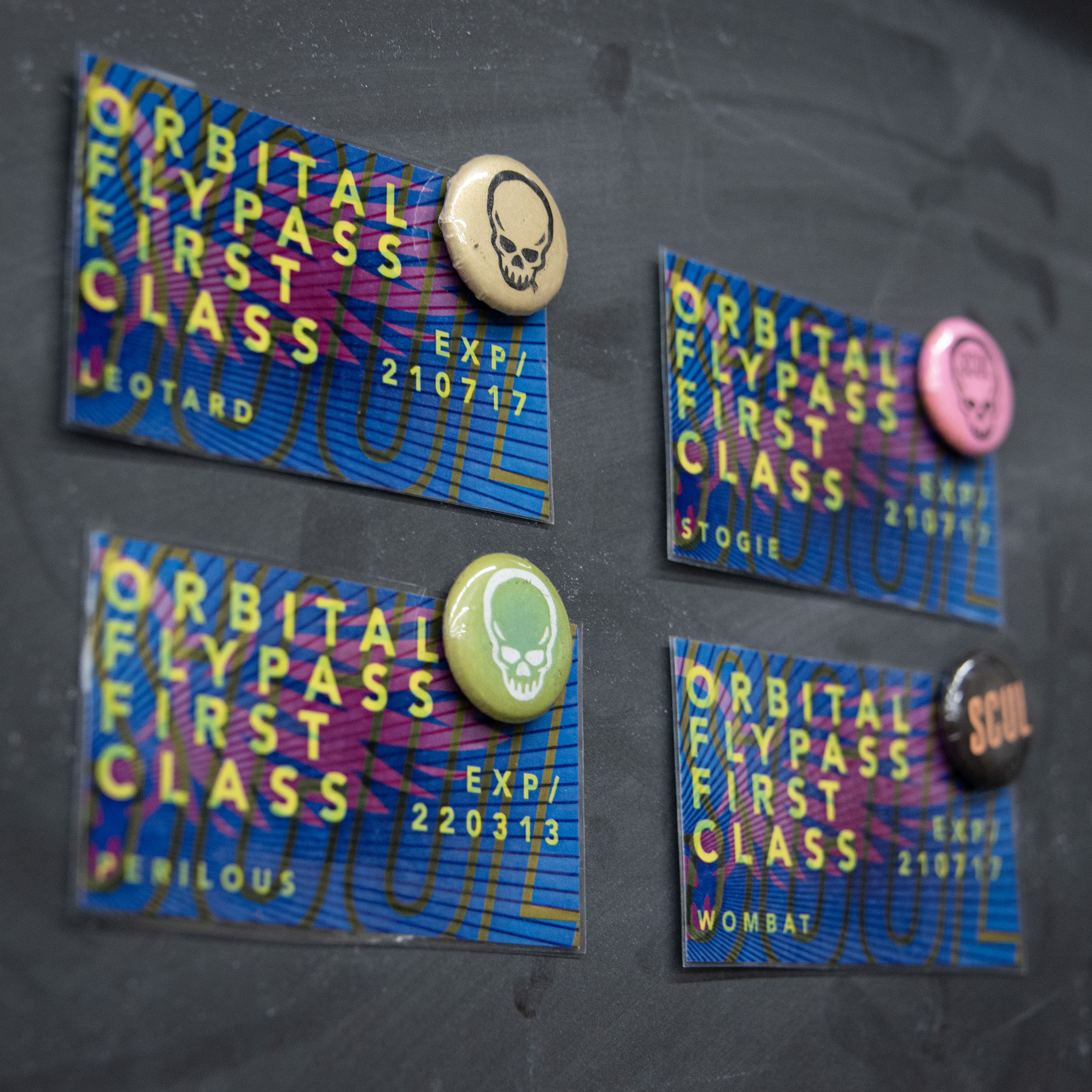
The designs were updated each season with the collector in mind - some pilots fly for decades!
Cup Crusher
Playful Illustrations
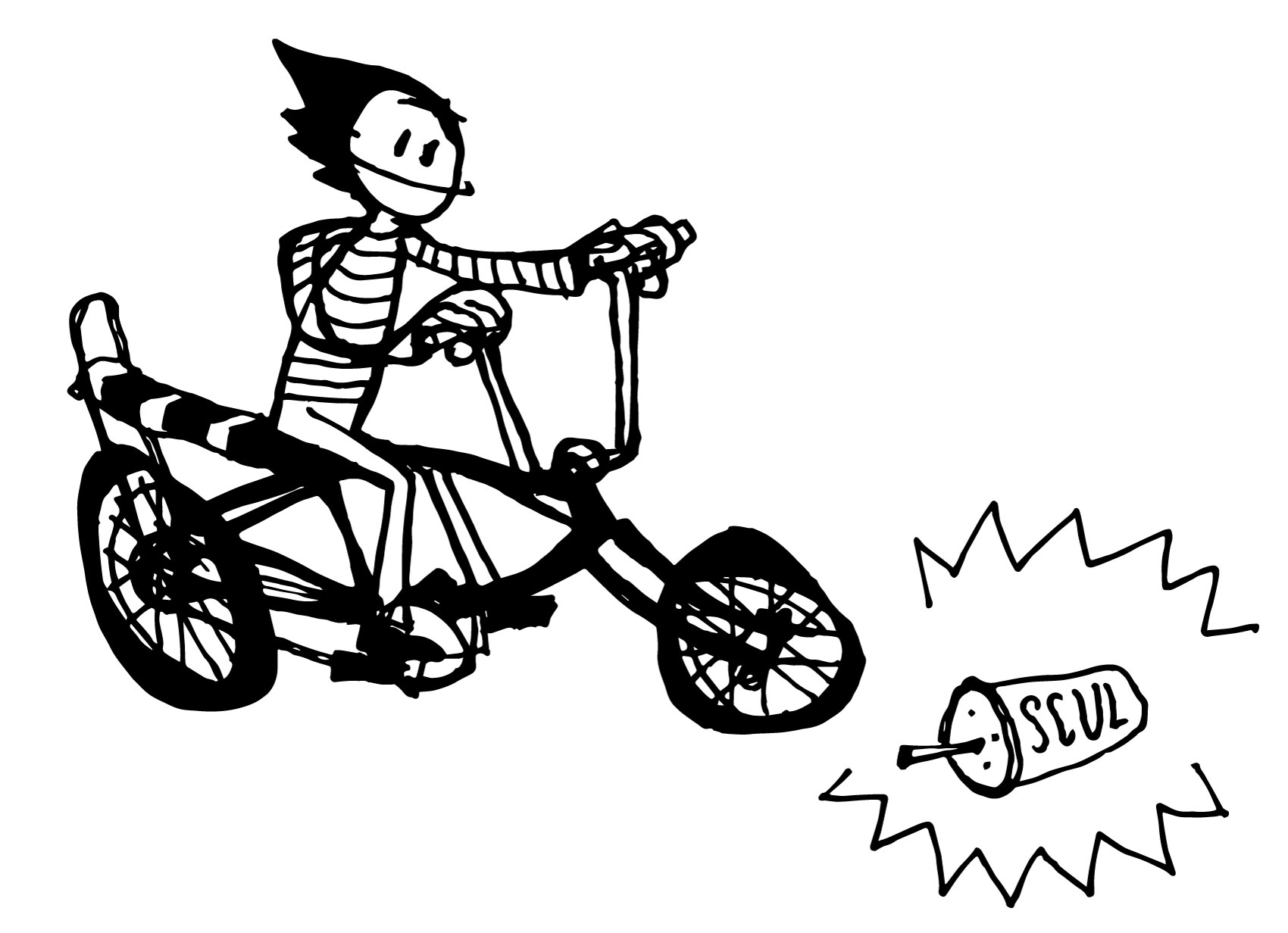
I made a half-dozen of these doodles to be used for cheap stickers: this one is a good representation of the playful, loosely inked style.
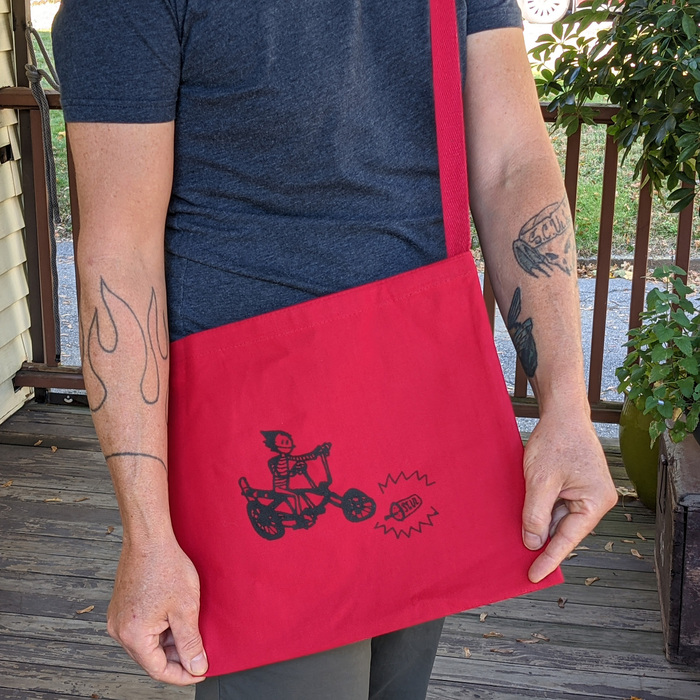
Recently the 'cup-crusher' made the big-time as a tee-shirt and musette bag design.
I'd like to help you with your project.
Let's build something interesting together..
